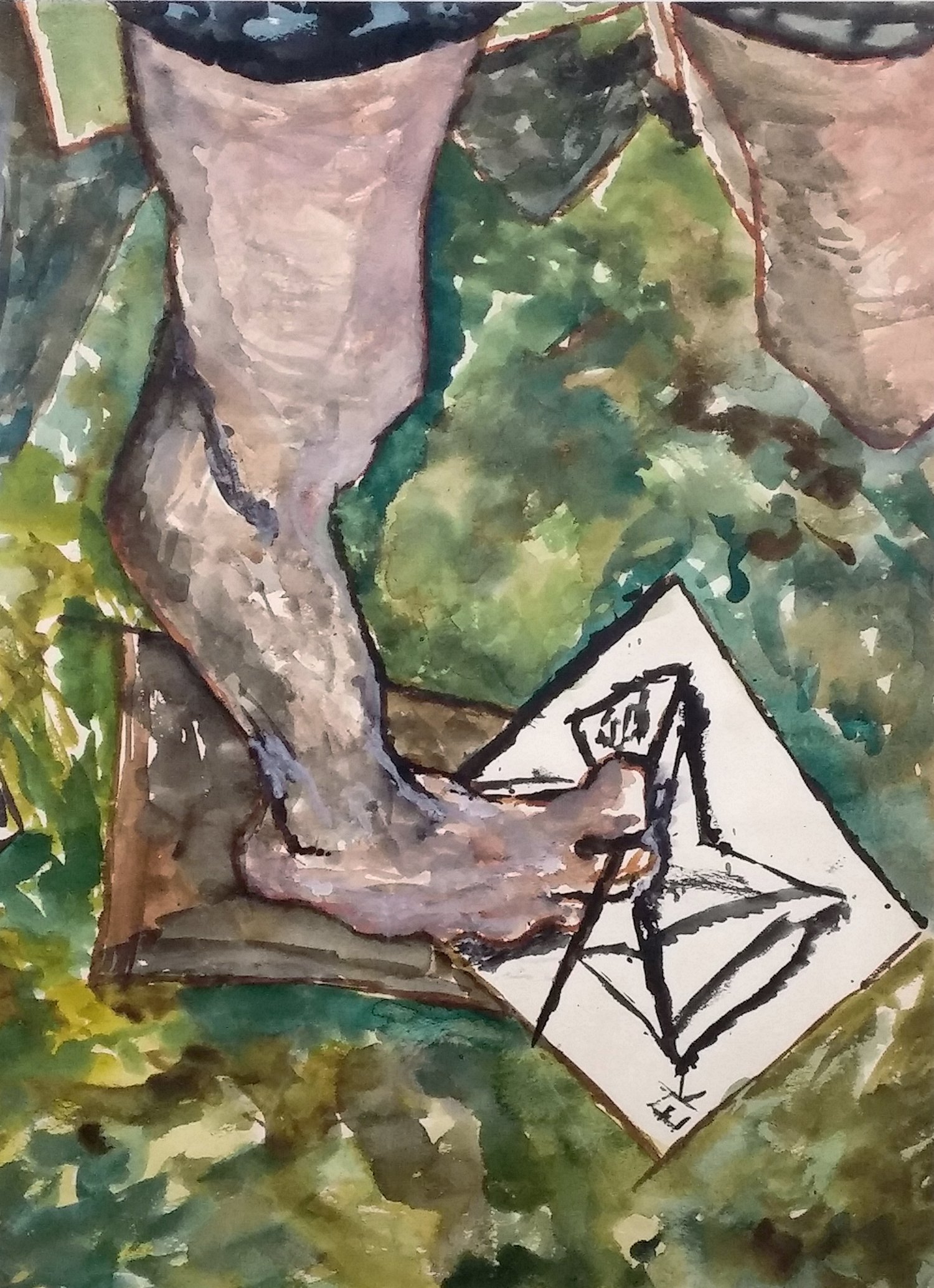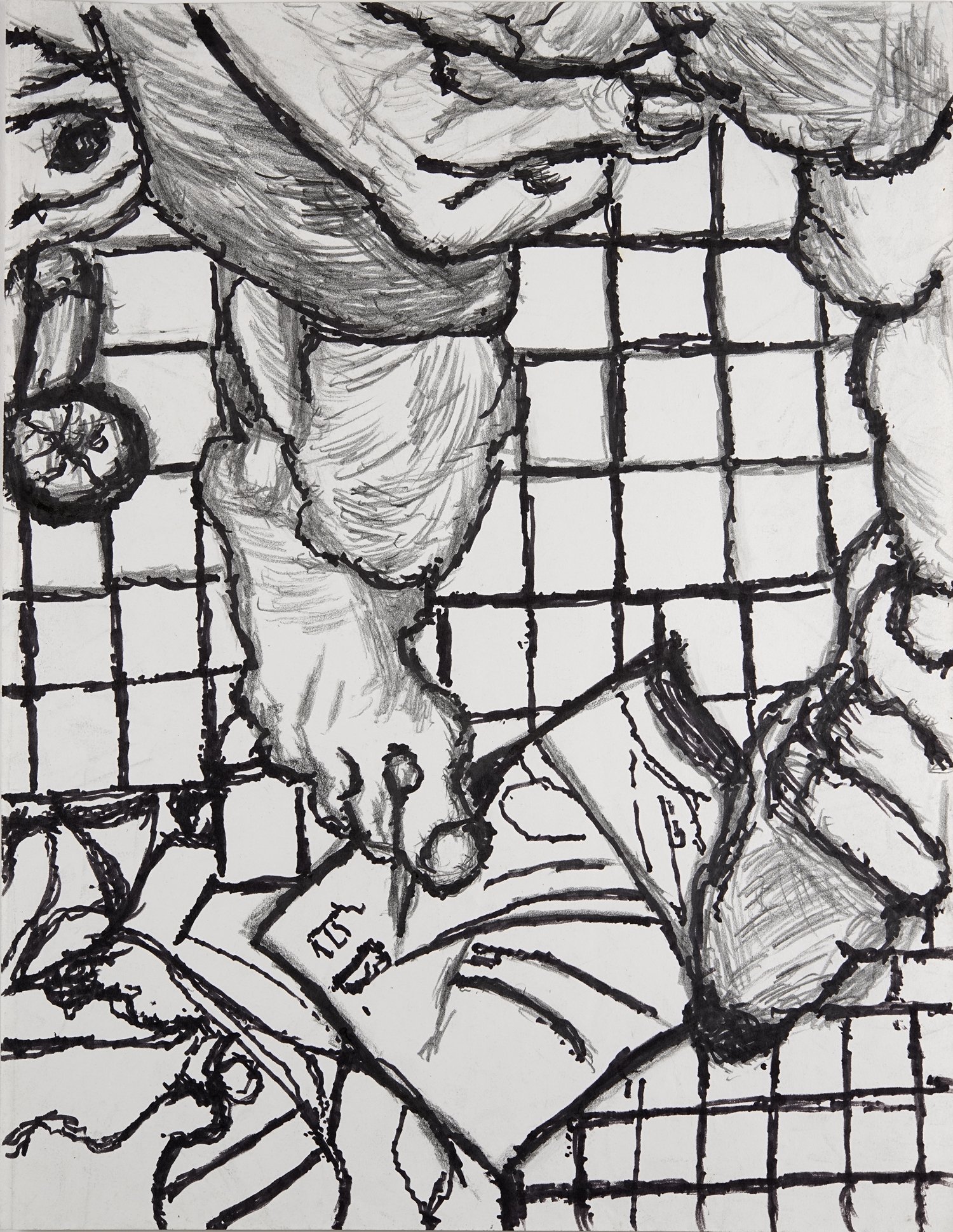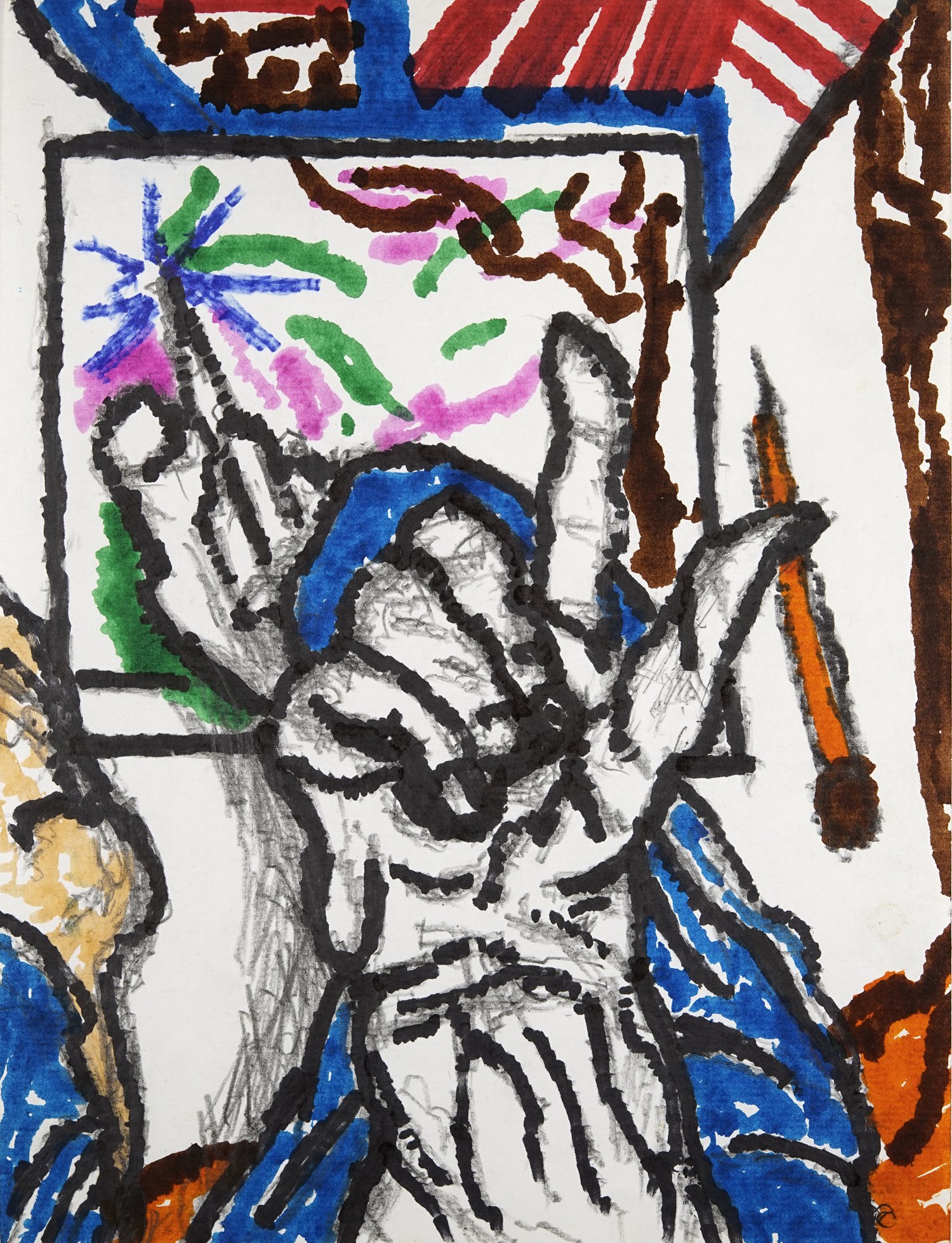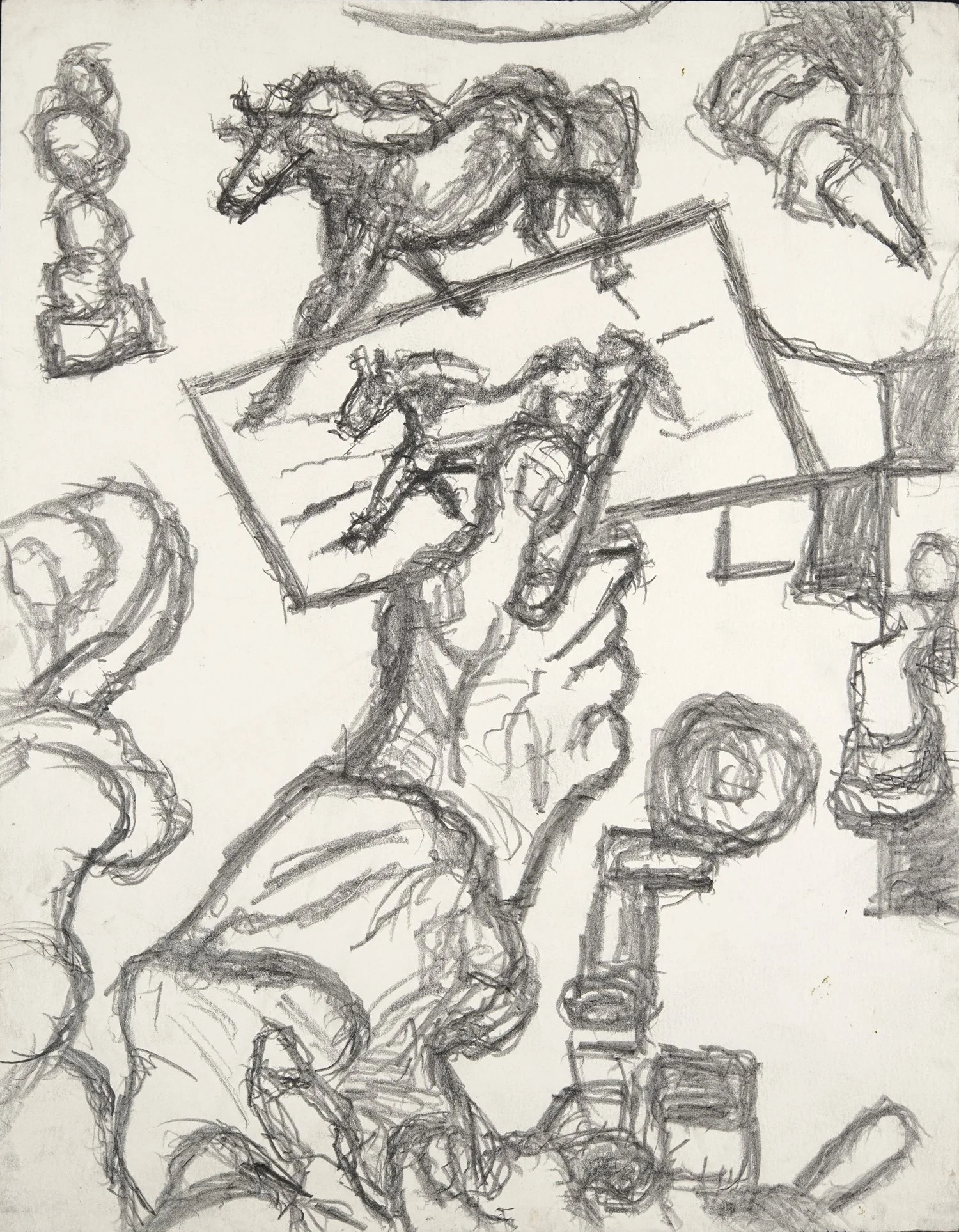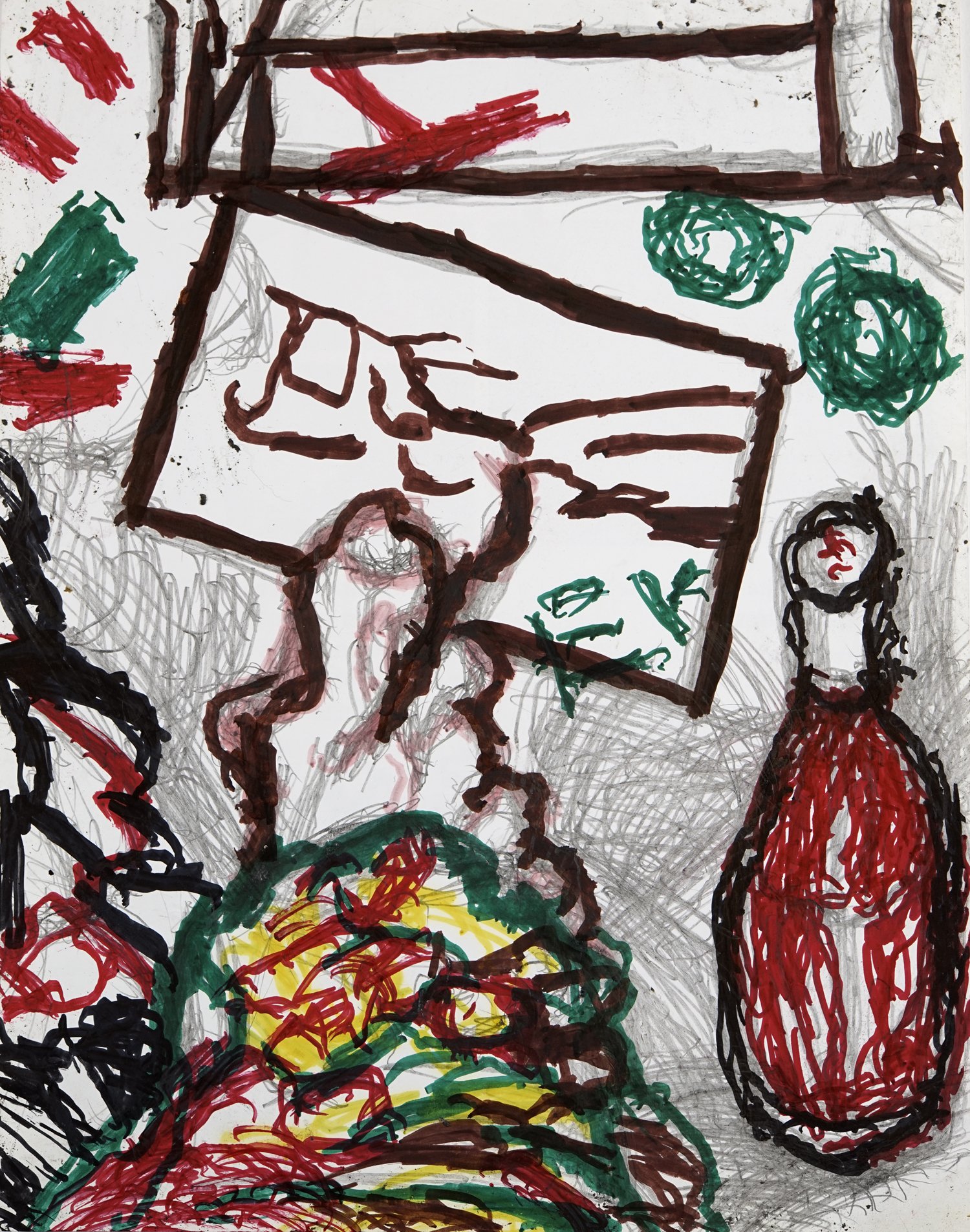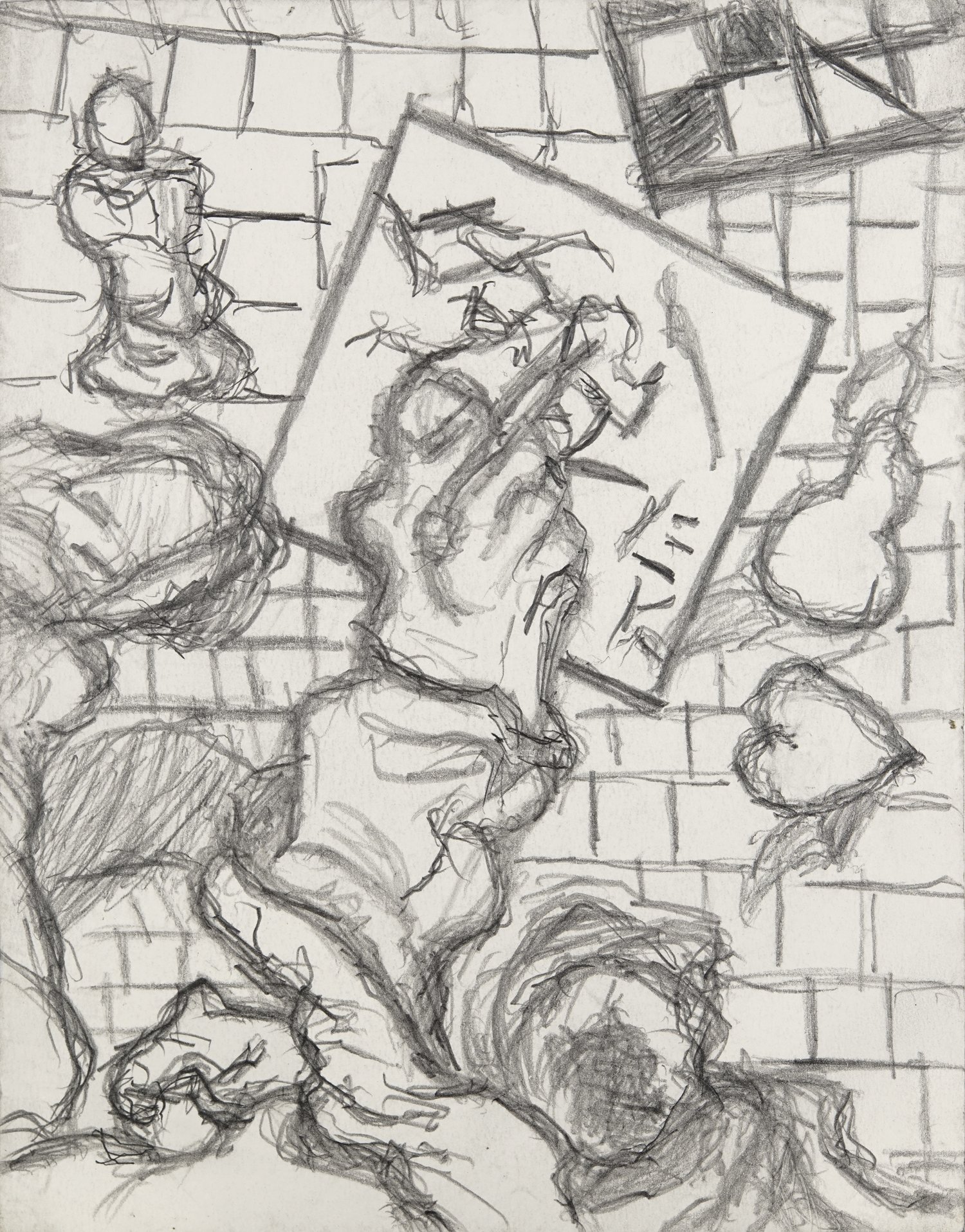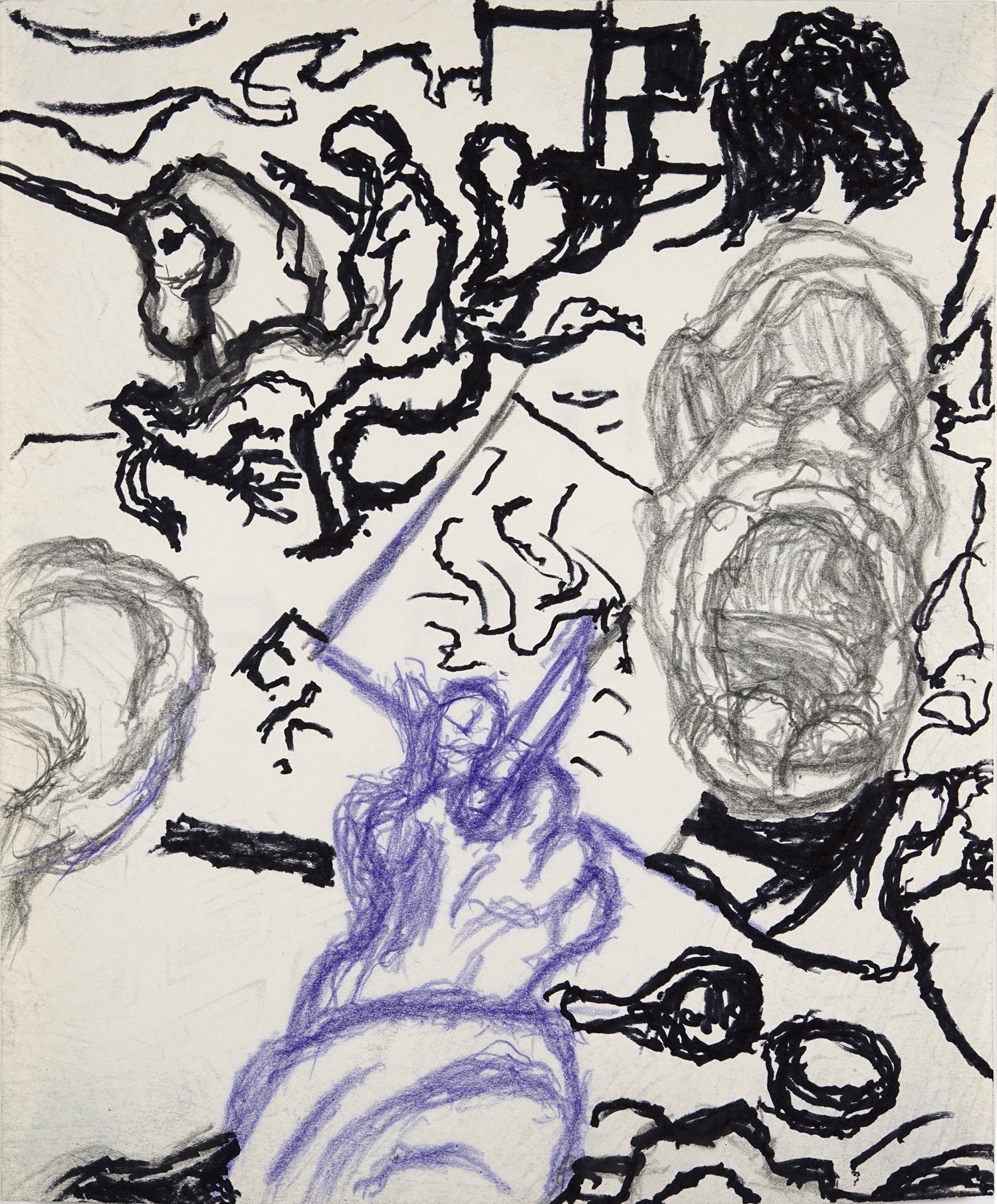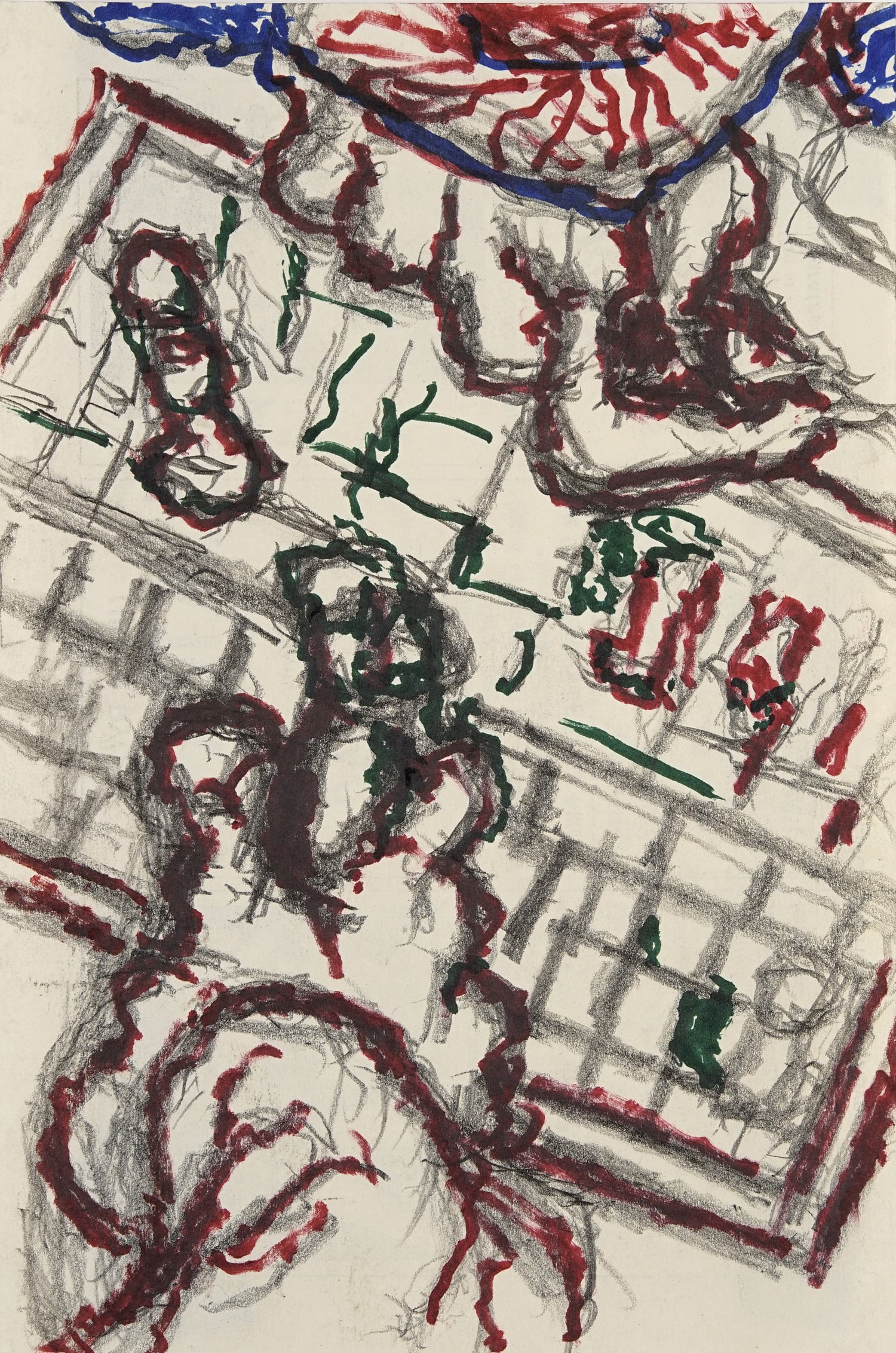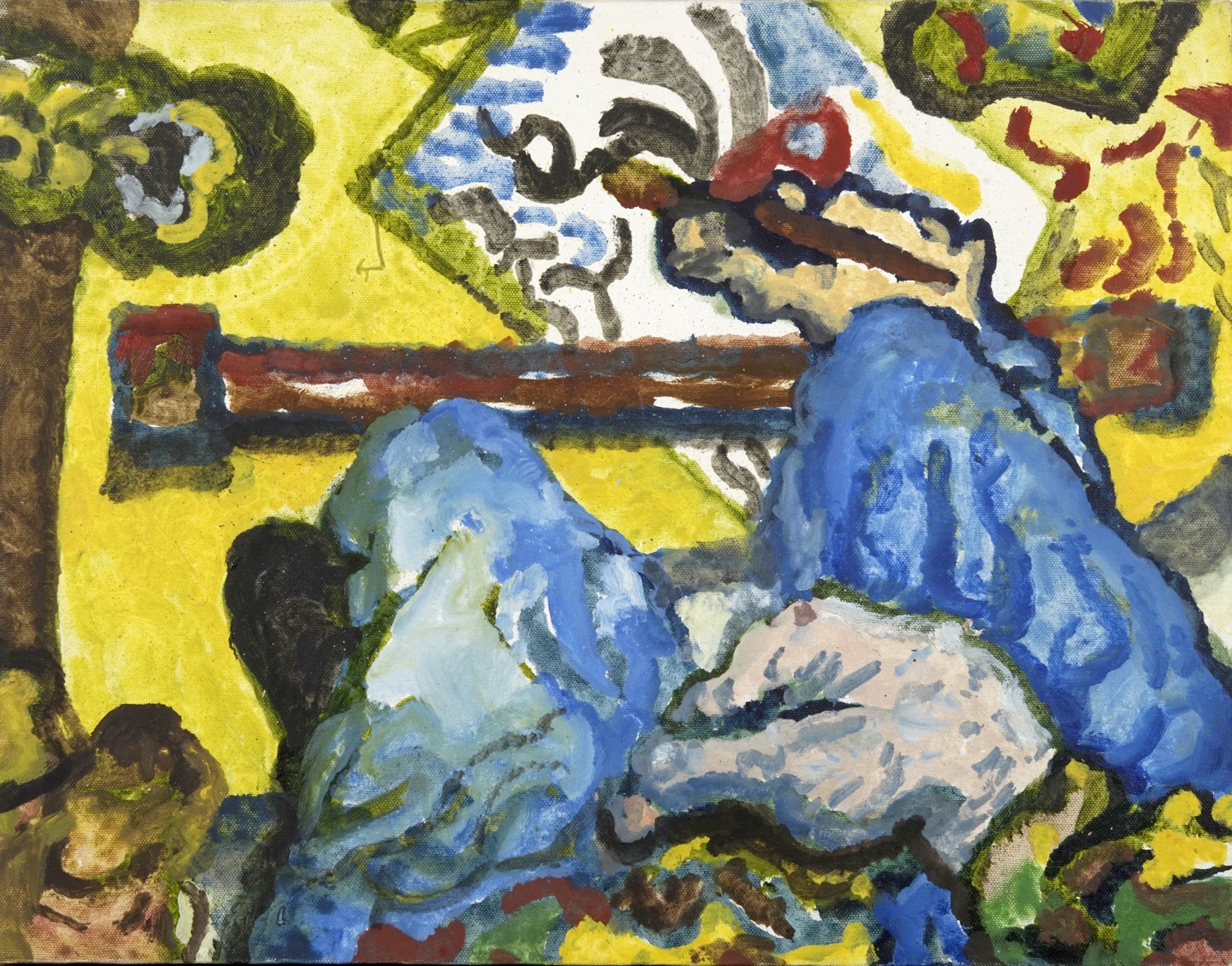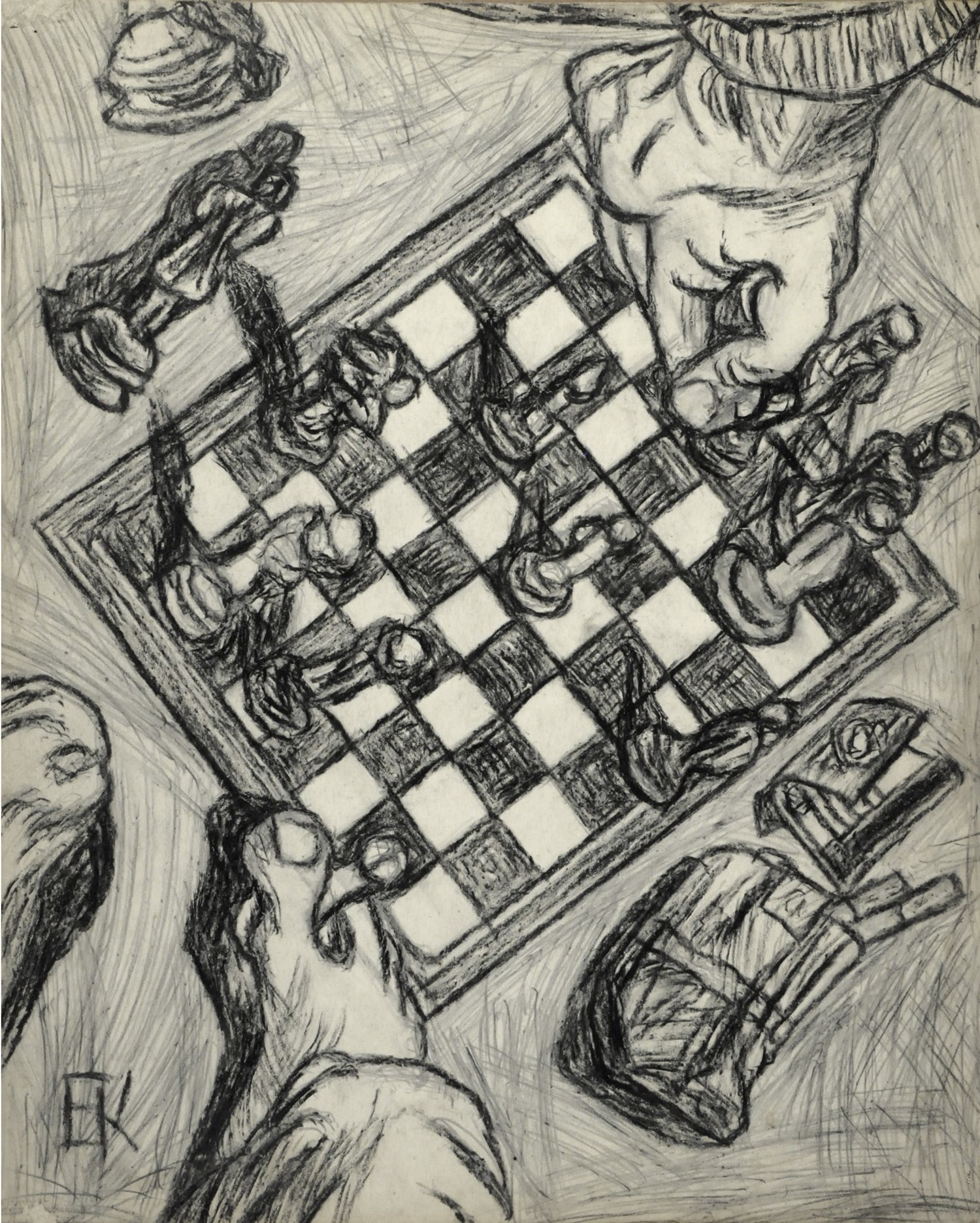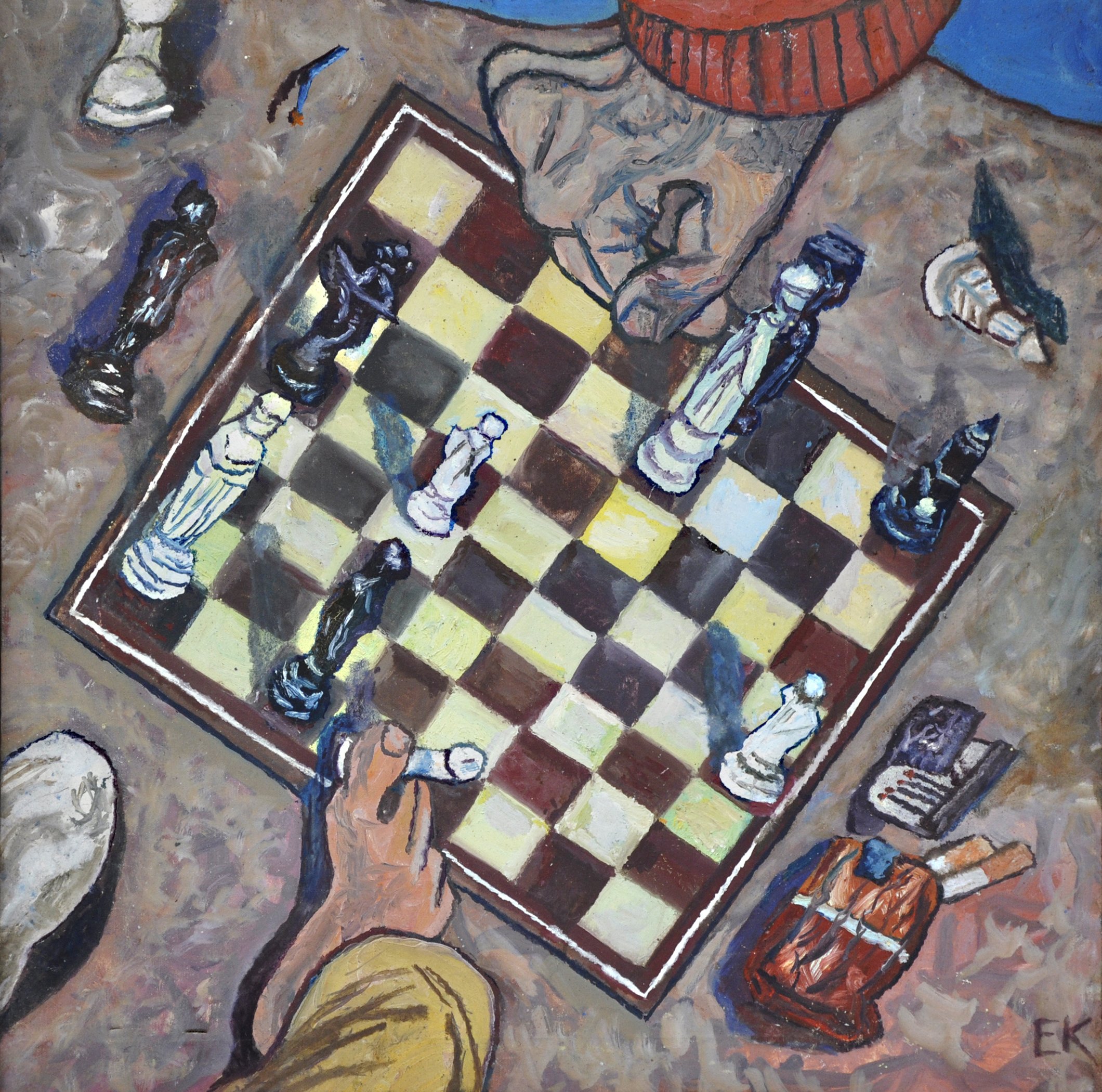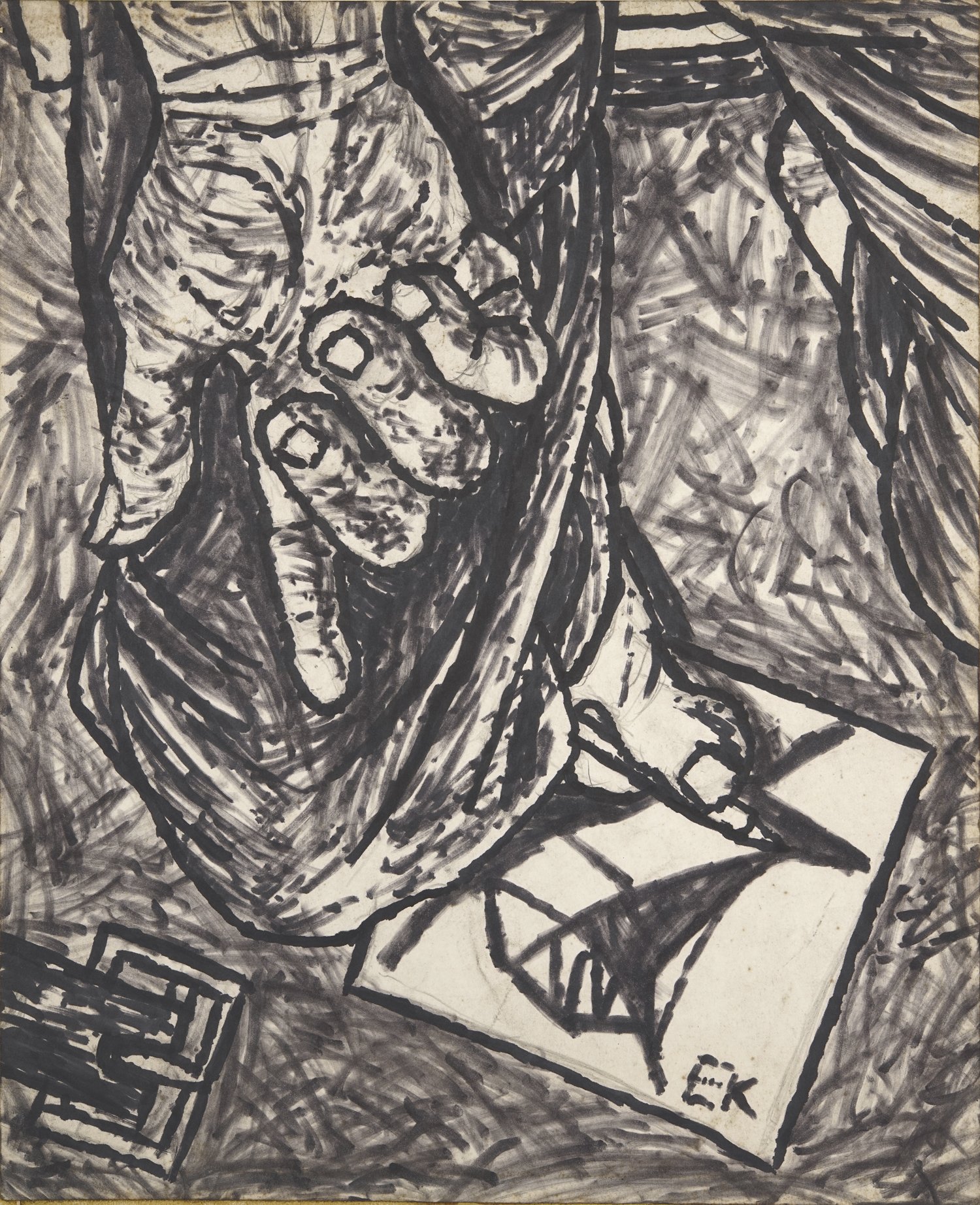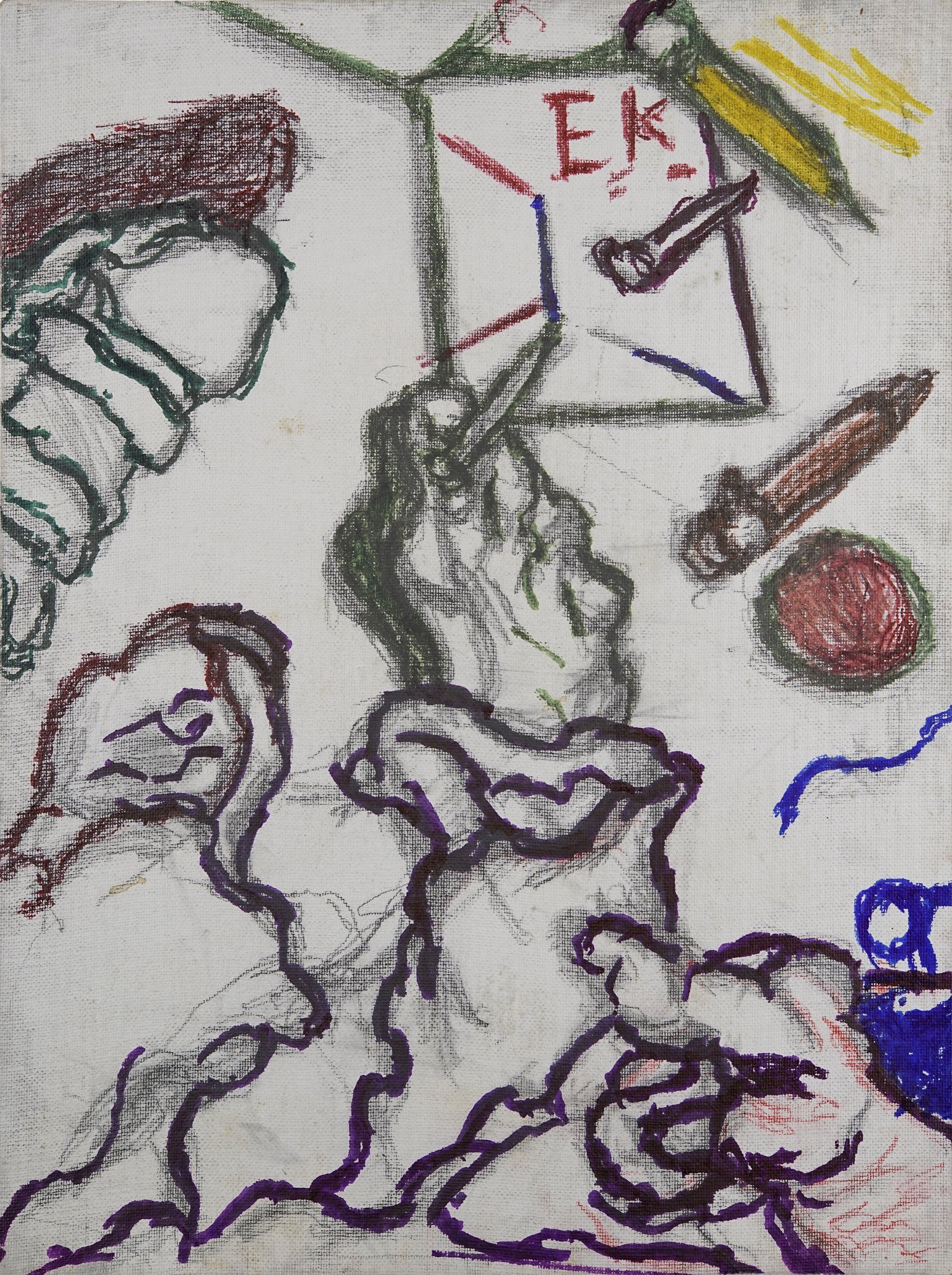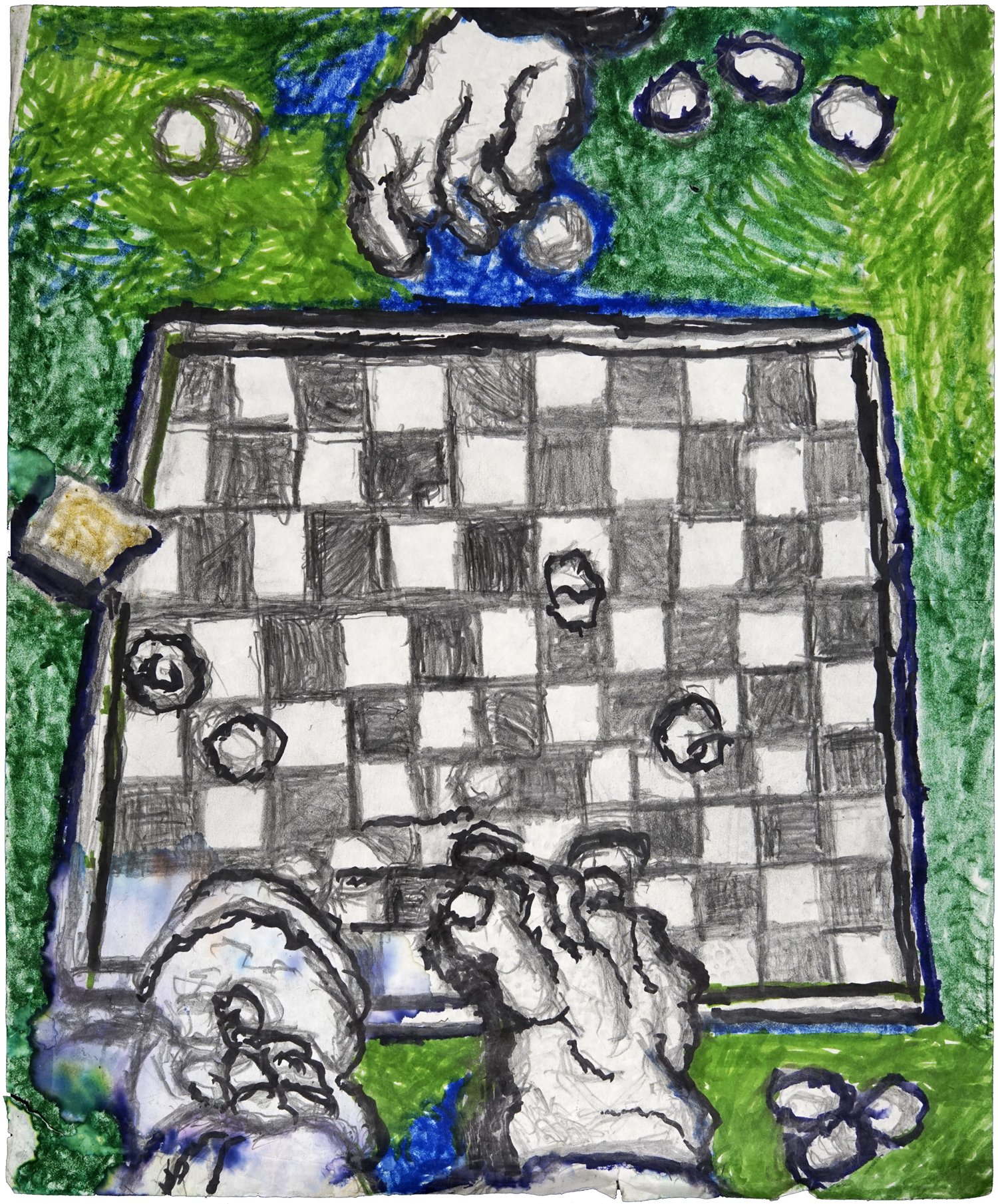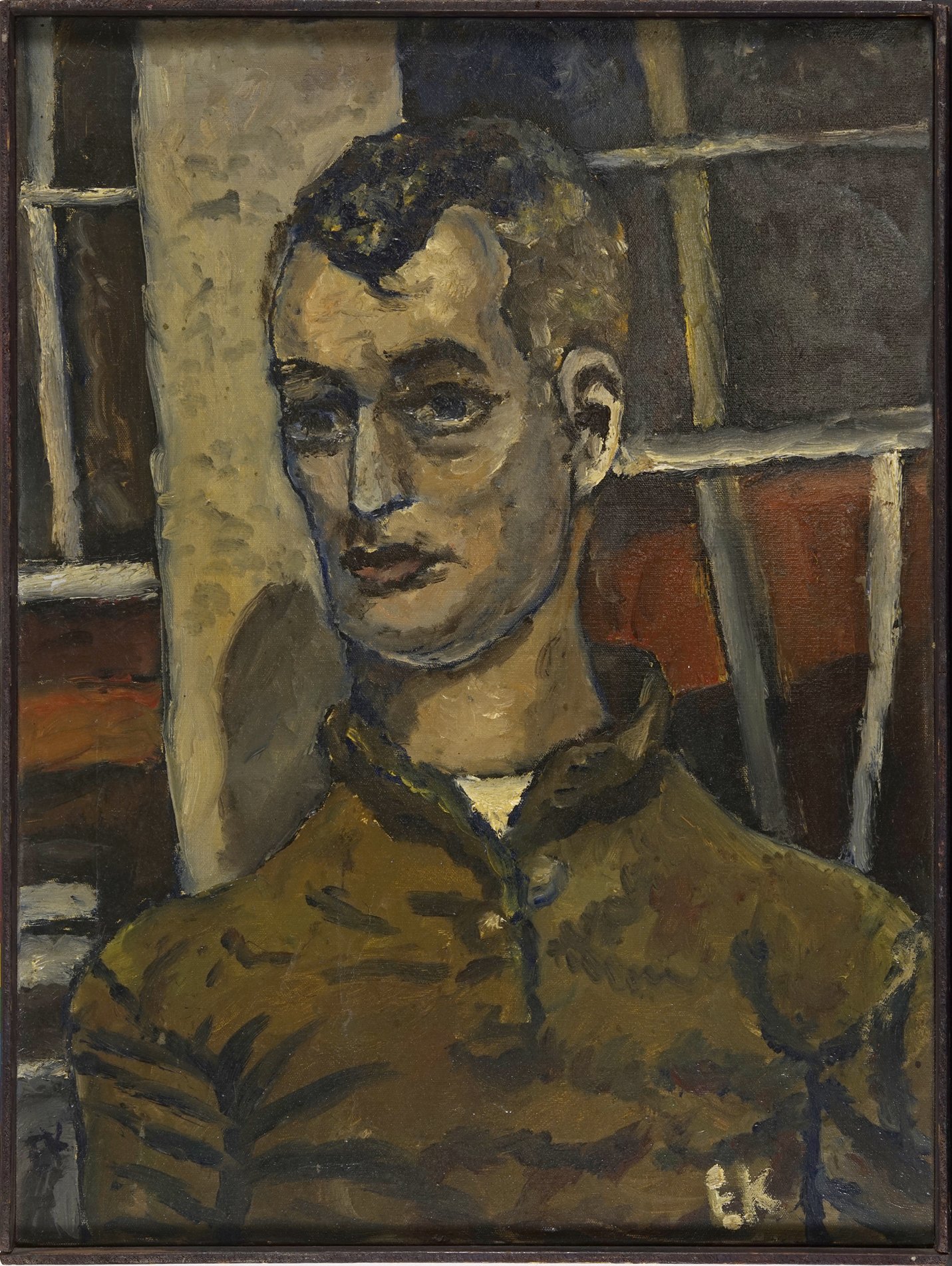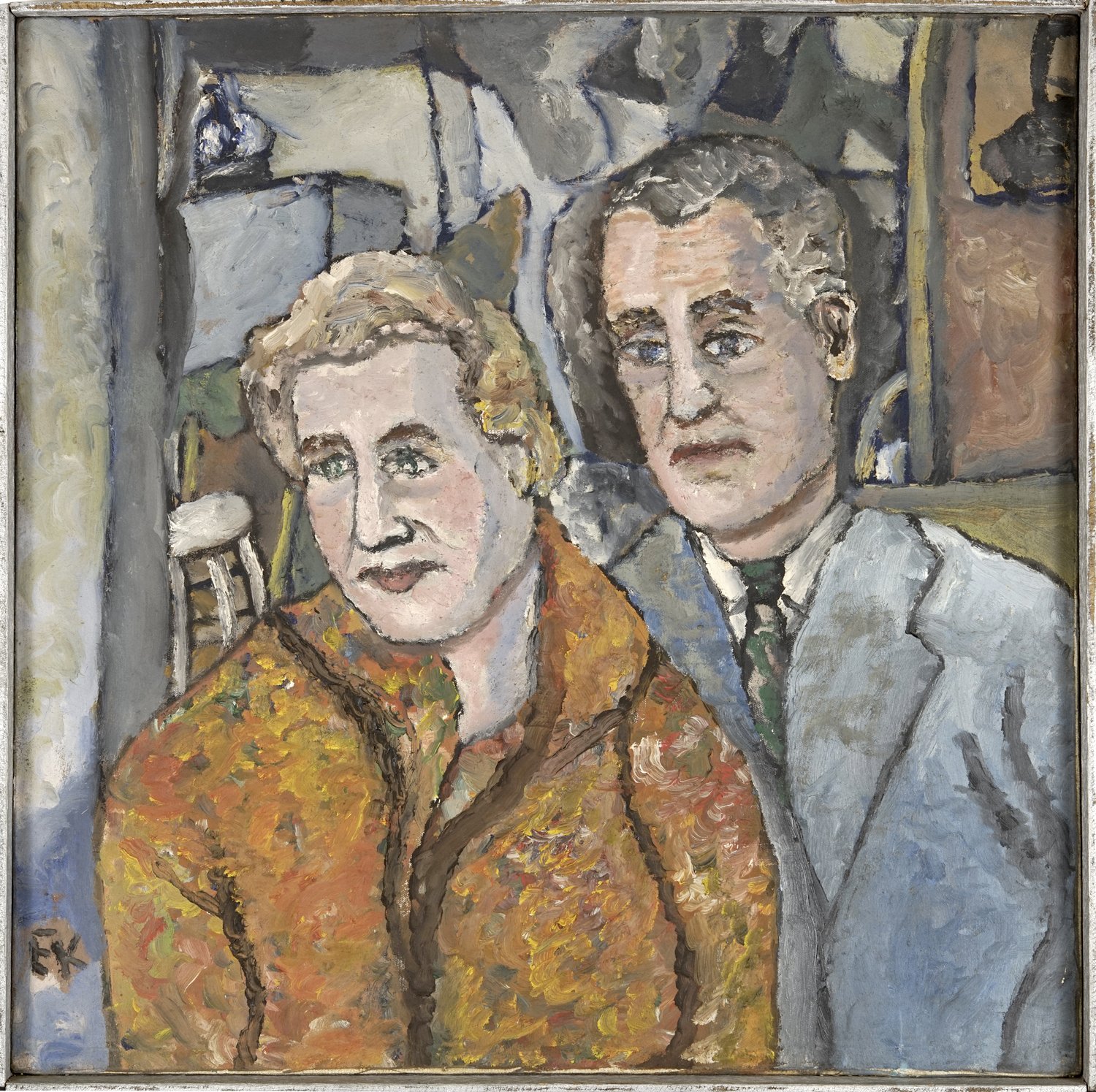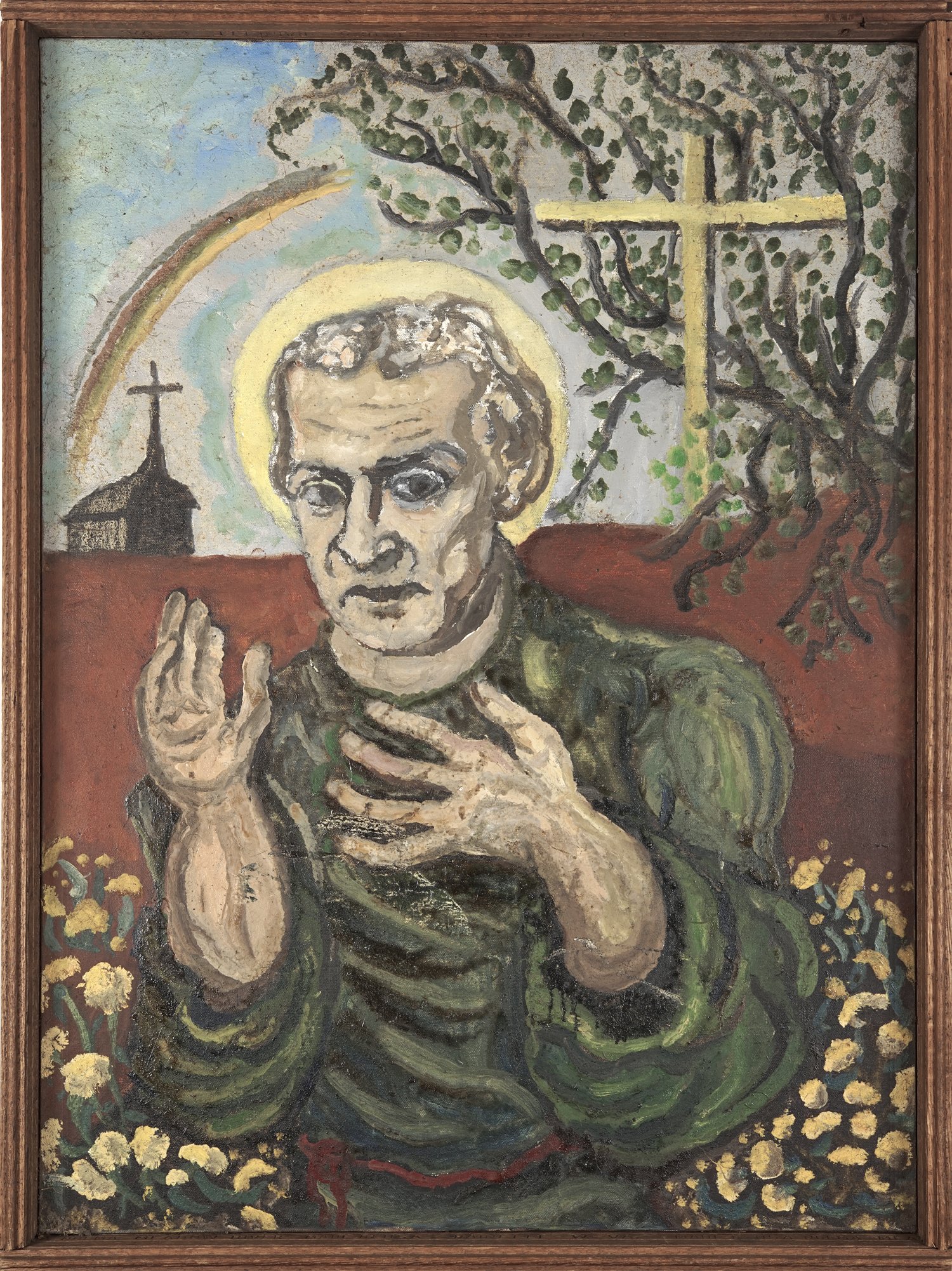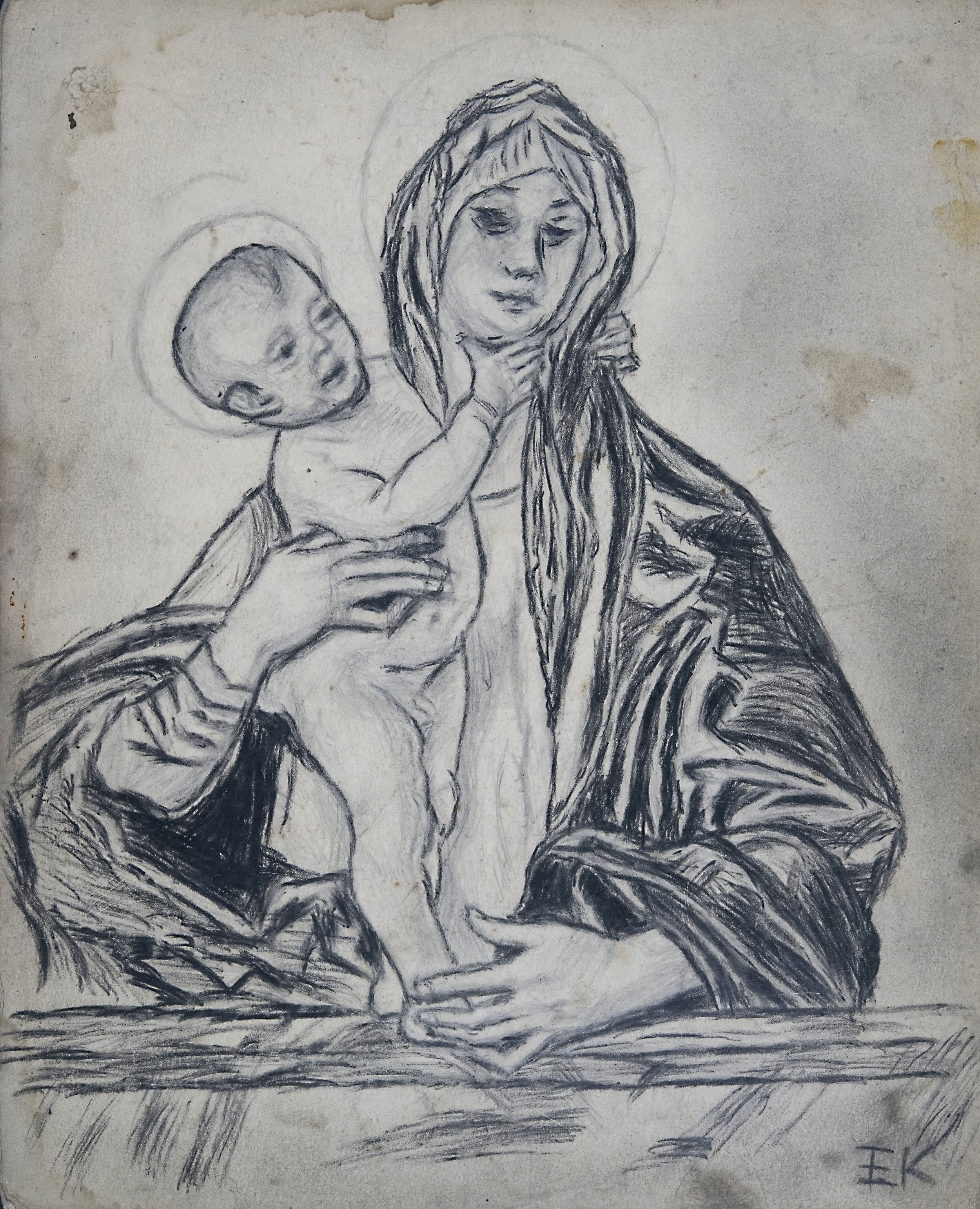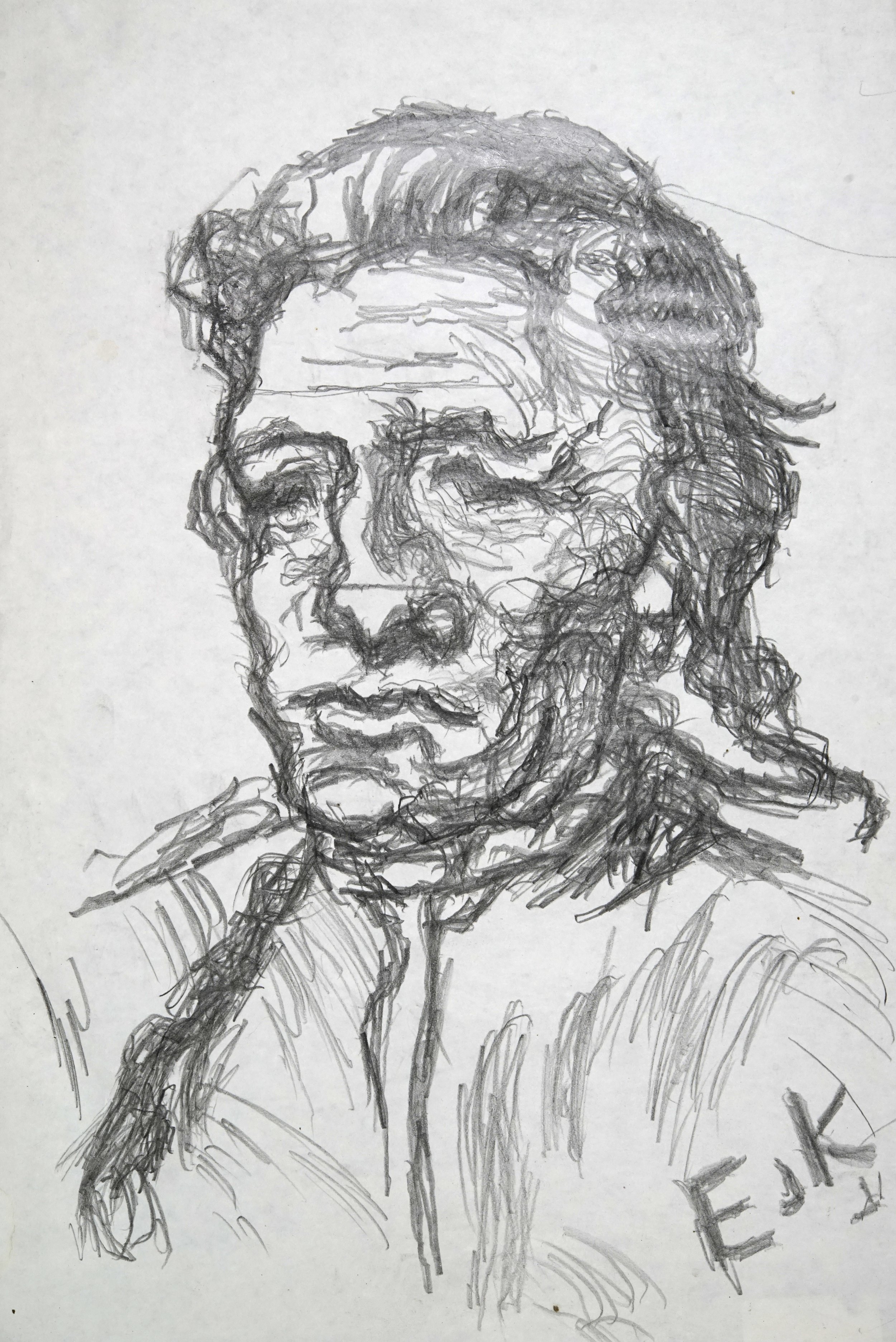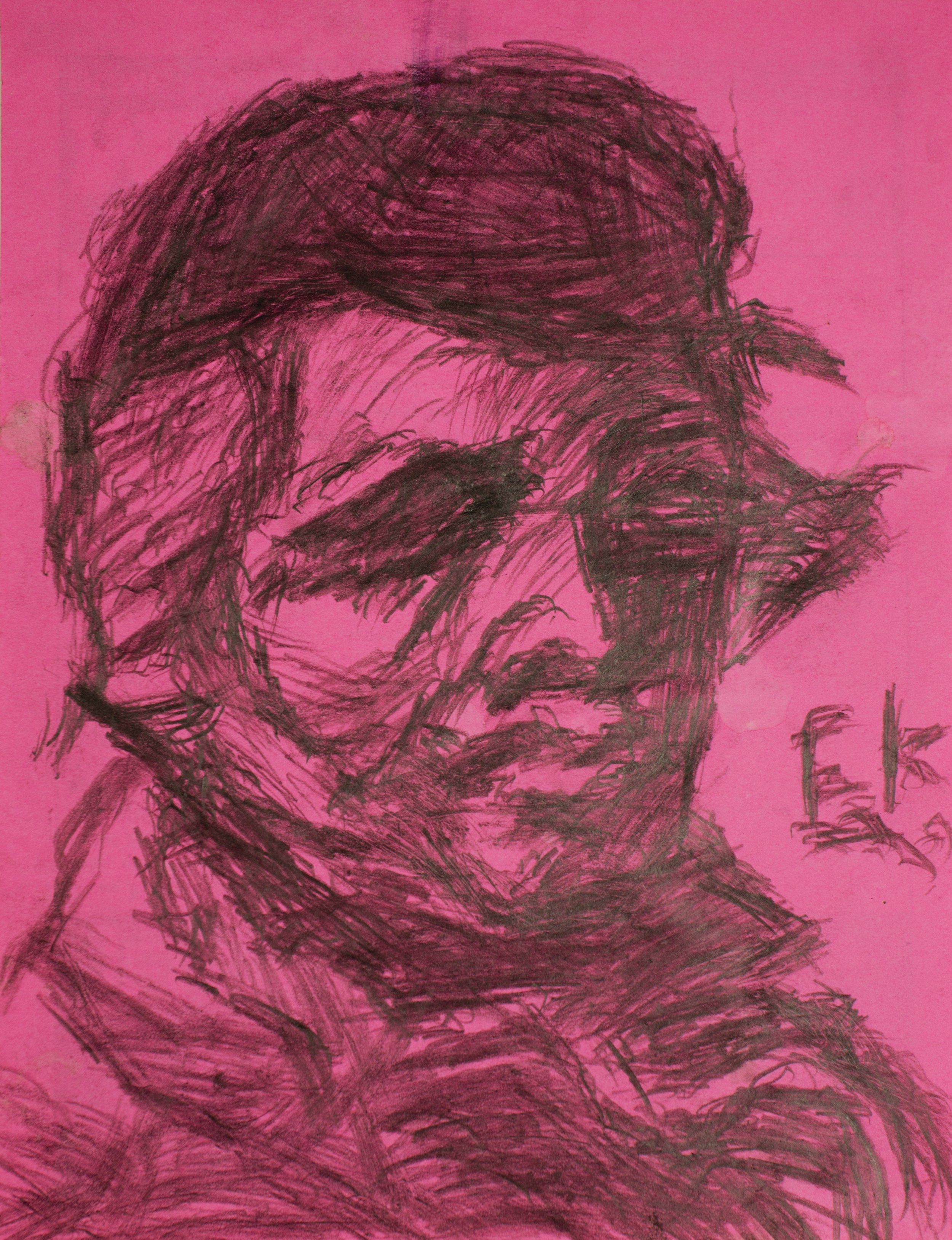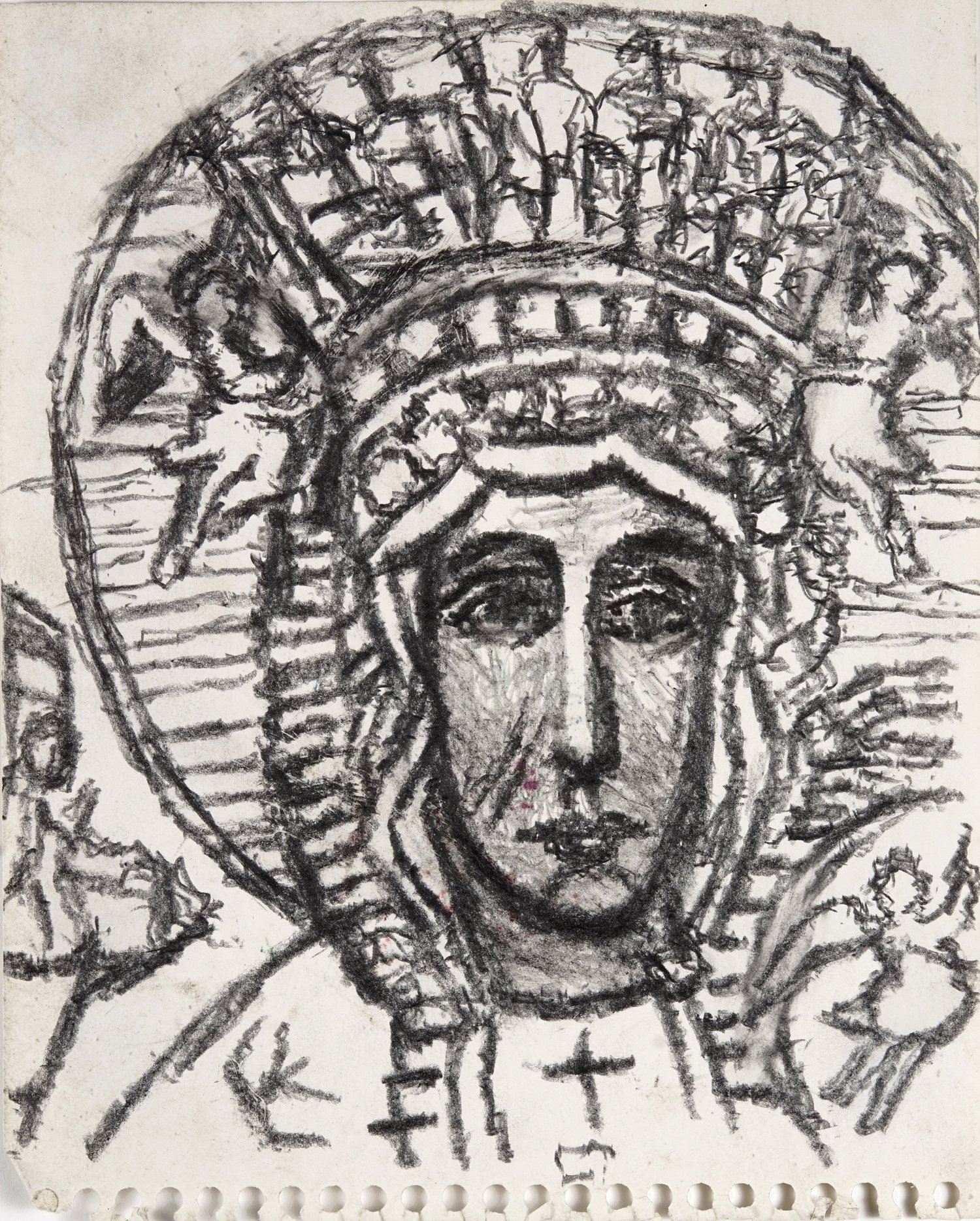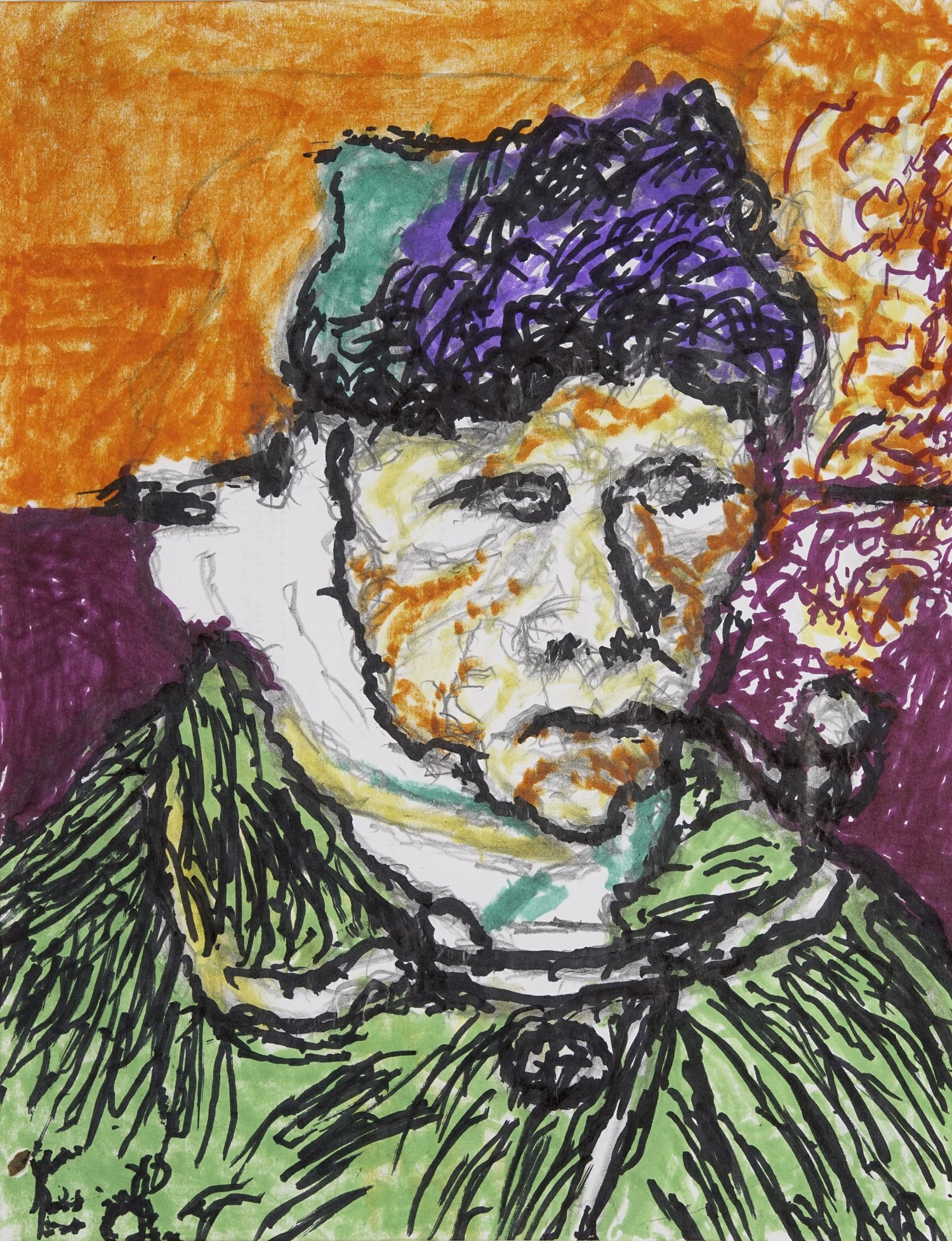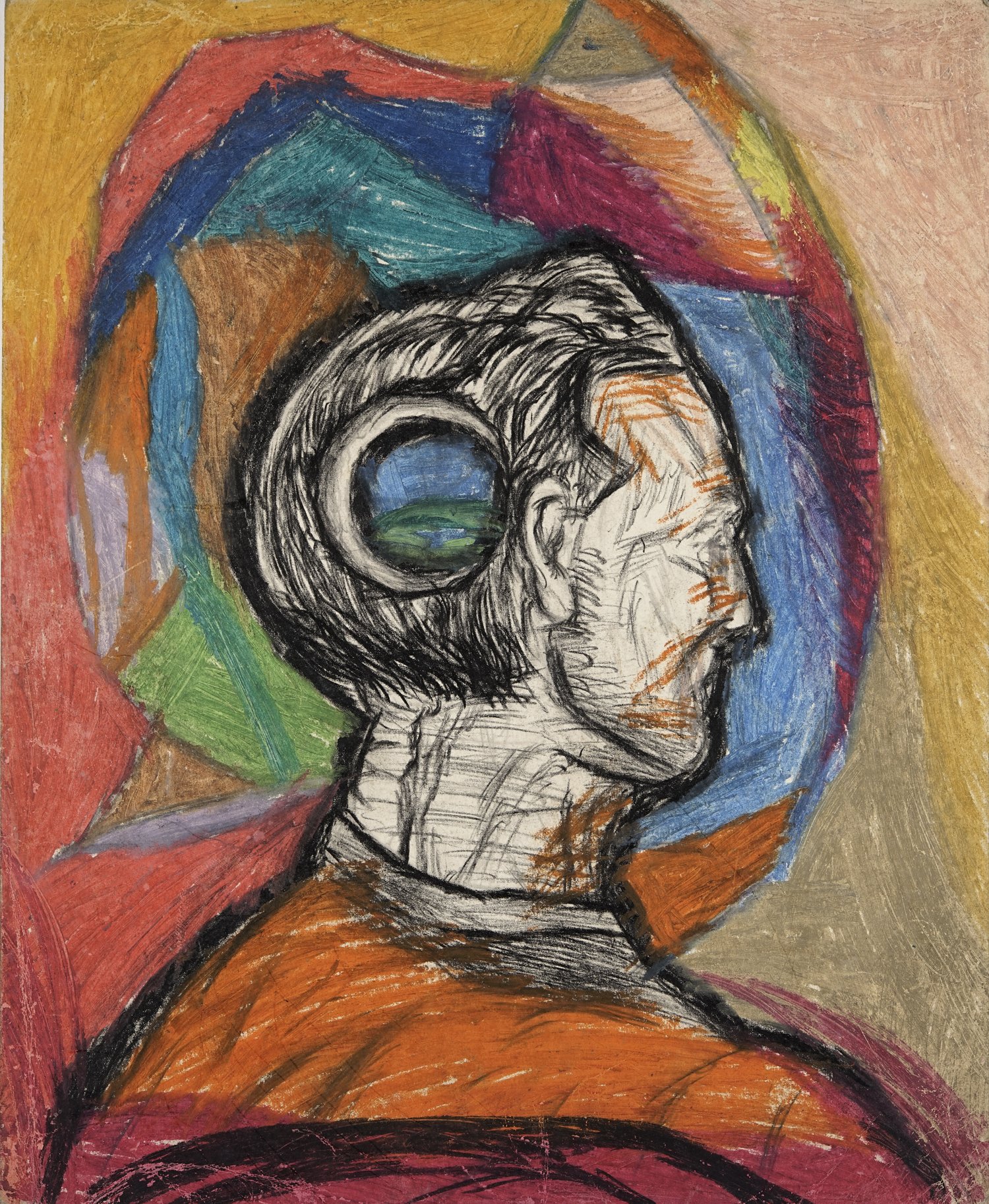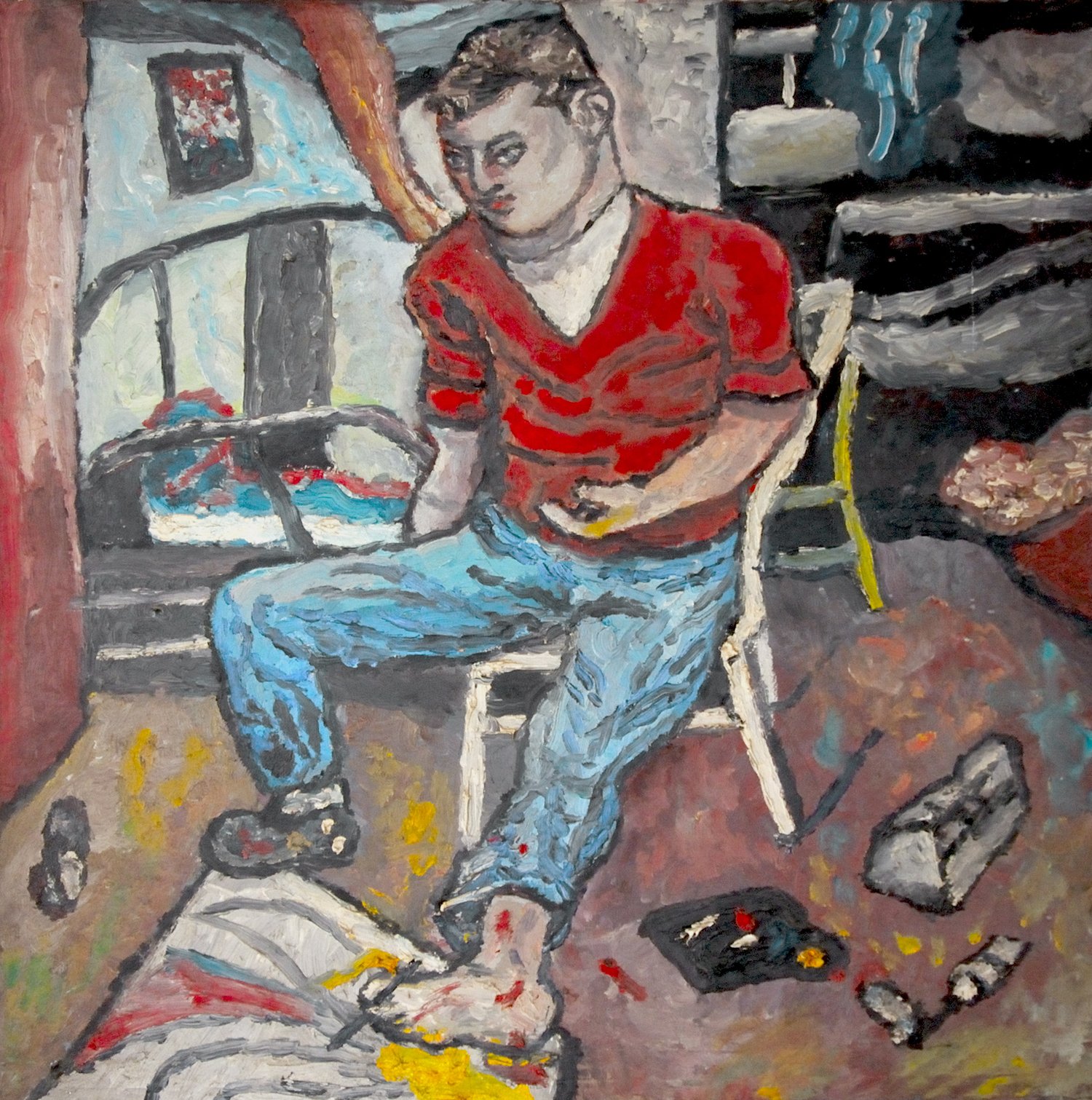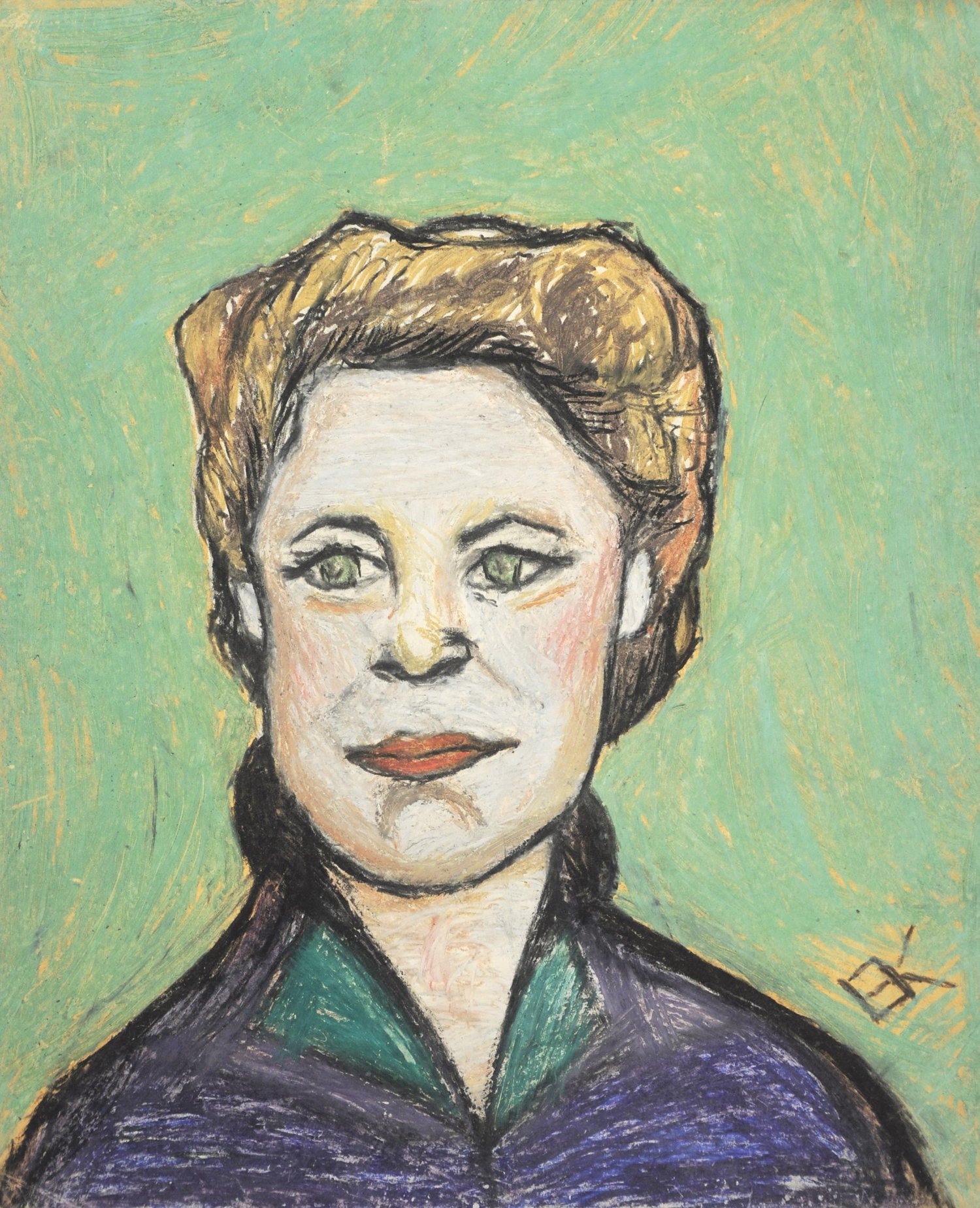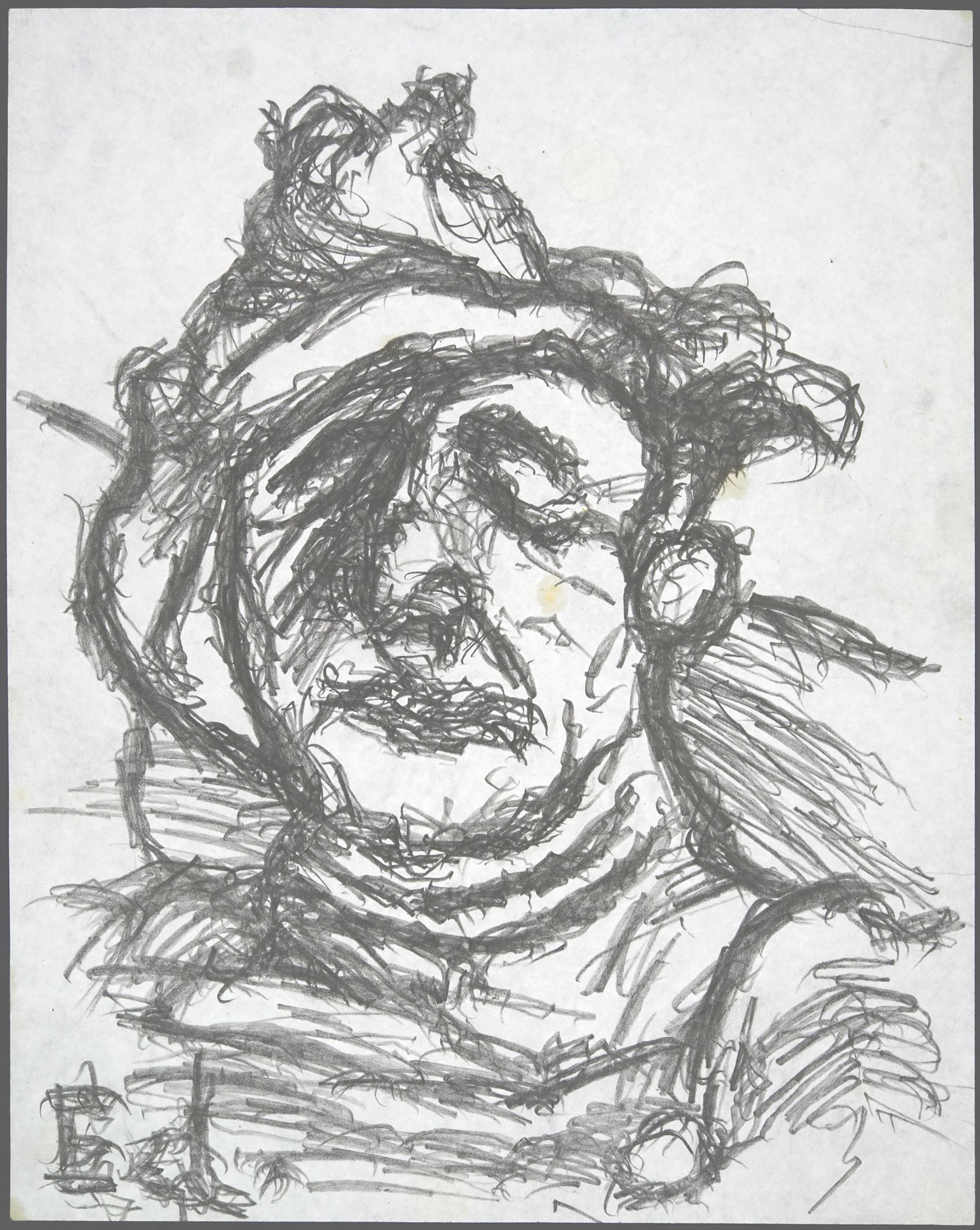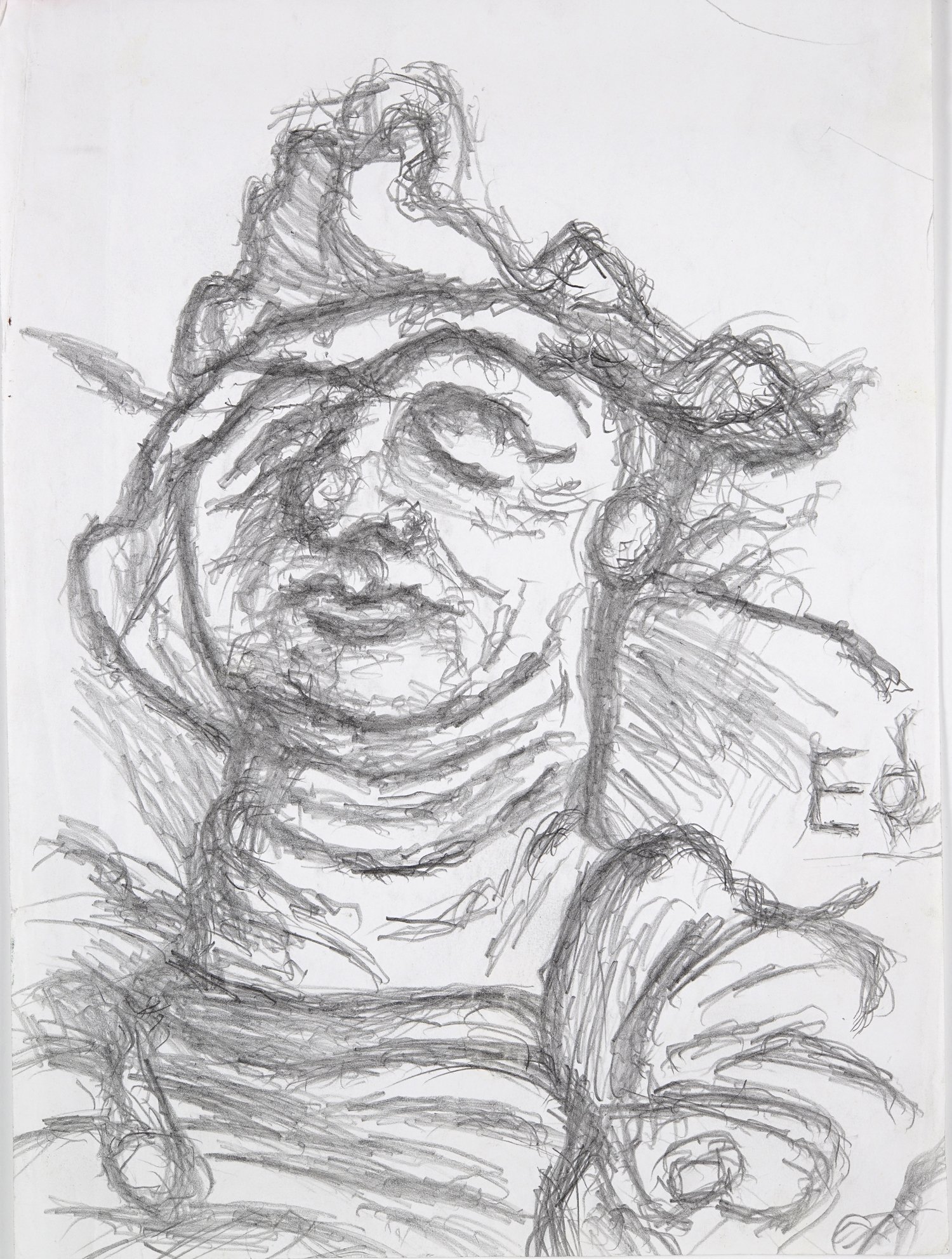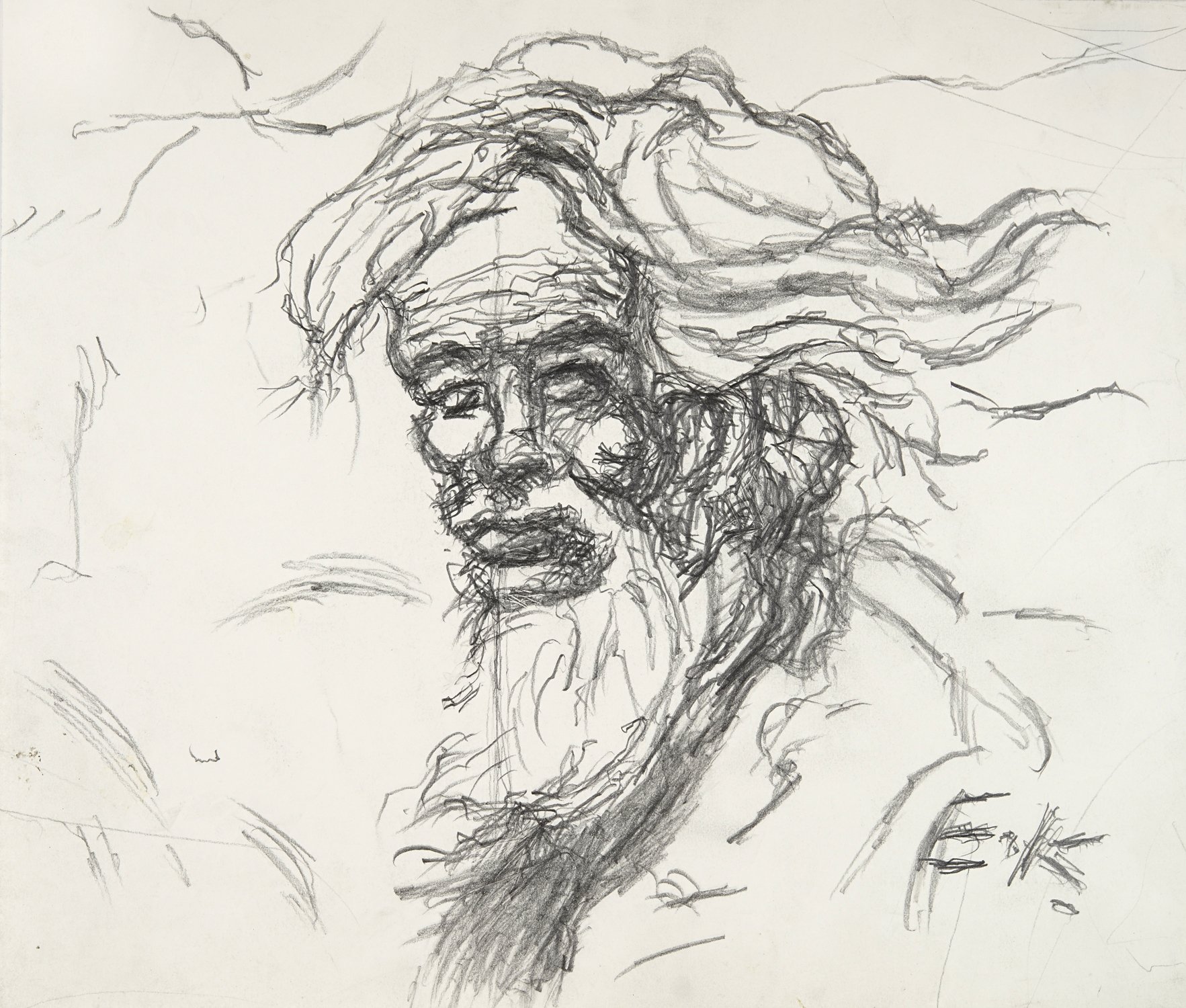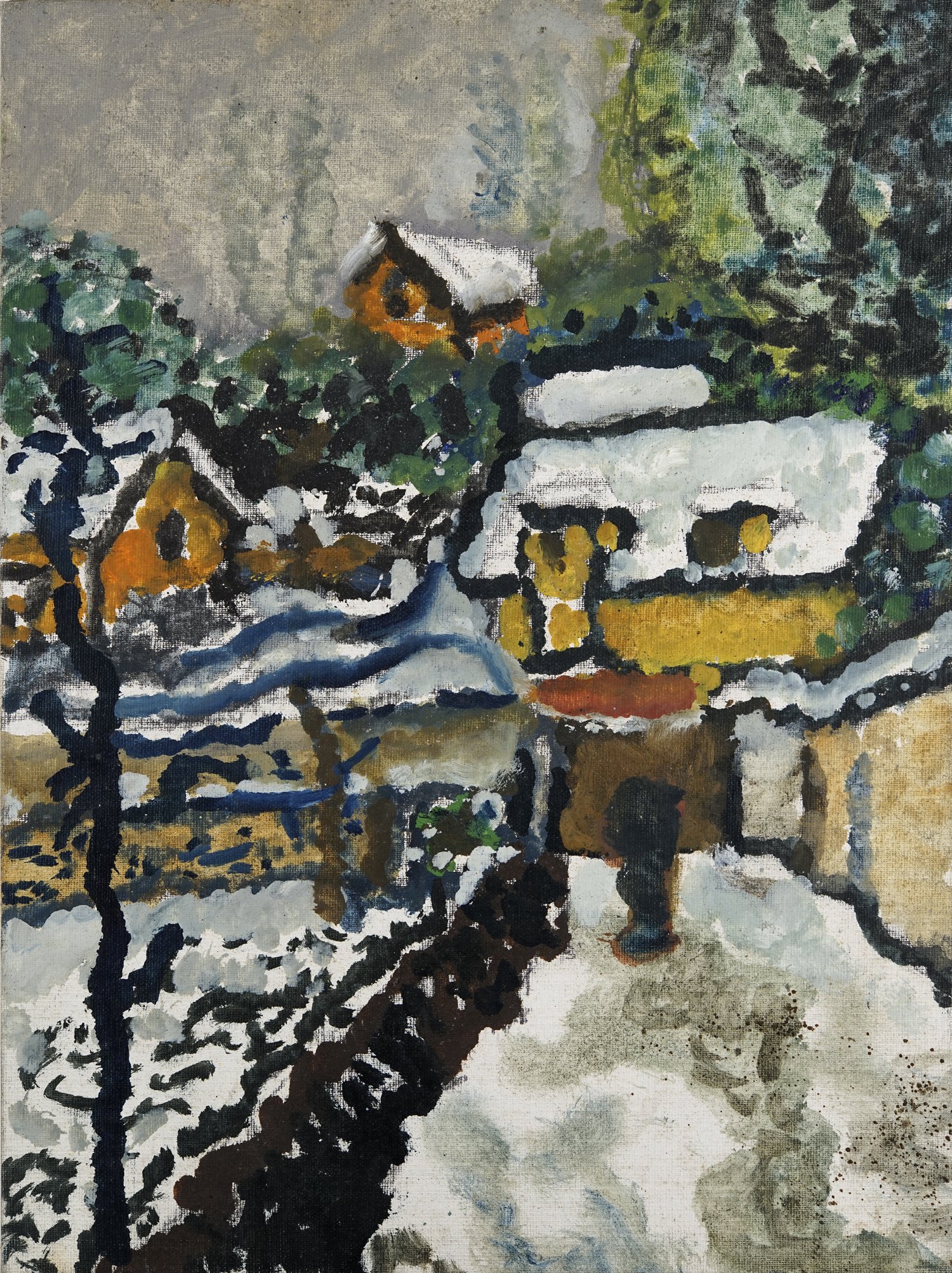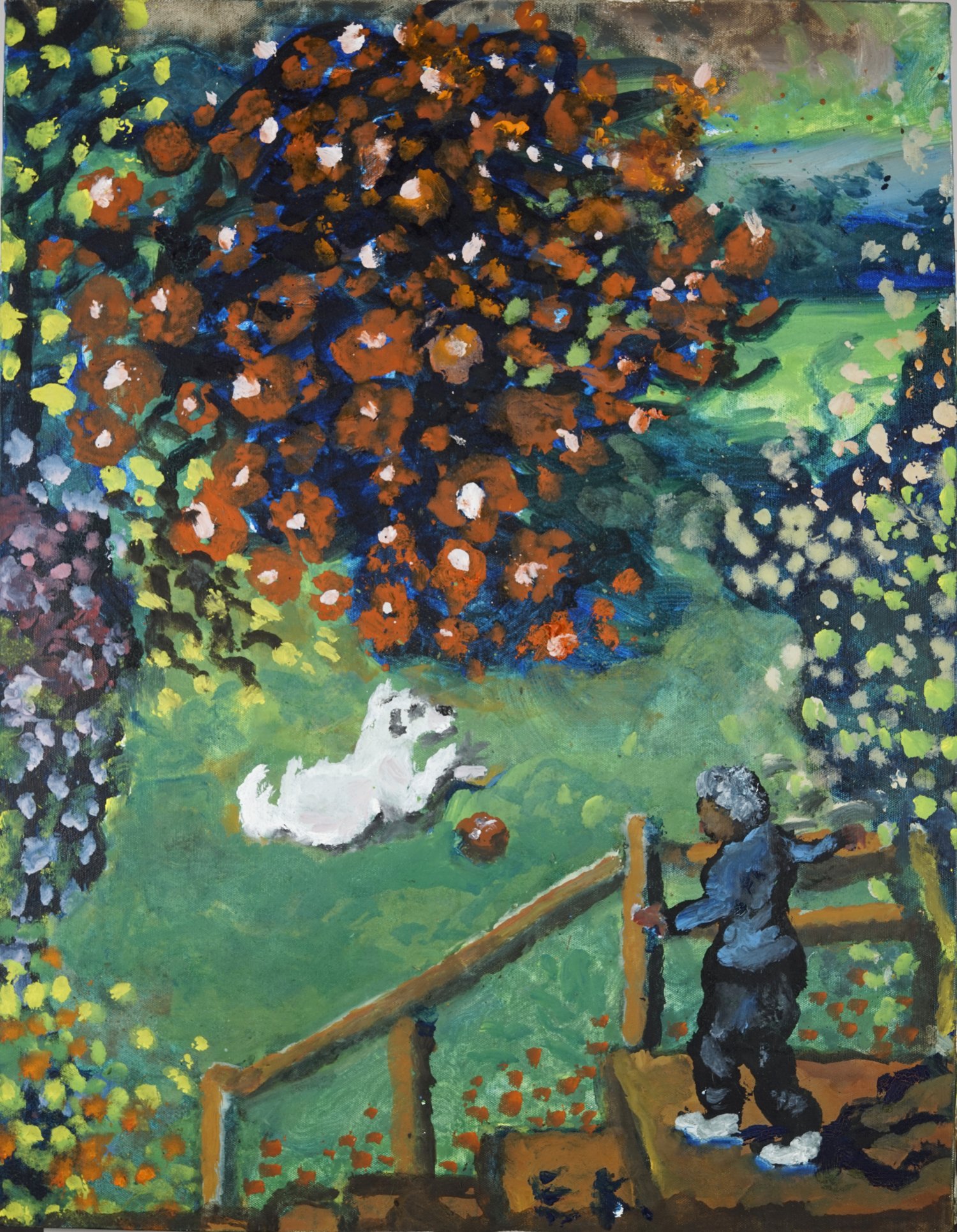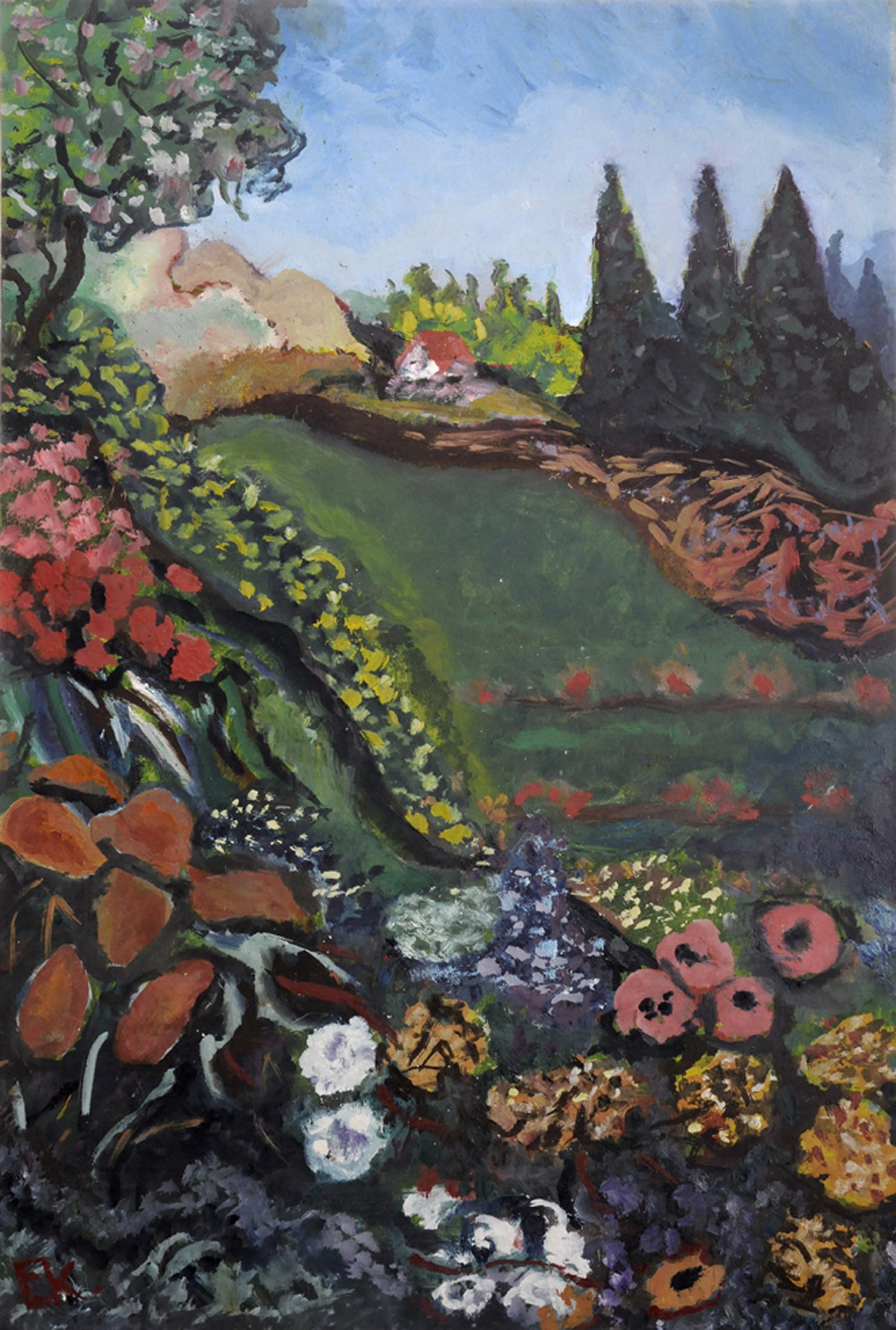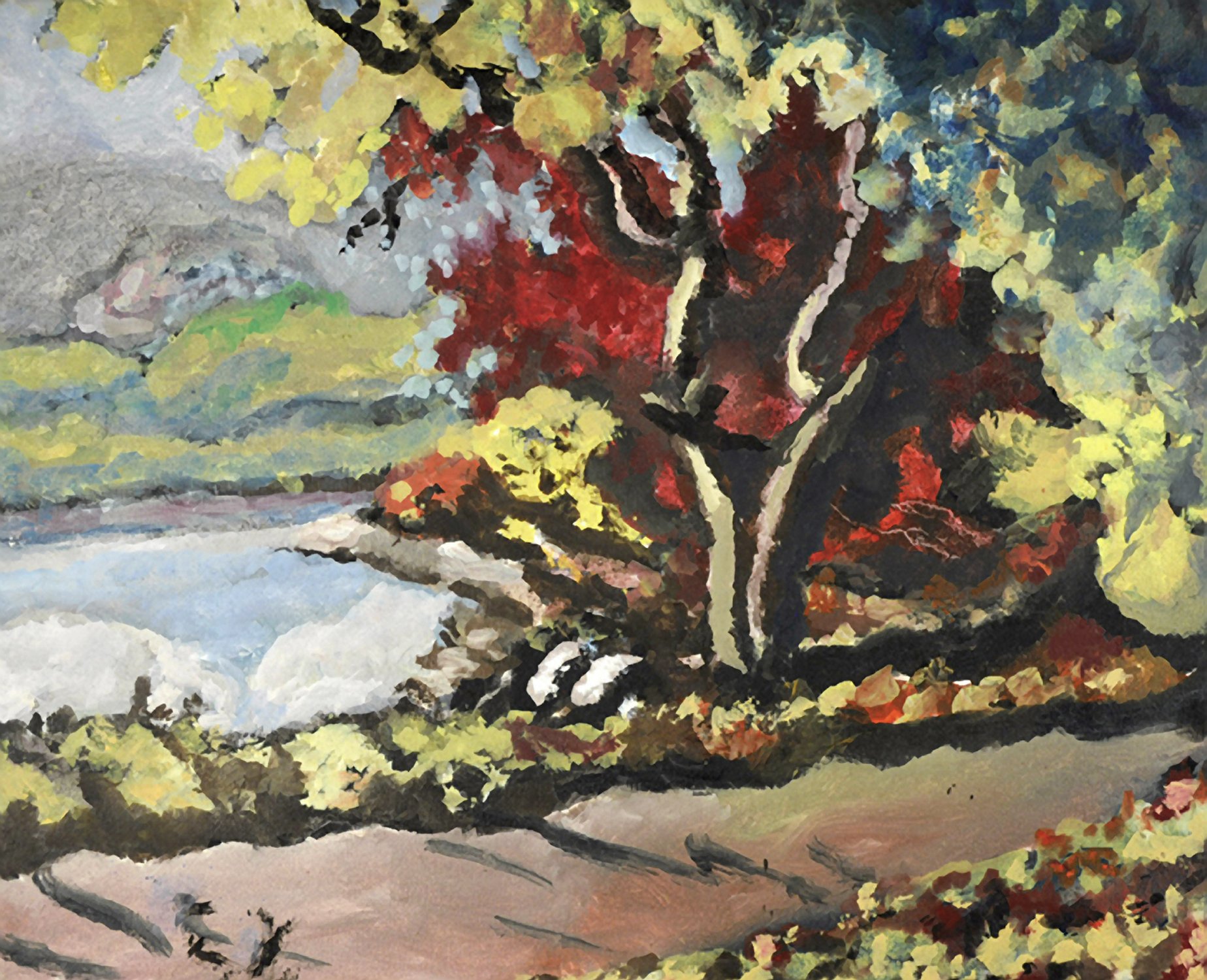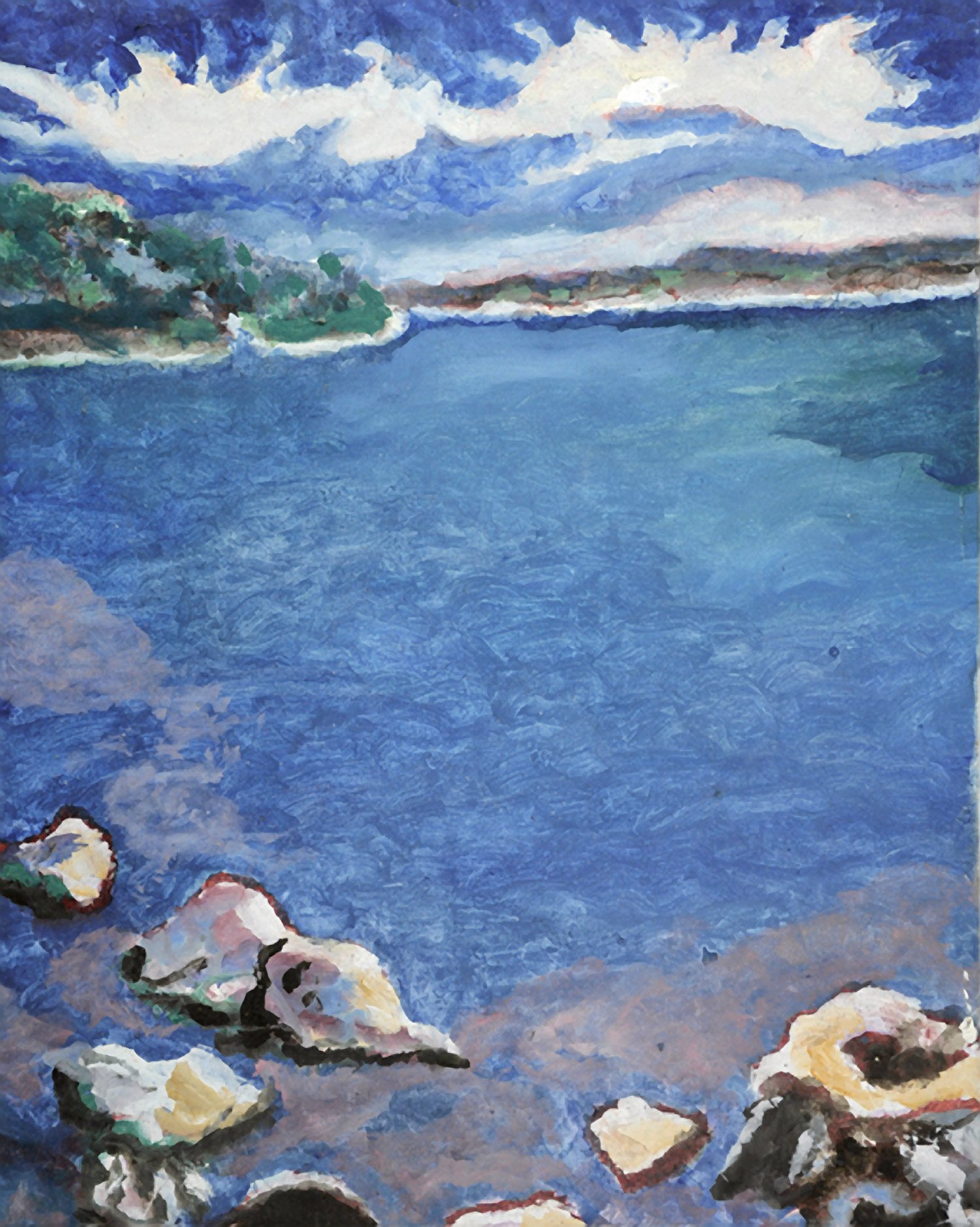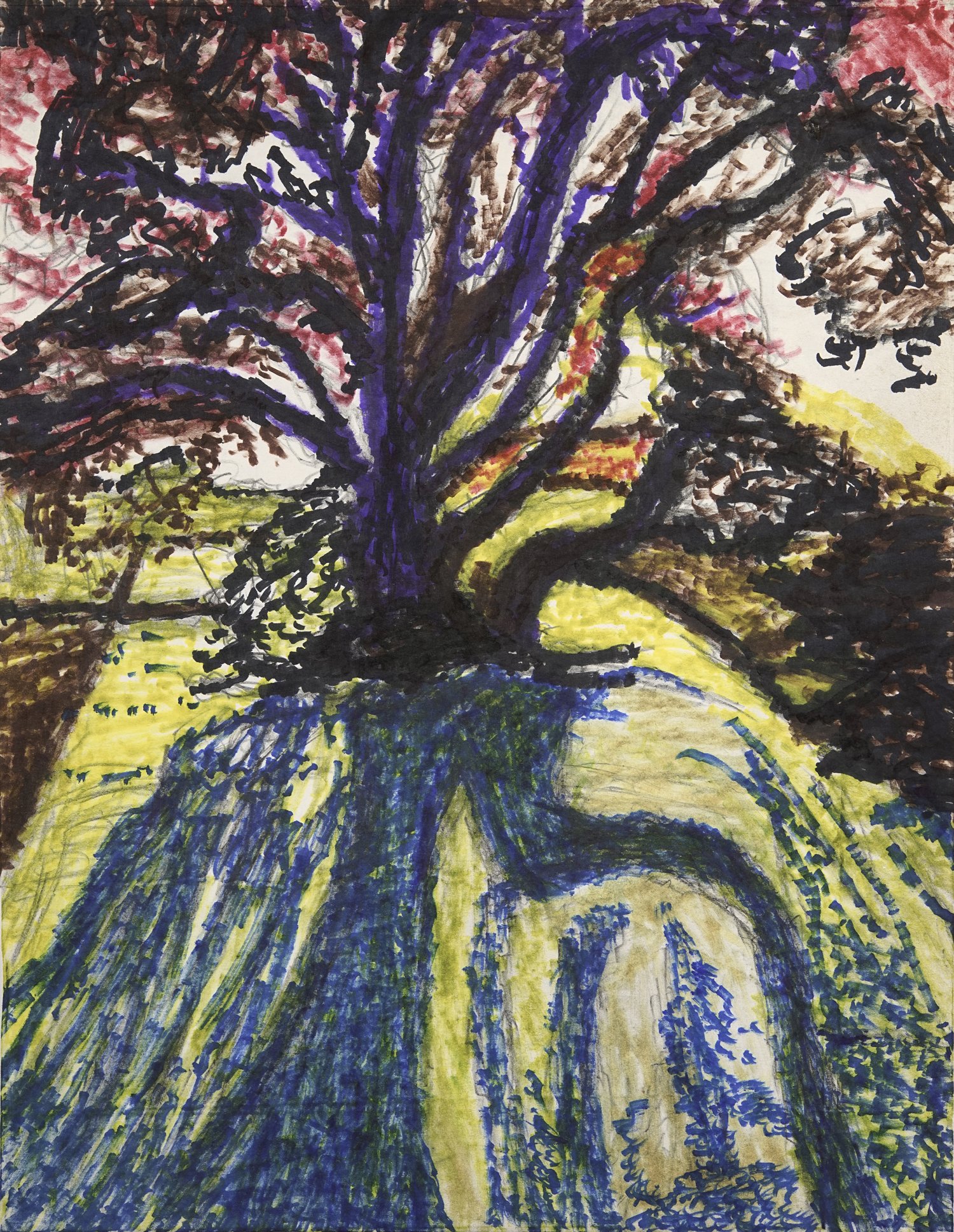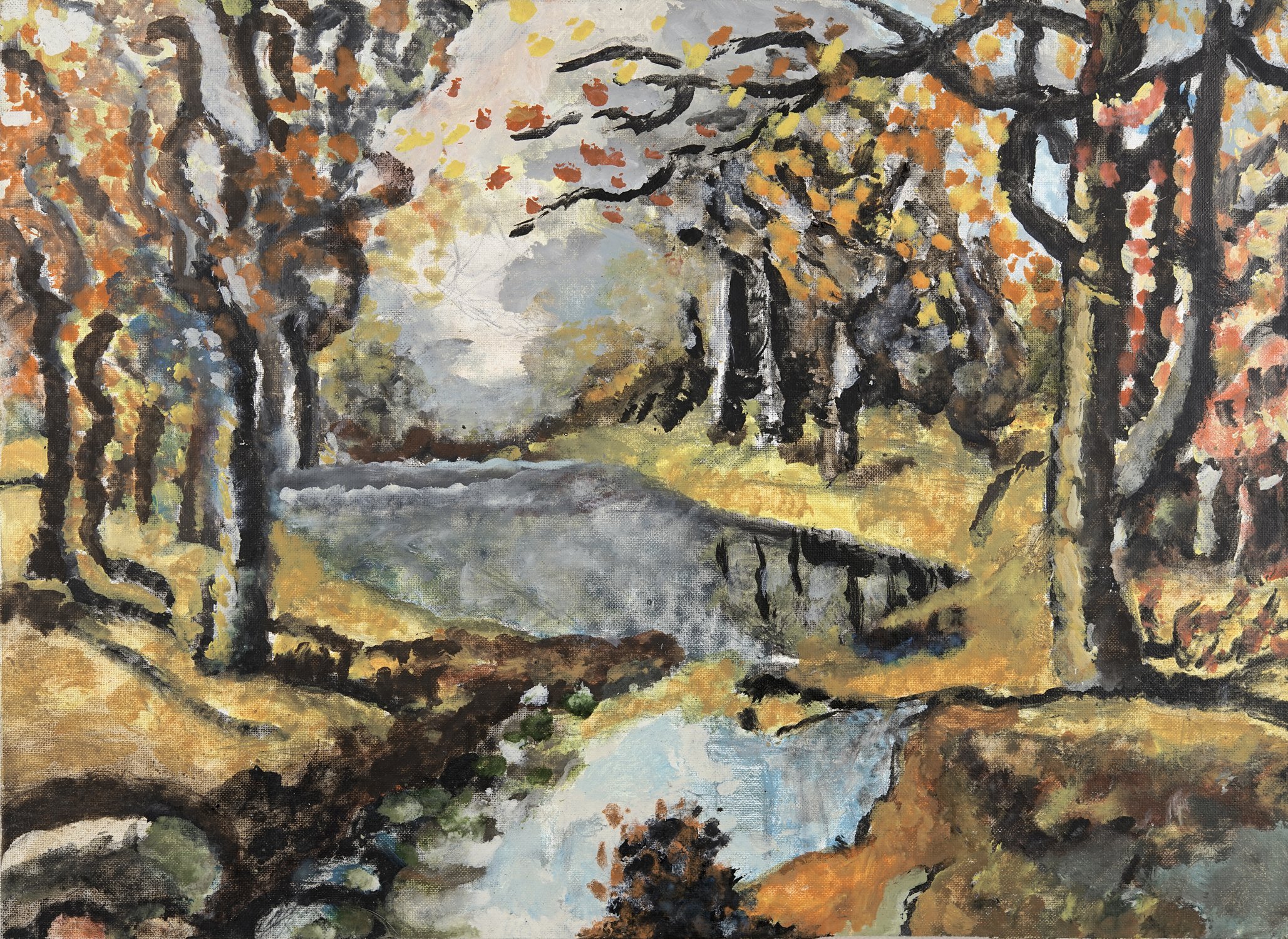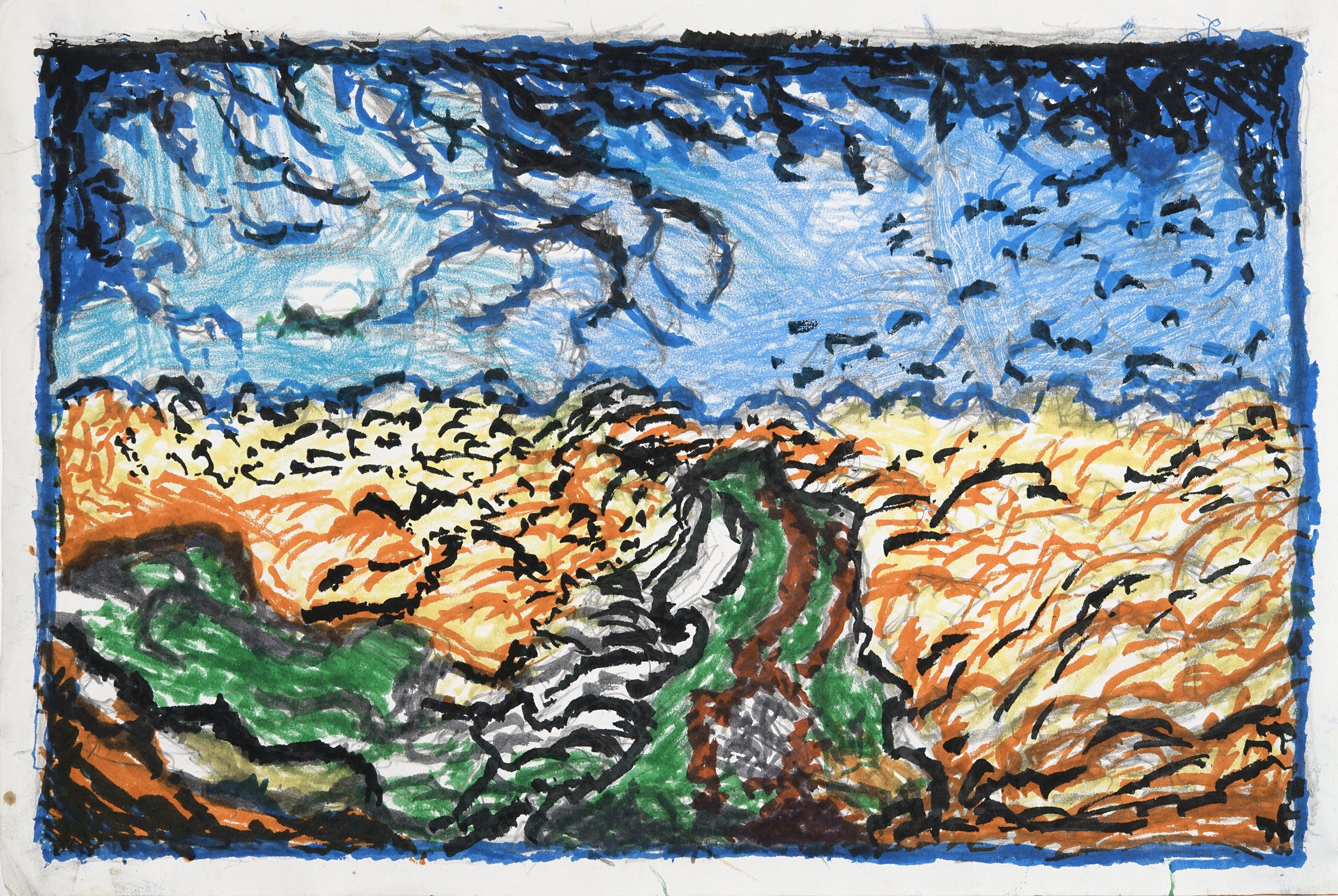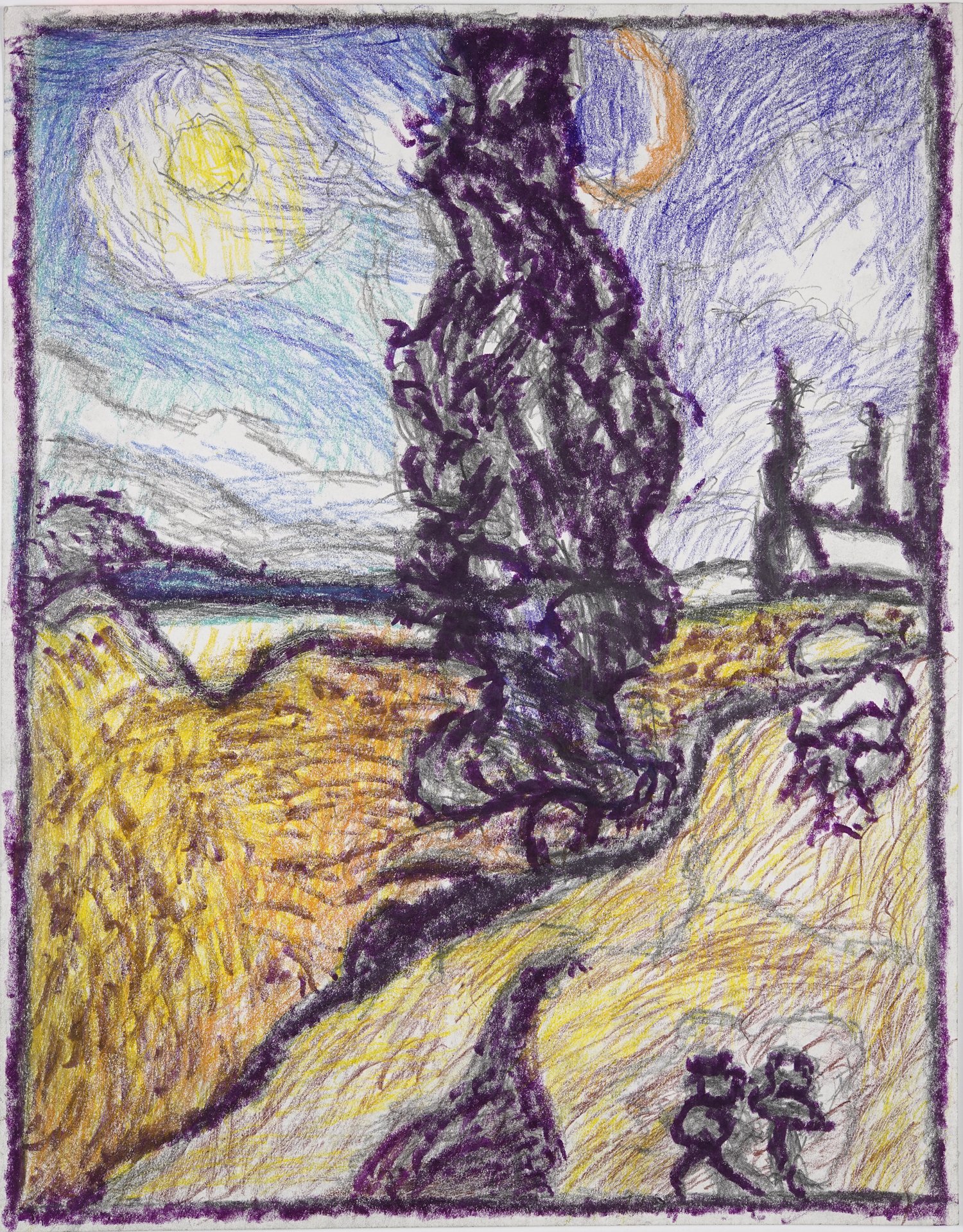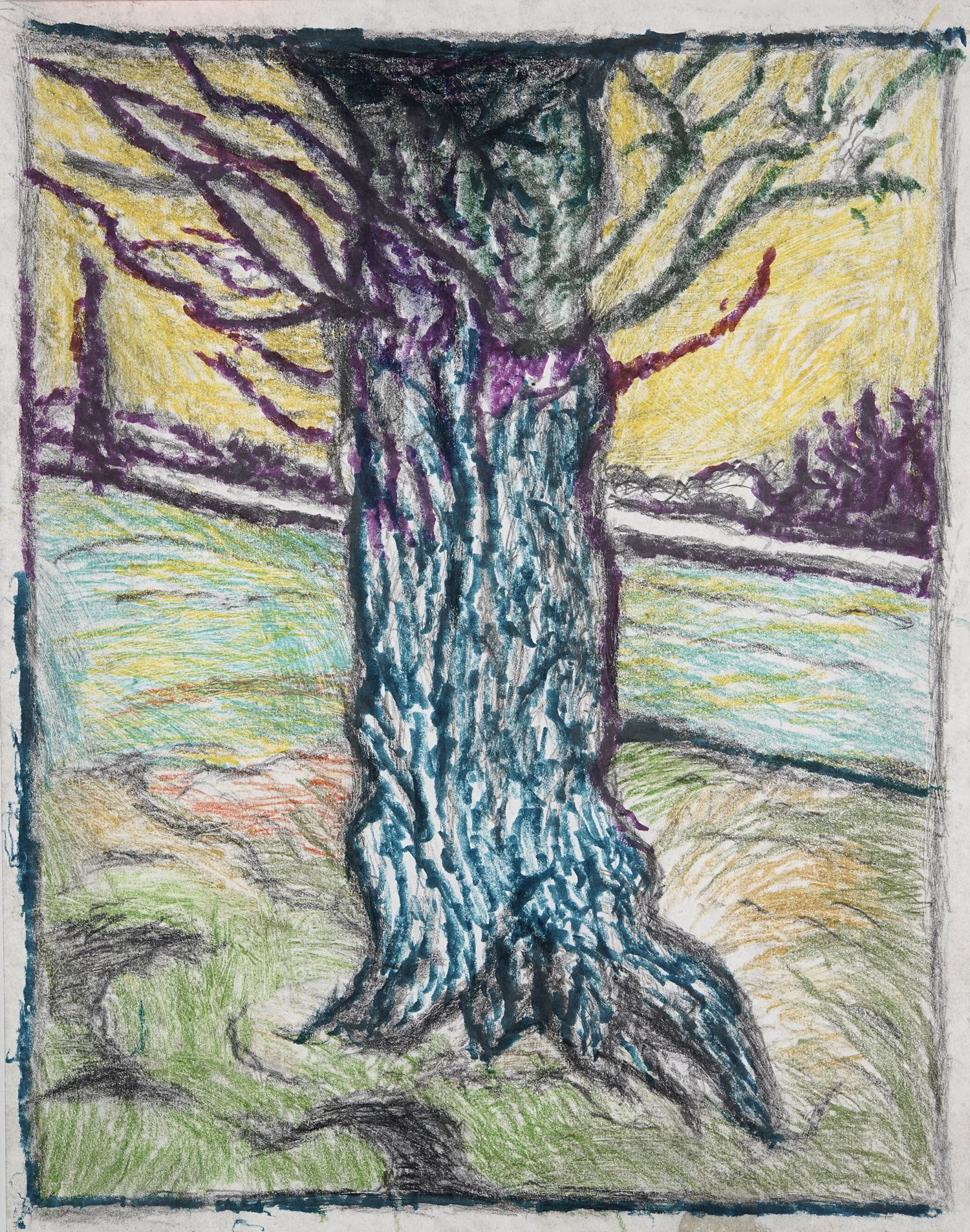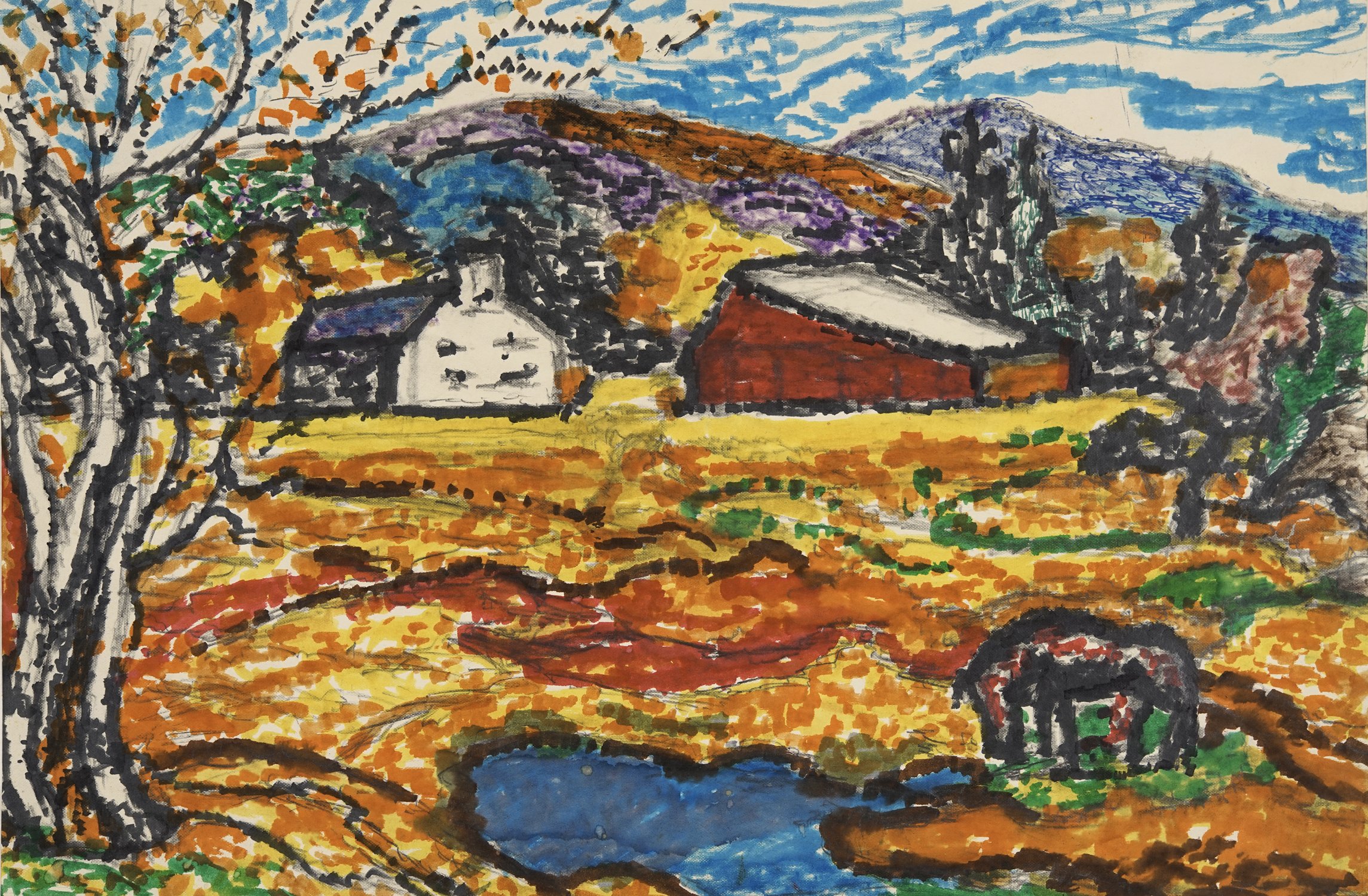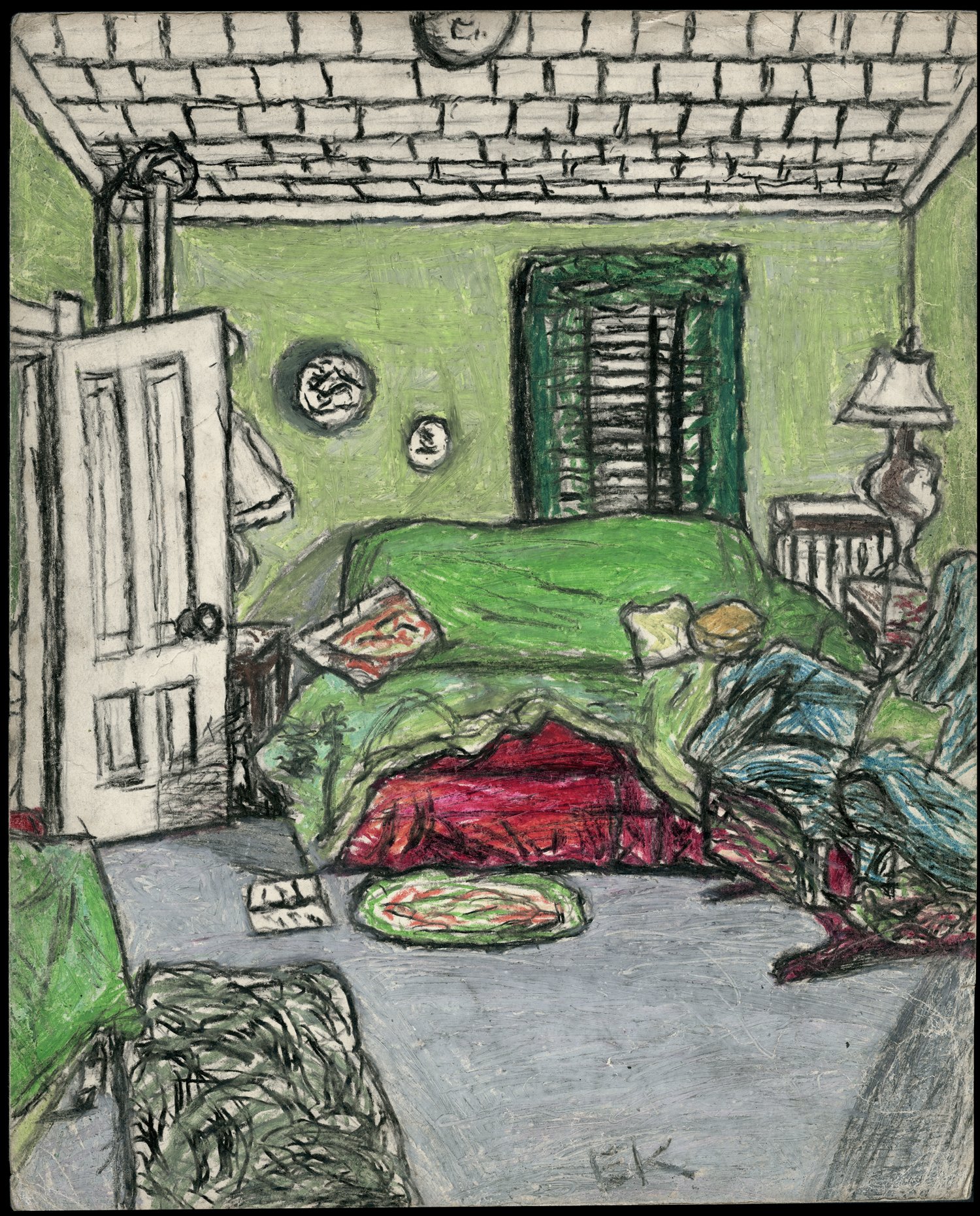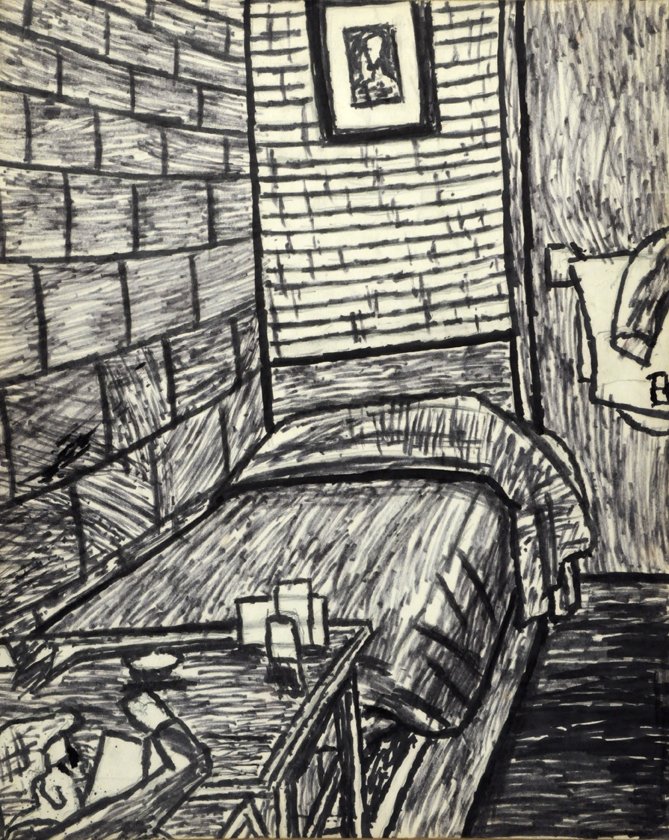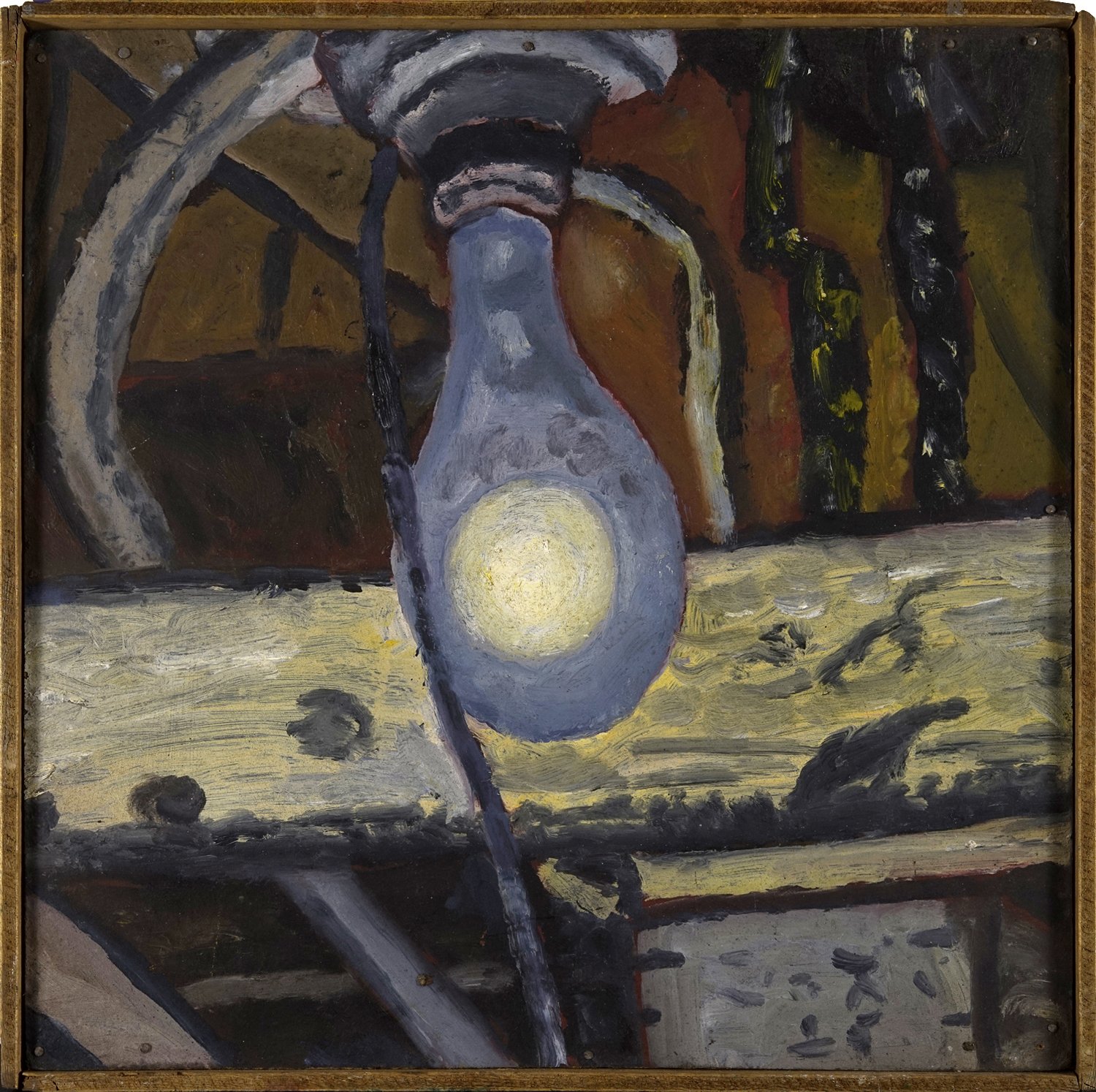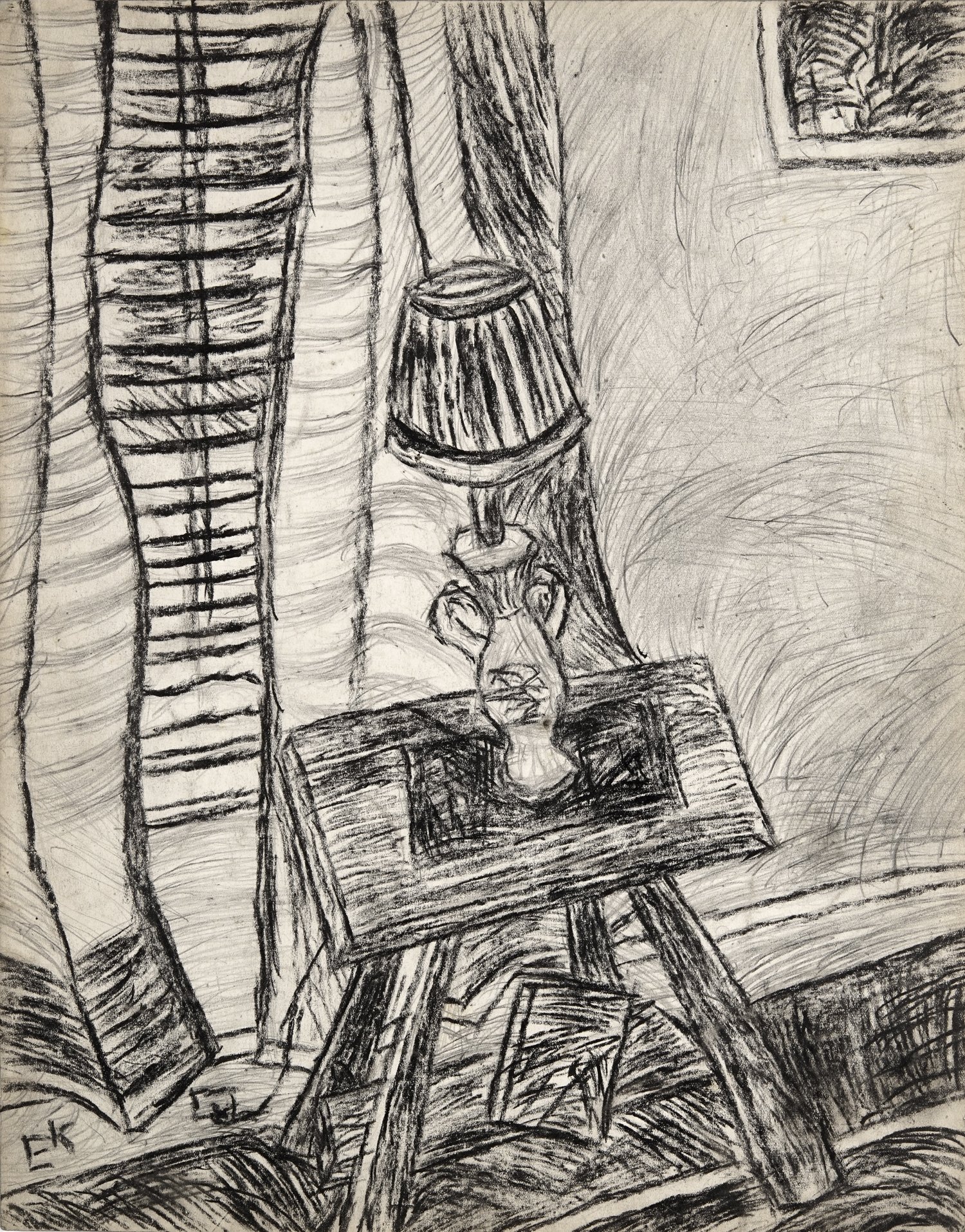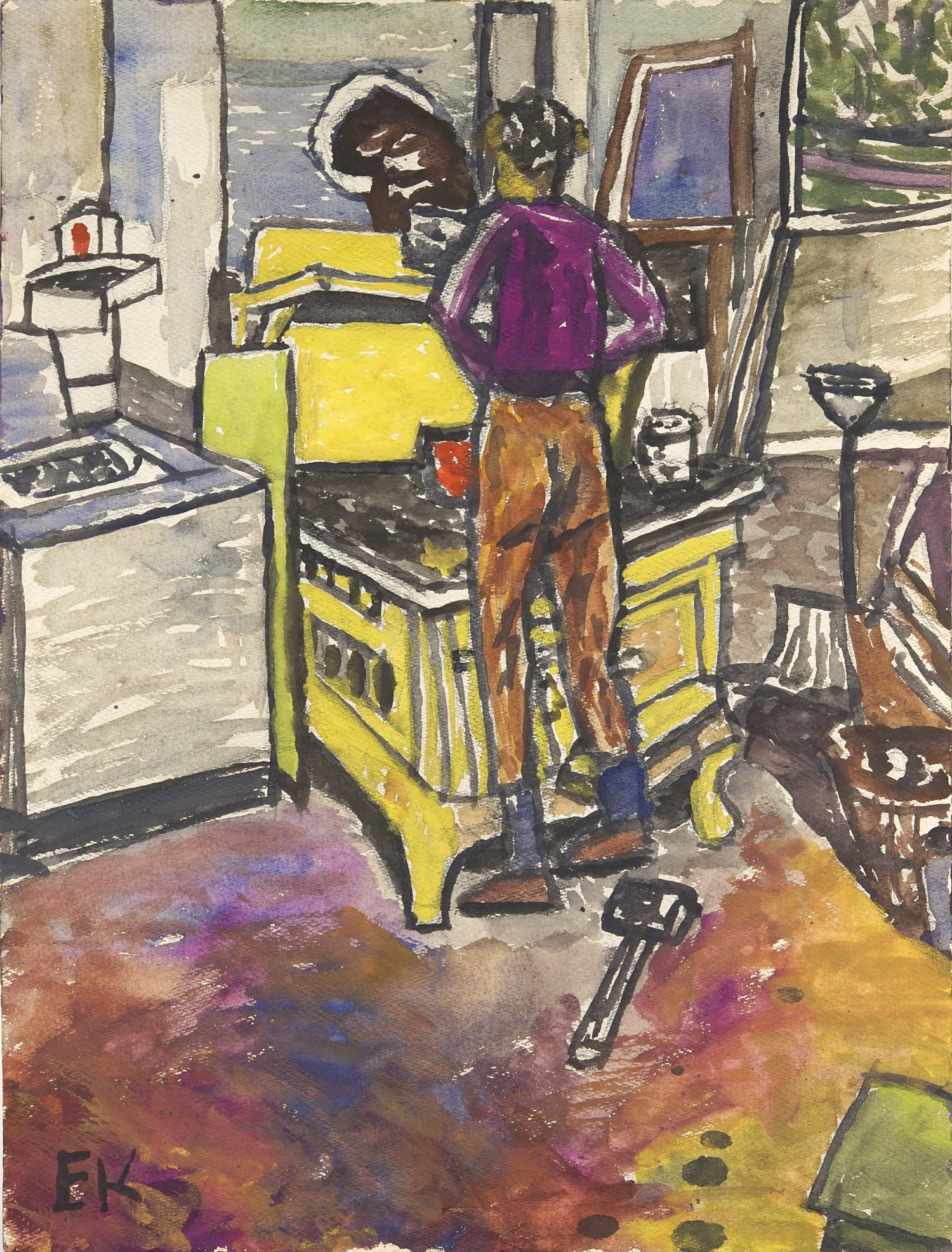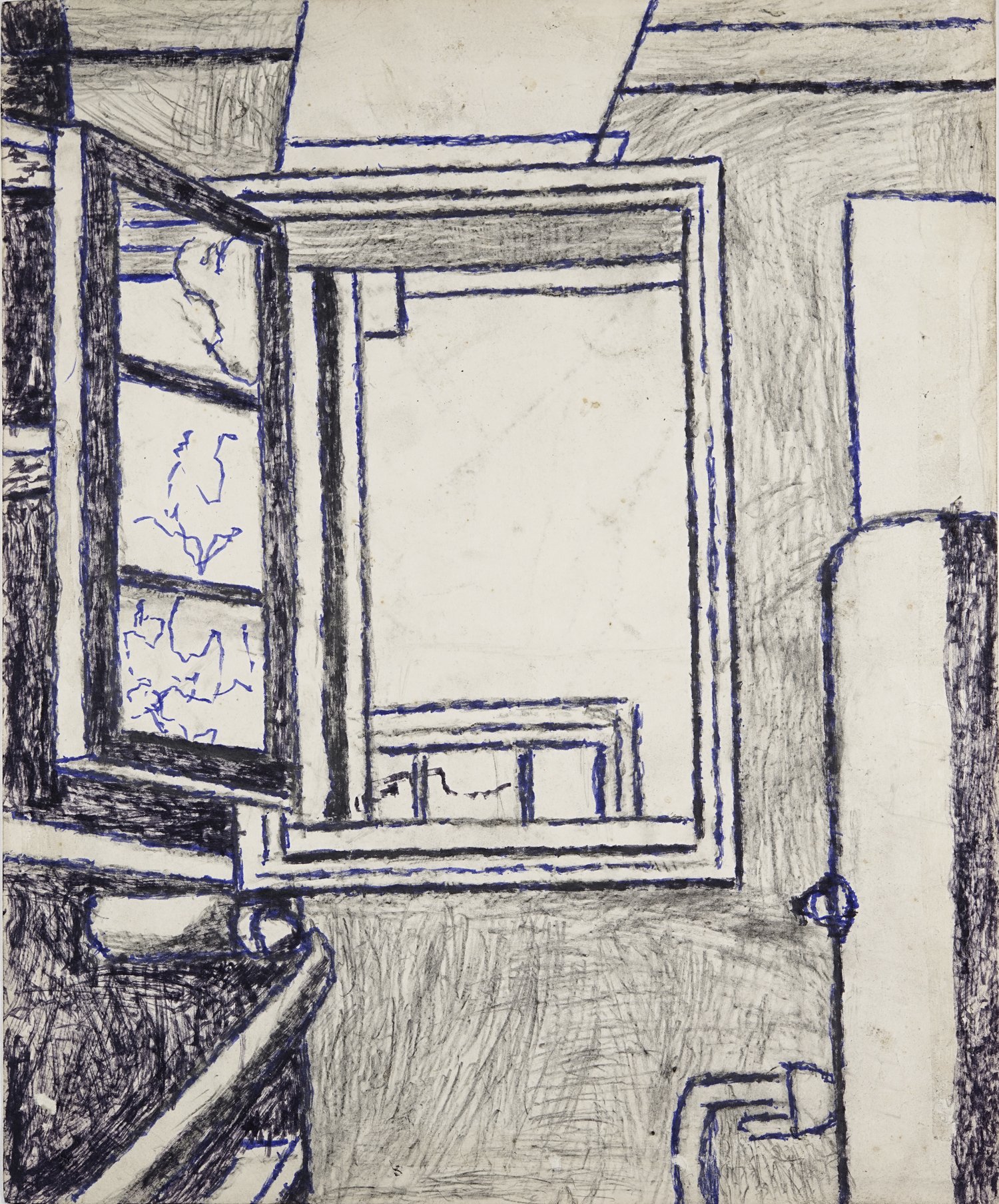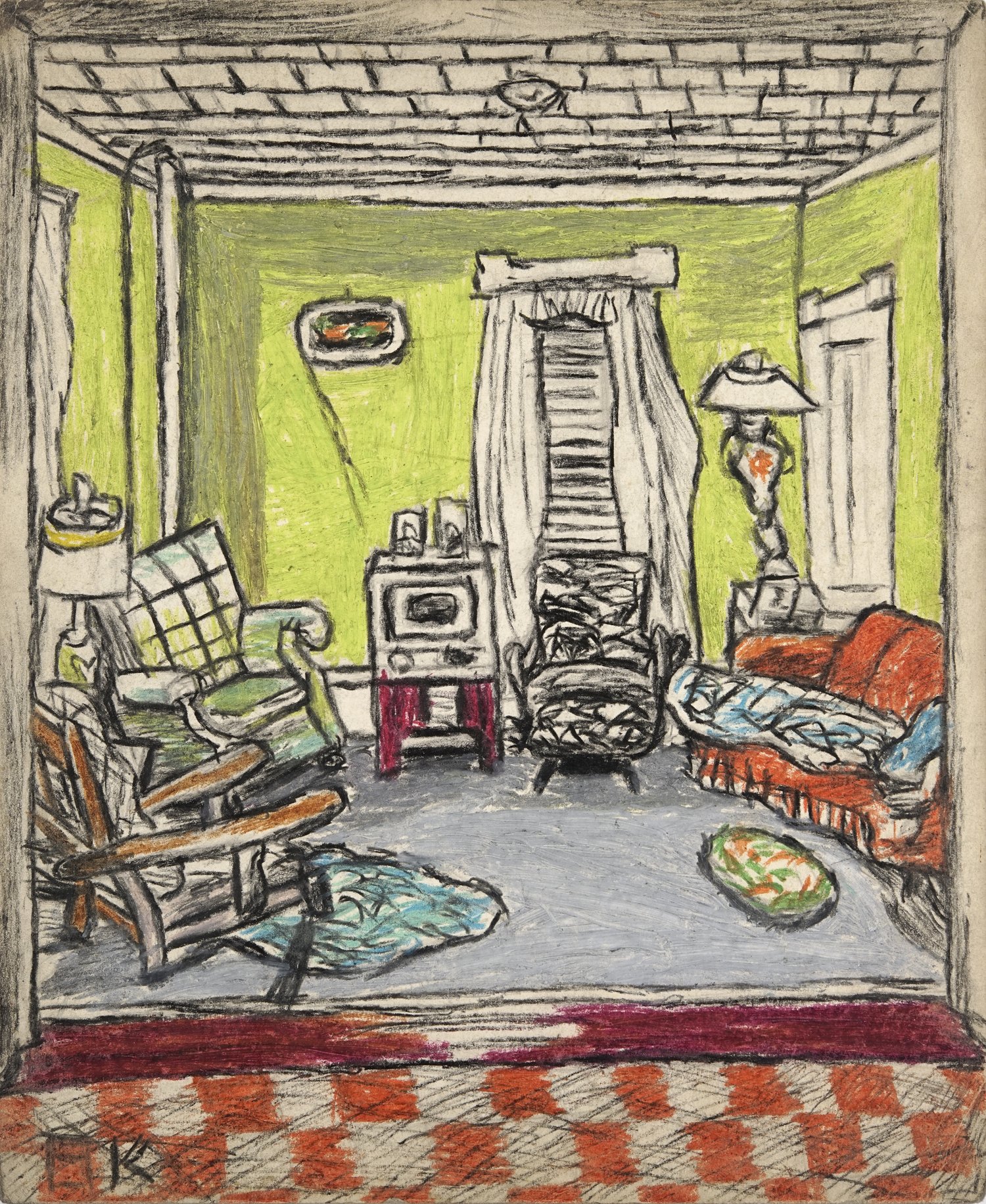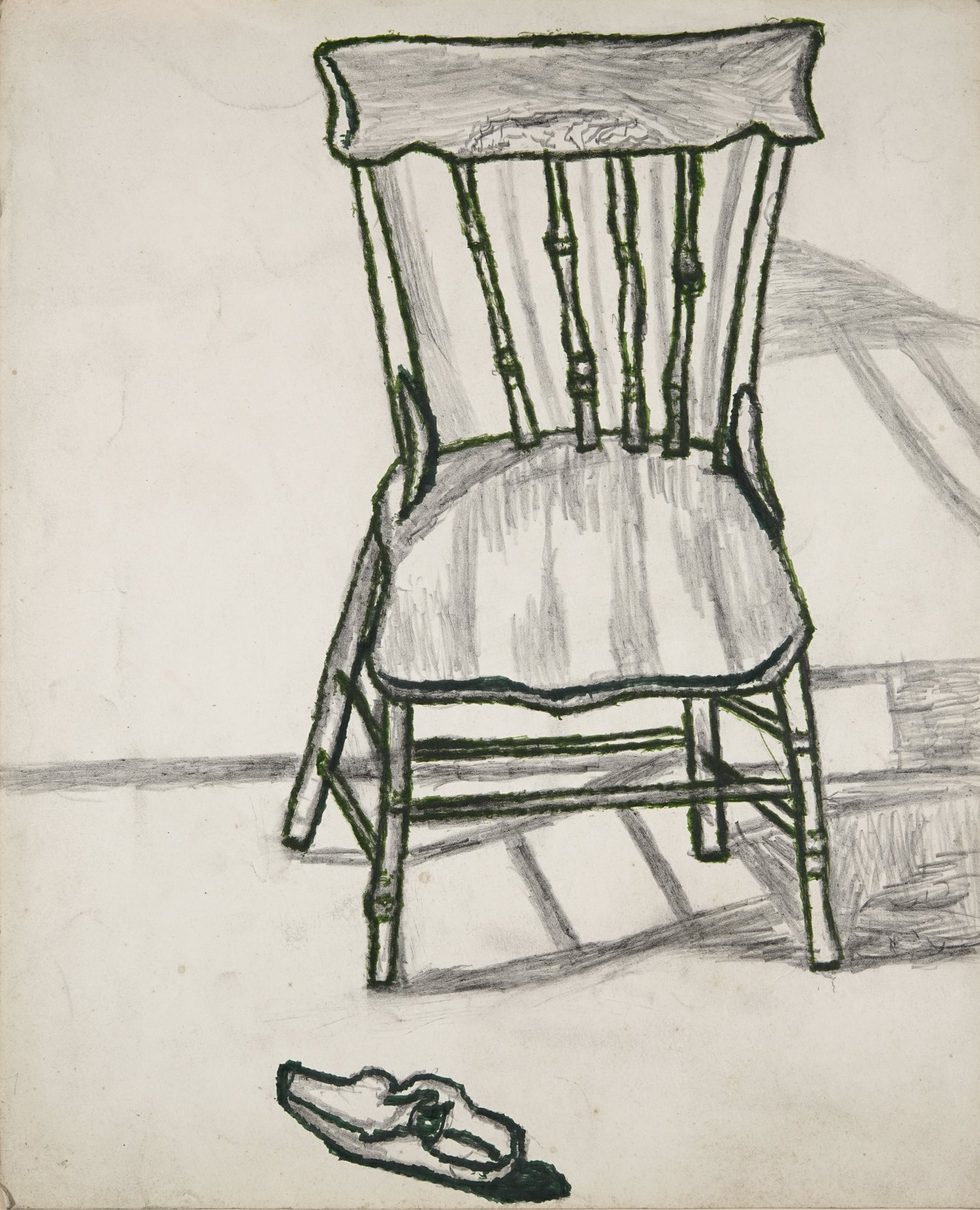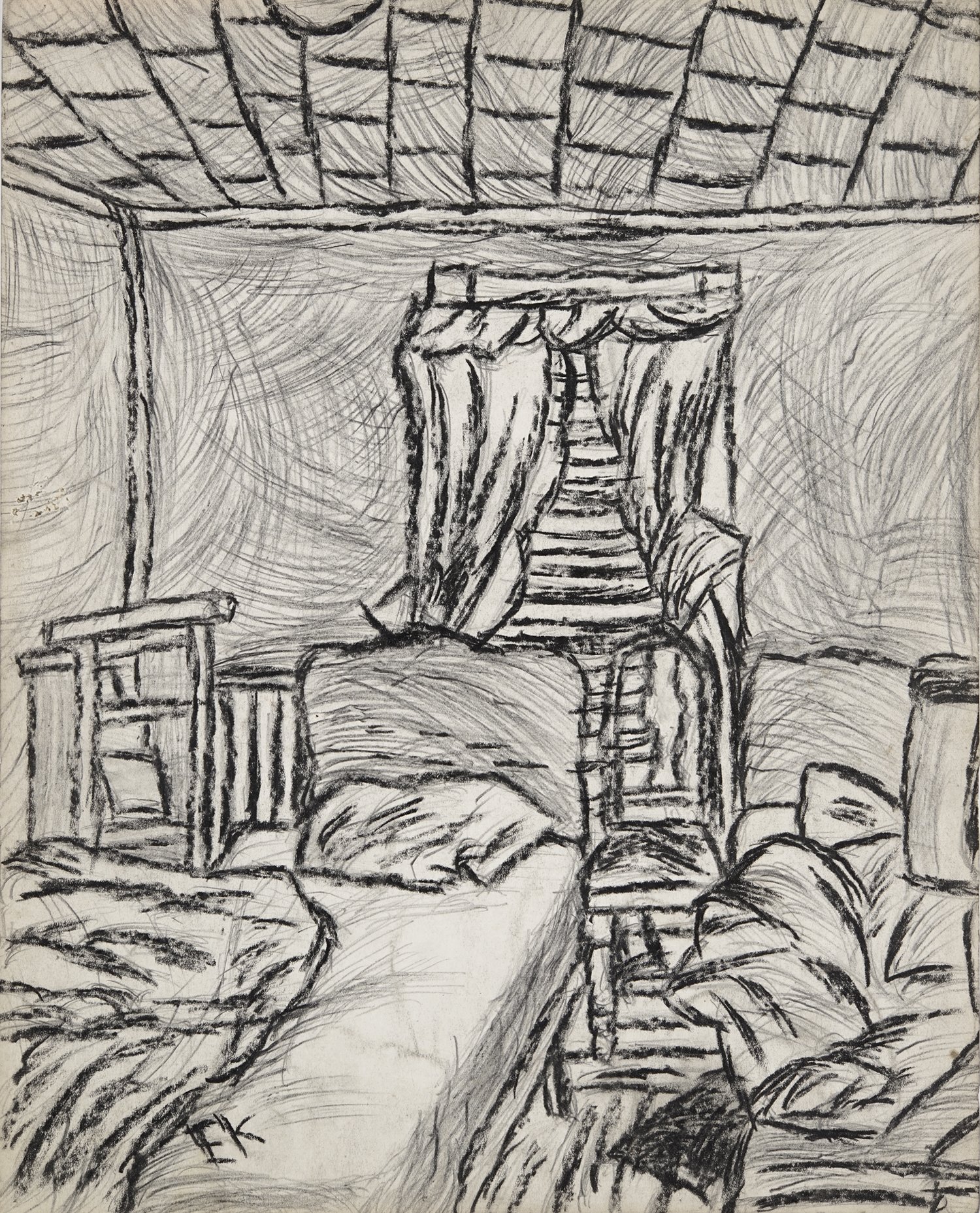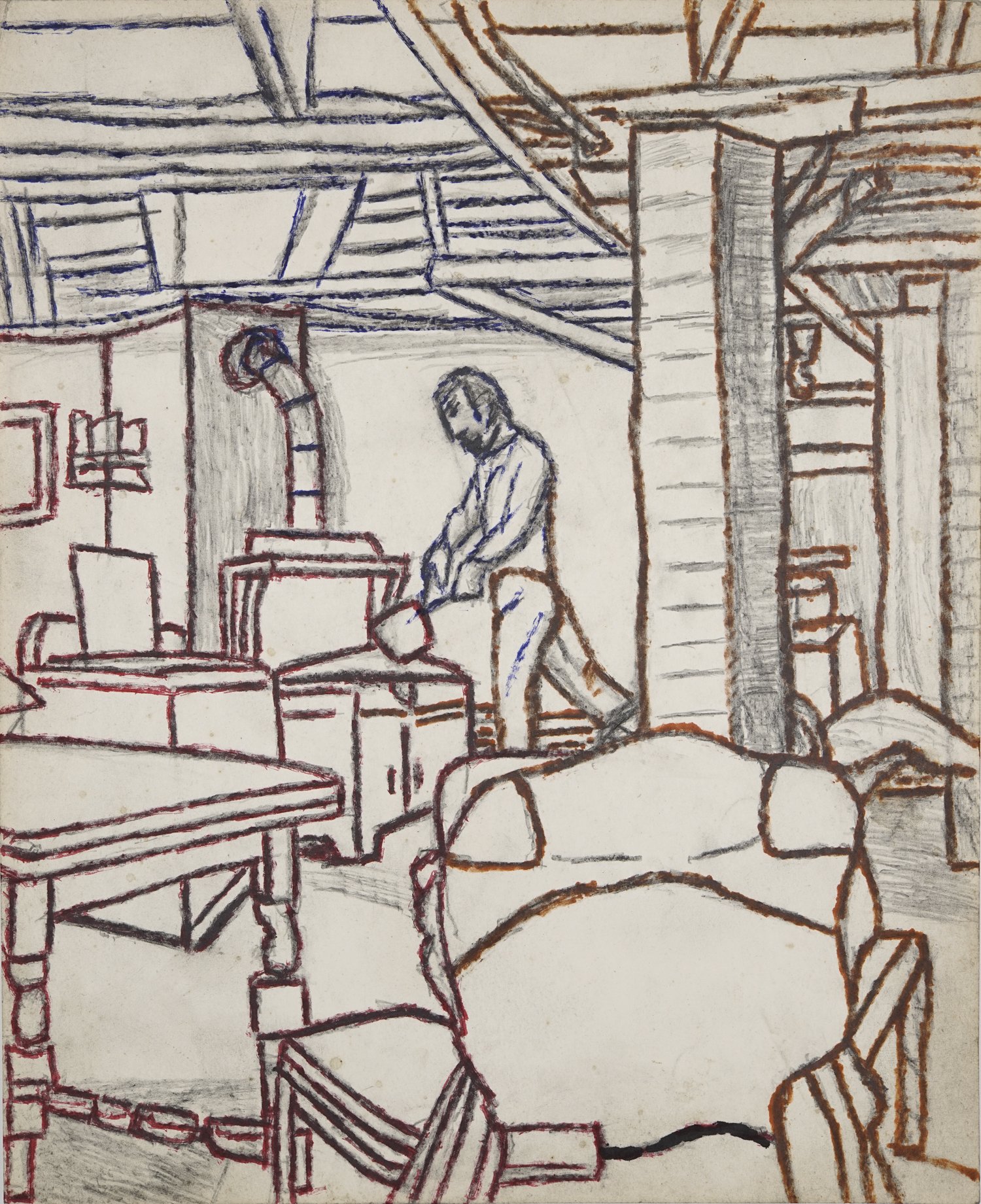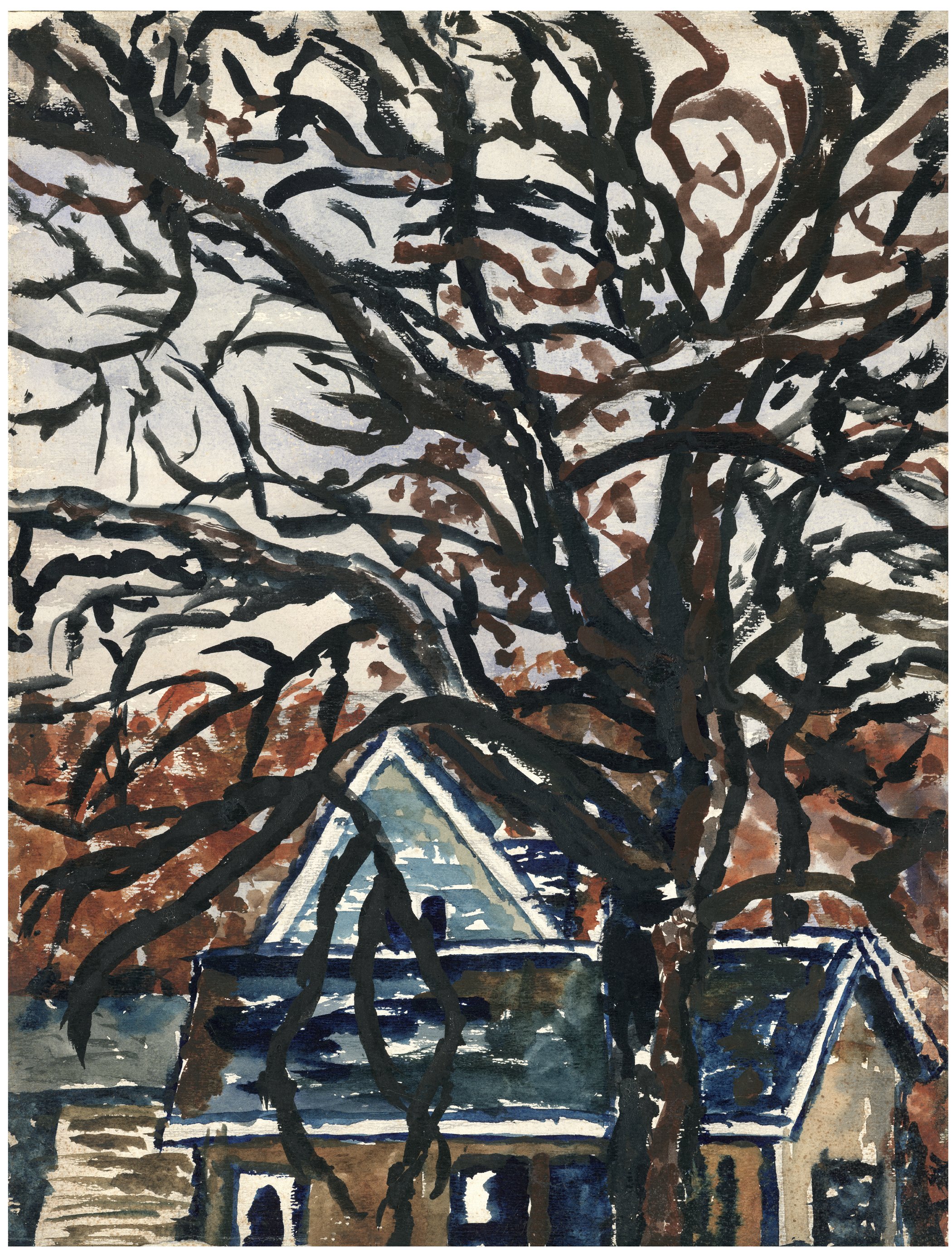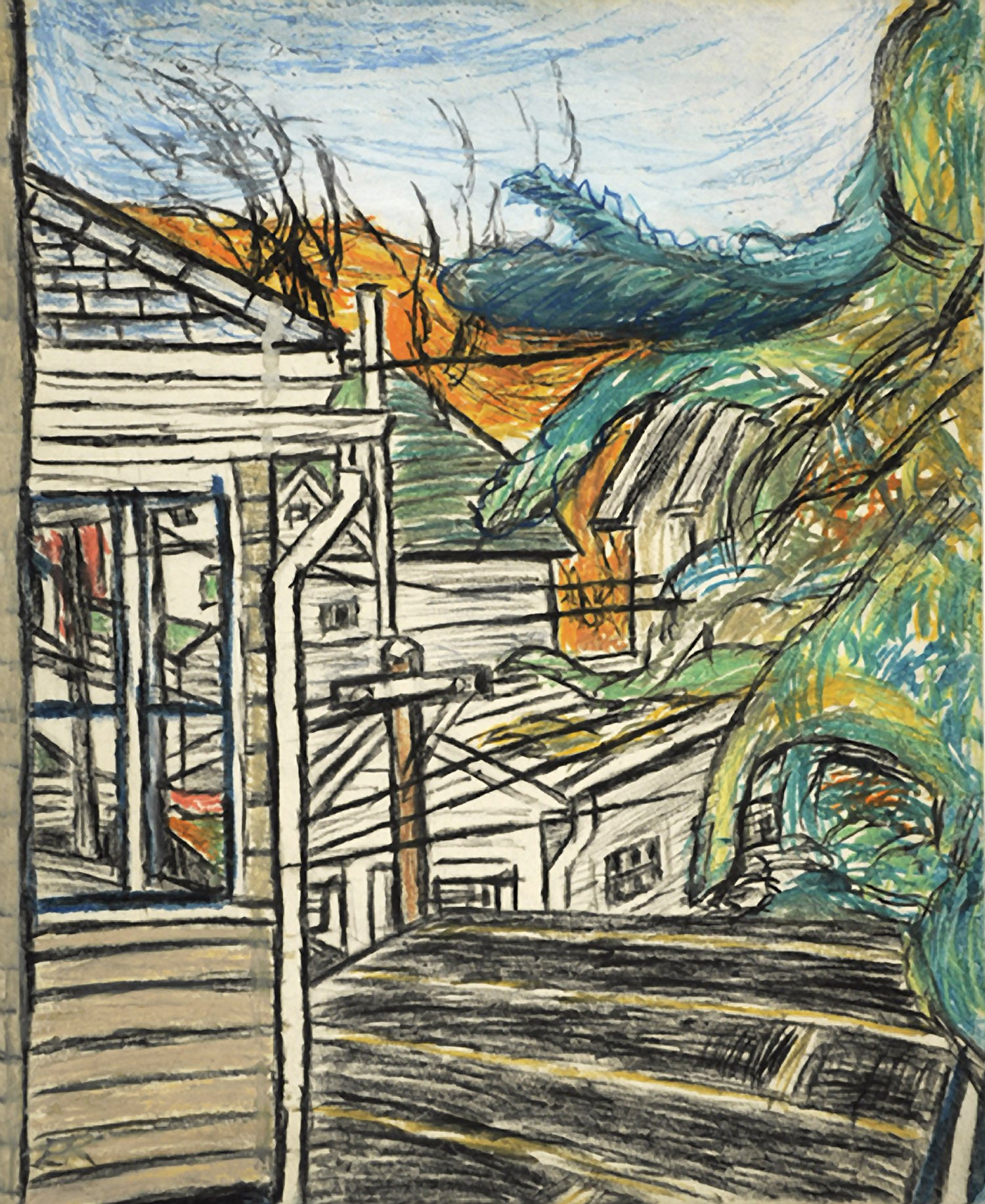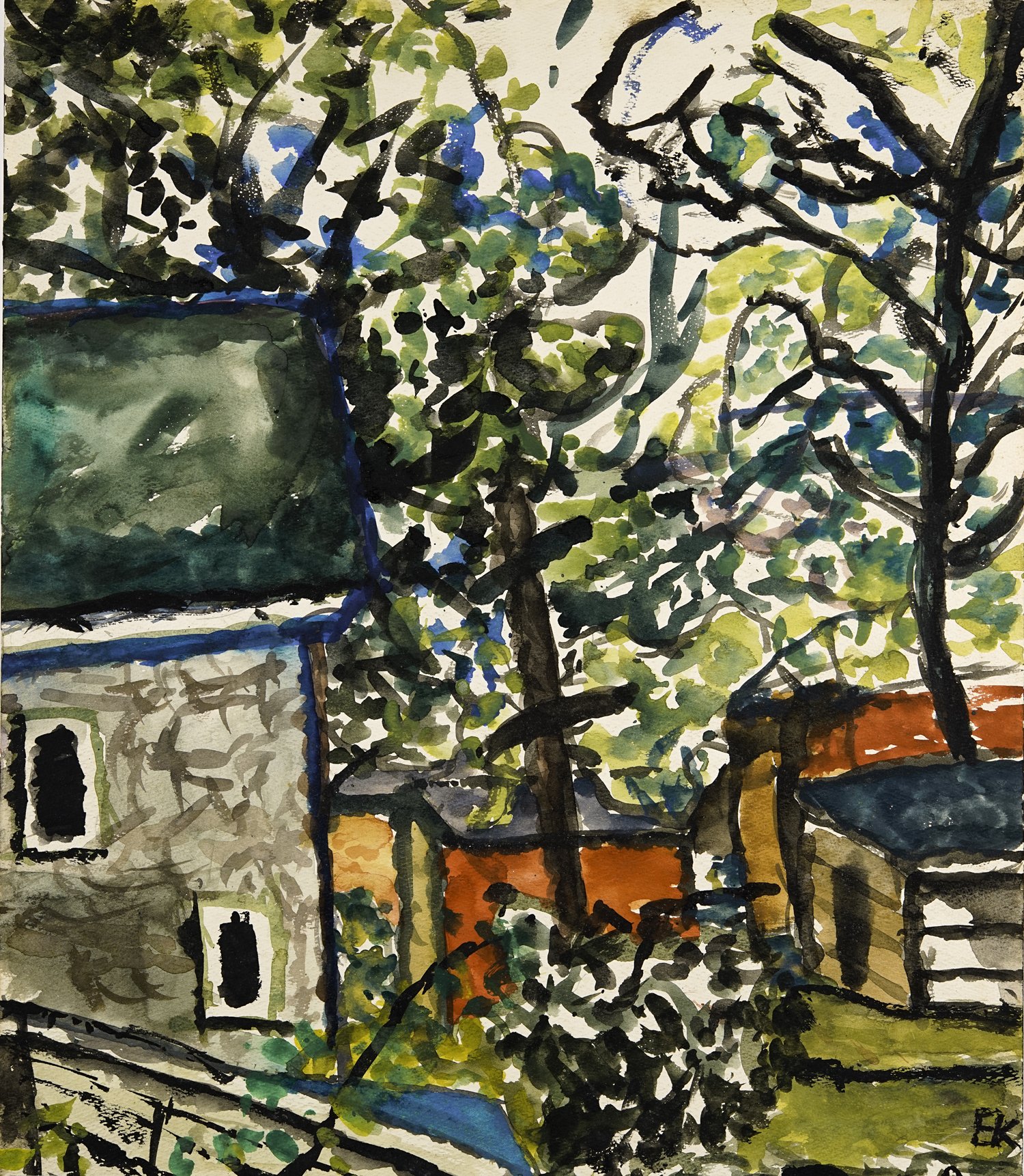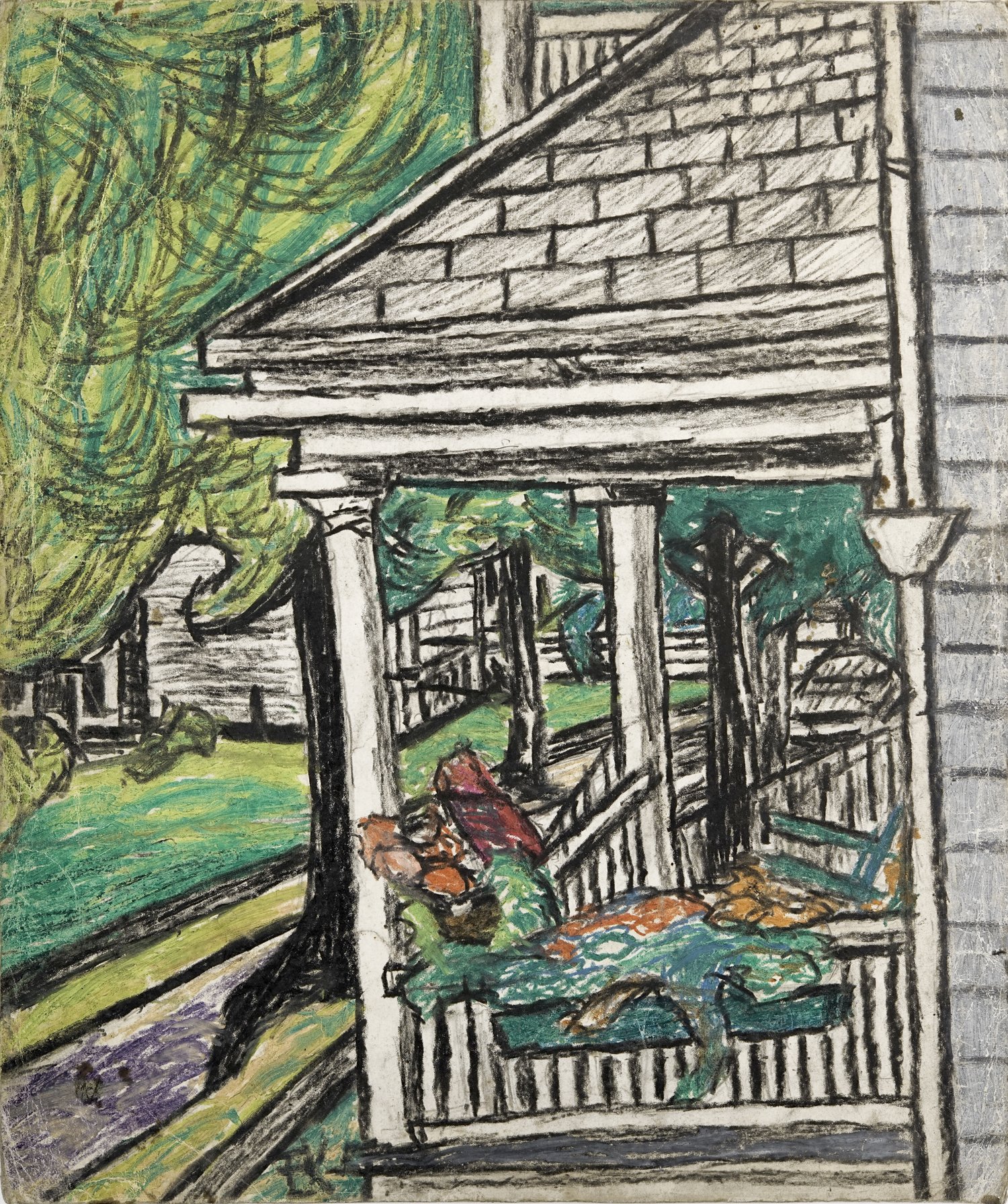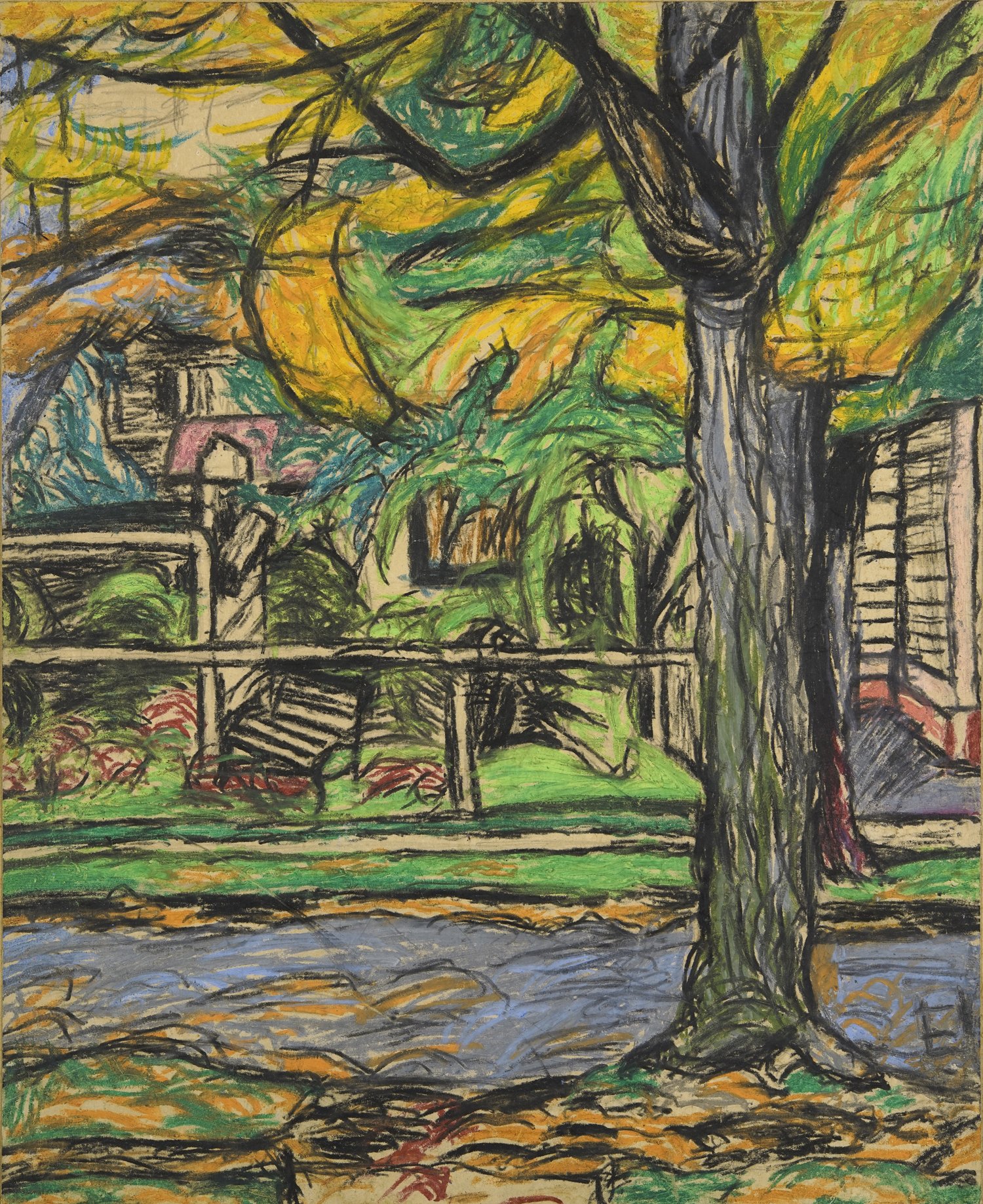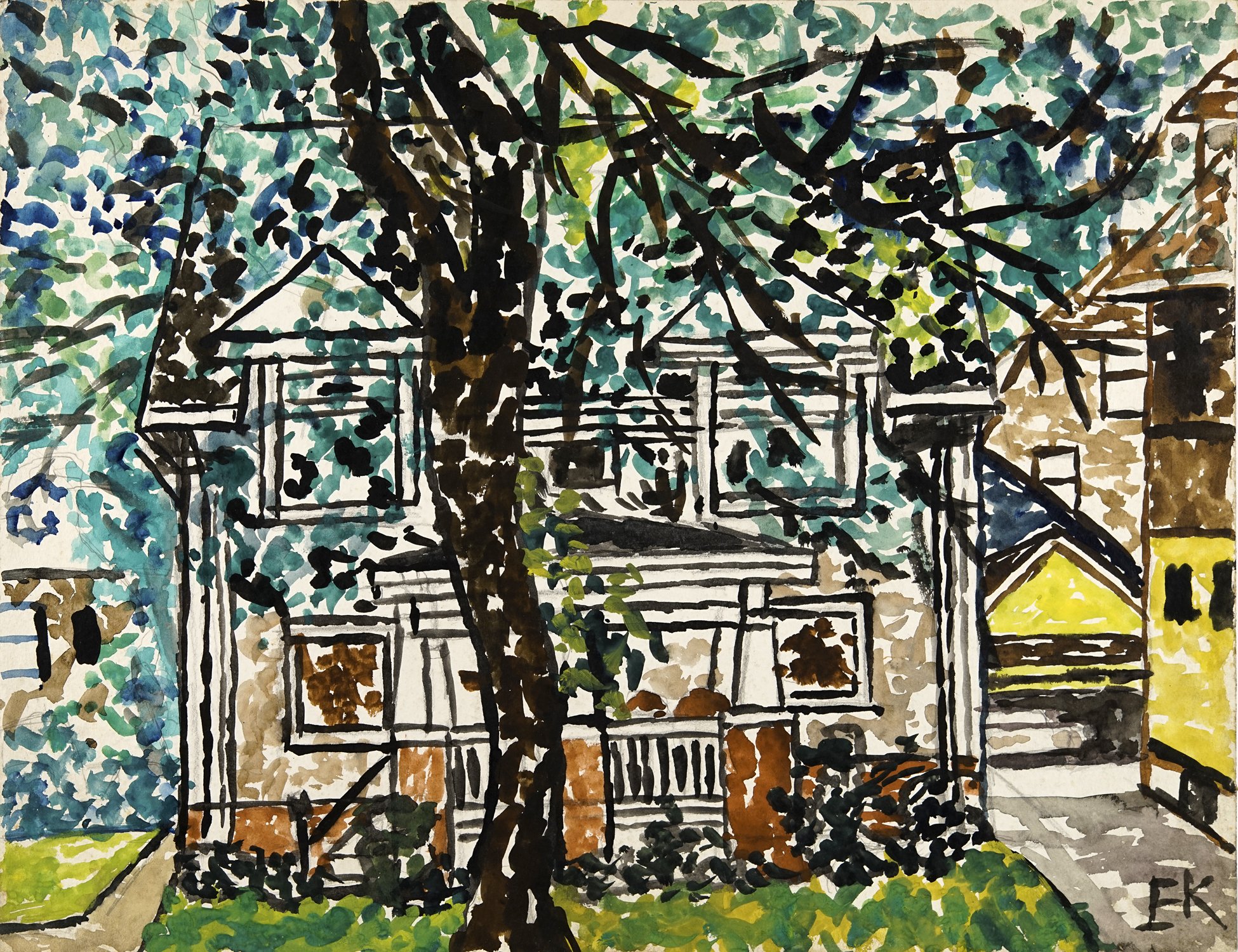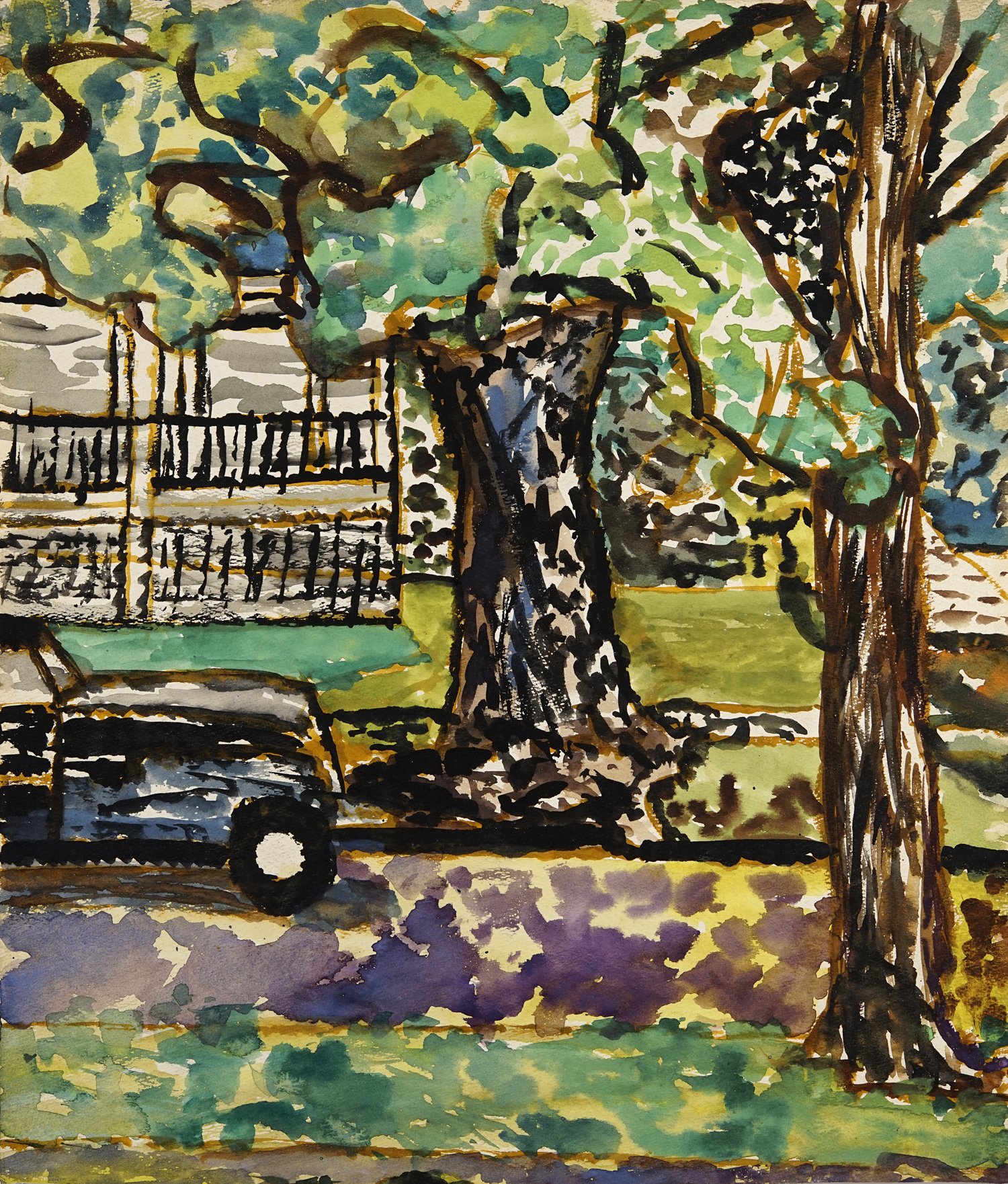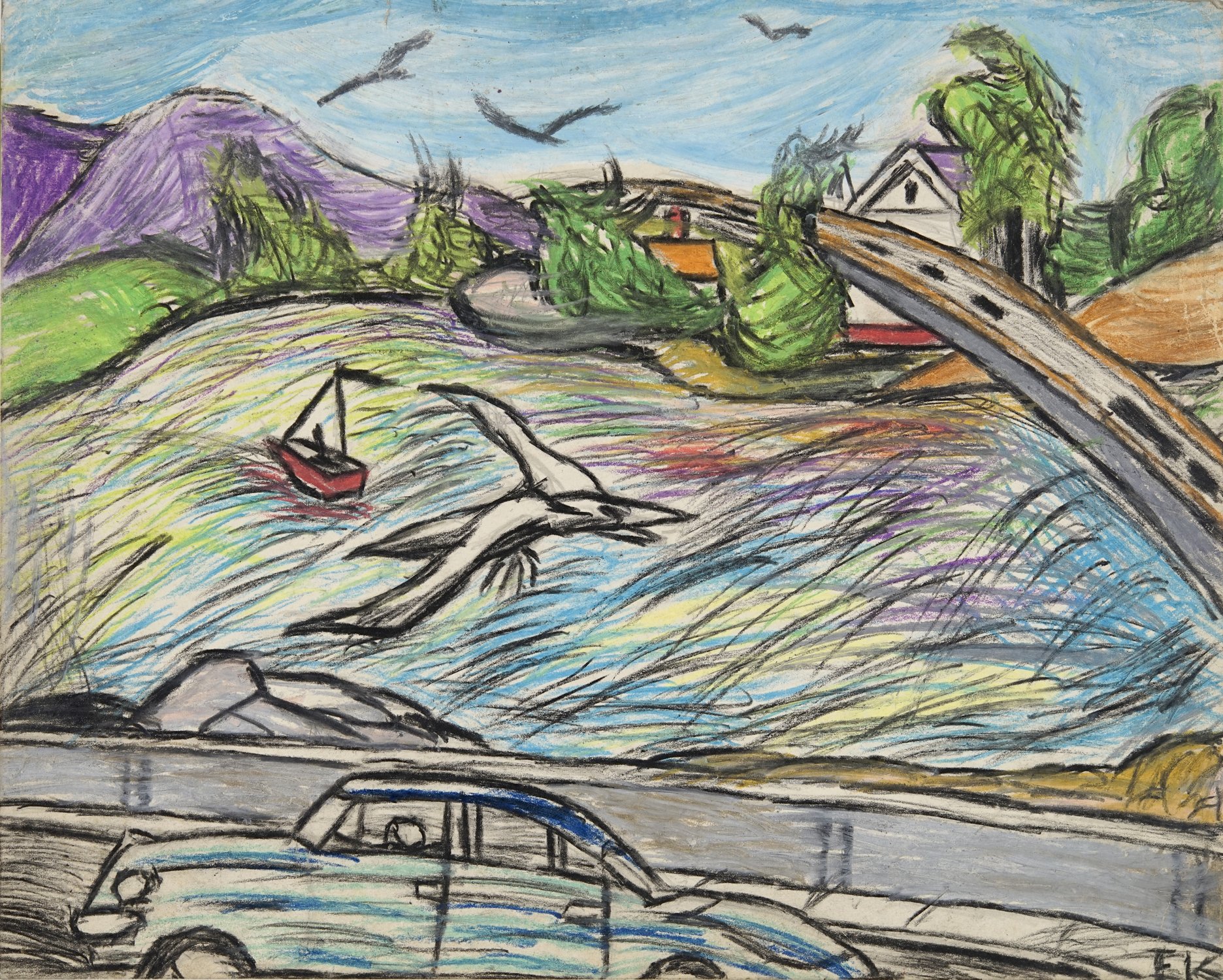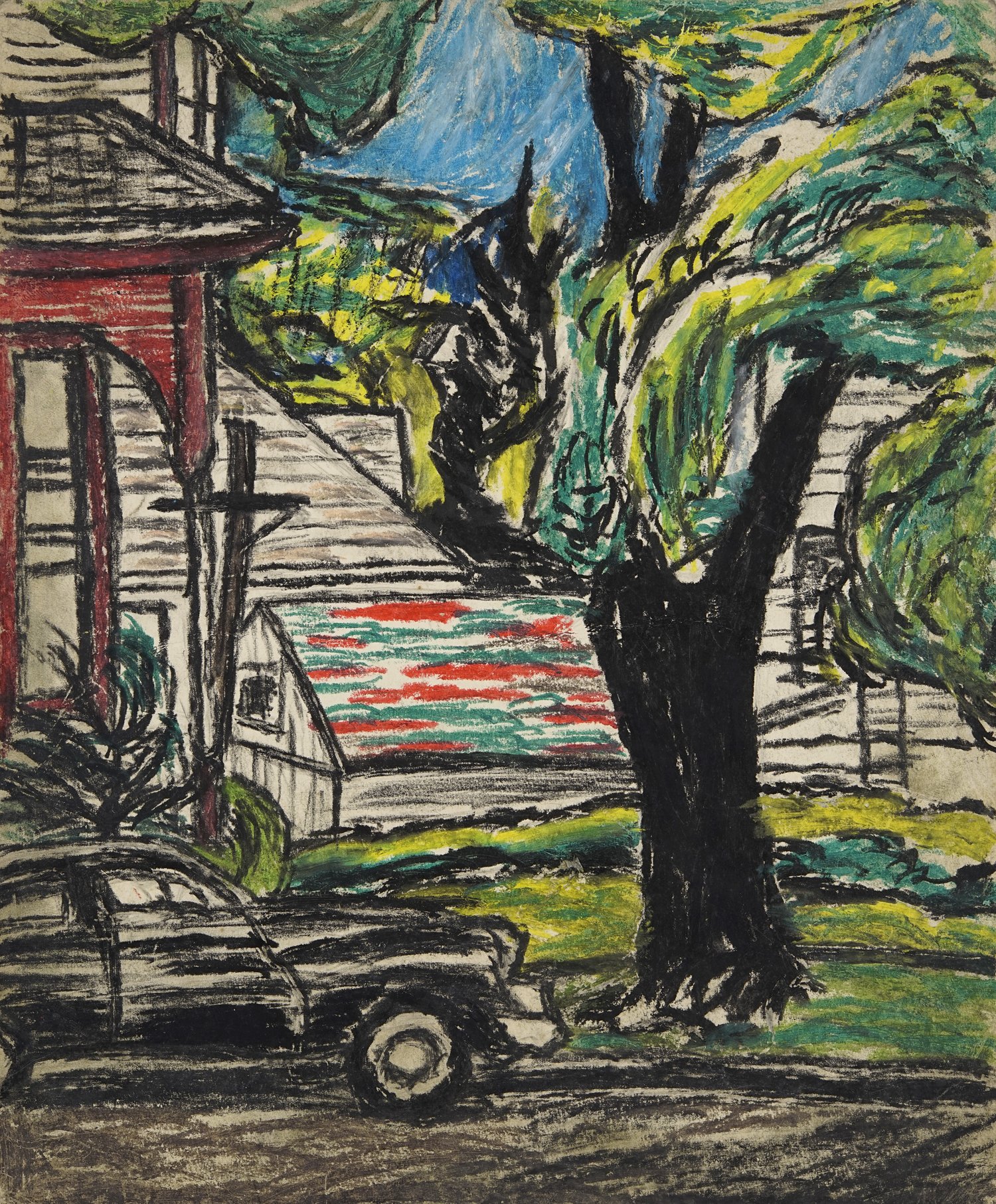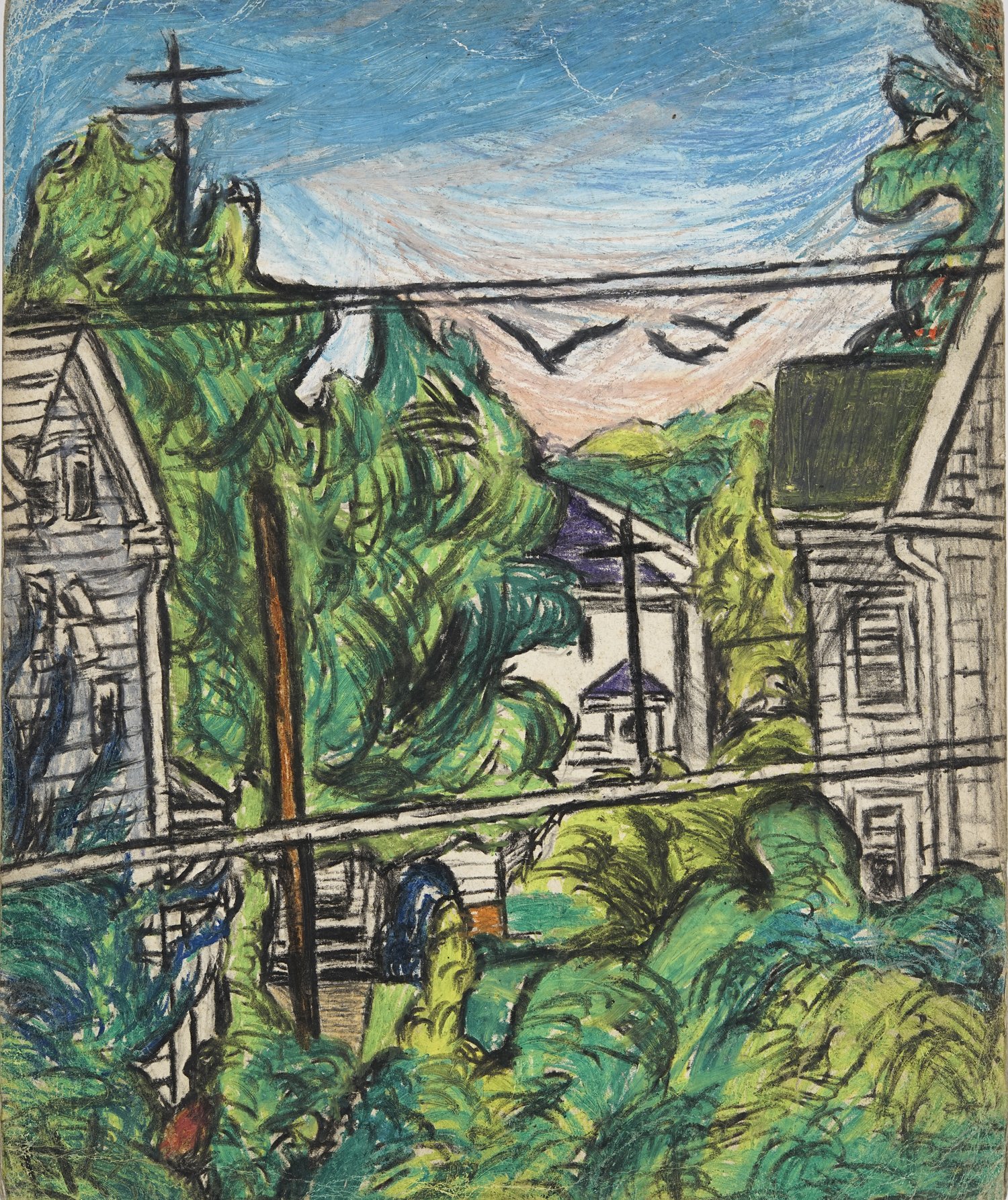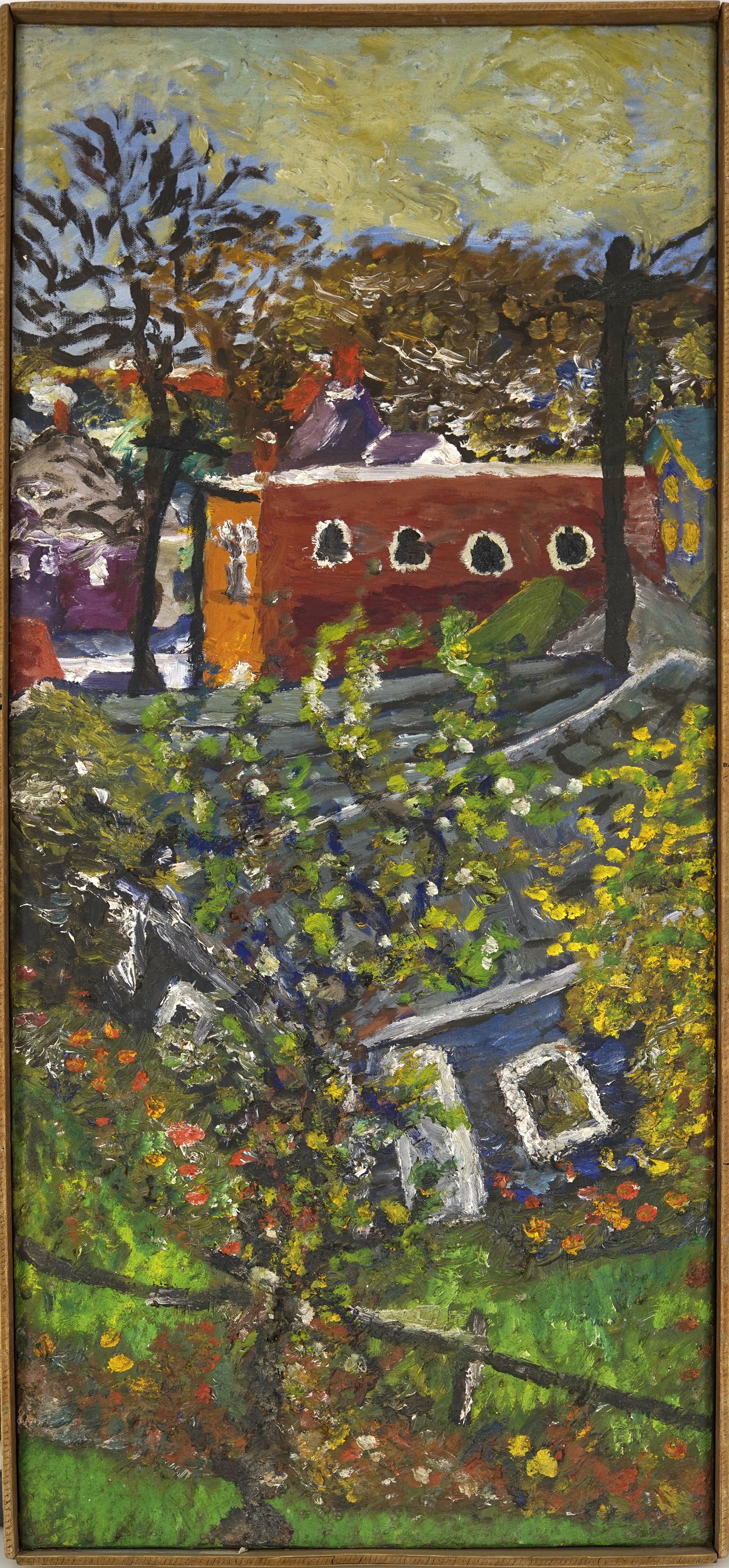About Edward Kwiatkowski (EK-Eddie)
Edward Kwiatkowski, The Chess Game, Holyoke, MA.
Oil on canvas, 36 x 36” c1969
Private collection
Edward Kwiatkowski (EK-Eddie)
1936-2014
Please note: you can opt to view the video (My Uncle Eddie) at the bottom of this page.
Imagine living in a world without the use of your hands, arms or legs? If you work hard, you will find your calling, one in which bodily constraints do not impact your independence. But what if those constraints are so severe that you cannot hold a job? Your CP (Cerebral Palsy) makes daily living a constant challenge: showering, toileting, brushing your teeth, putting on your shoes, getting dressed, shopping for food, eating-all the activities that most people take for granted require the help of many hands. Your family is the key to your survival.
This was the life of the late Edward “Eddie” Kwiatkowski, born in 1936 in Adams, Massachusetts. The fourth of six children, Eddie was born with CP. While he grew up in a close-knit Polish- and English-speaking family, around age 6, he was placed by his parents in an institution which they thought would care for him, the infamous State School for the Feeble-Minded in Belchertown, Massachusetts. This was a time when children with physical disabilities were often grouped with the intellectually disabled, without any recognition of their needs and talents. During what would have been his elementary school years, Eddie remained largely bedridden from birth and received little attention or physical therapy at this institution that mainly served adults.
When his parents saw his deteriorating condition, they removed Eddie from the State School and brought him home. Eddie learned to speak both Polish and English more clearly, walk, and received tutoring at home. Although he often fell down, he was able to use his right foot for small tasks. His family converted their basement into a living space (which would later become both living space and art studio), installed a walk-in shower and an entrance that allowed Eddie easy access to and from their house on Locust Street in Holyoke, Massachusetts. These accommodations would allow their son to grow up in a safe house. Around the age of 14, during a particularly tough winter, Eddie’s worst fall happened on ice, and he suffered bleeding from his head and mouth. Thinking he was going to die, his parents called in the priest. But Eddie survived this fall, as he would many others.
With nothing to do most of the time, one day Eddie started making paper airplanes with his right foot, and, noticing a pencil nearby, picked it up and started drawing. He would spend the next 62 years making art. In one interview he said making art allowed him to escape the confines of his CP. Looking for inspiration, Eddie walked around his Holyoke neighborhood then return to sit on his front porch, in the backyard, or his basement studio and spend the rest of the day drawing and painting, always with his right foot. Combining pencil, pen, crayon, magic markers, oil paint and watercolors, he turned to whatever material or hard surface he could find. Many of his early works were made on the back of commercial flyers or junk mail that arrived at the house. Some were painted on discarded blocks of wood, discarded vinyl tiles, on Styrofoam packing that could provide a clean white surface.
Around the age of 16, in 1952, Eddie began studies in art with teacher and artist Margaret Goddard Holt in her Adults Arts and Crafts Class of the United Cerebral Palsy Association of Springfield, Massachusetts. Ten years later, thanks to the help of Mrs. Holt and several anonymous donors, Eddie was able to spend two years at the Cleveland Institute of Art (1962-1964). There he learned about masters such as Cezanne, Van Gogh and Rembrandt as well as contemporary artists from the 1960s. Although Eddie took classes in traditional drawing, he developed a singular, unique style. While his college sketchbook is filled cover to cover with over 130 drawings, it shows little evidence of his classical studies. Rather, they convey an intense vision that he would continue until his death at age 78 in 2014. Eddie was supported by two other key local mentors, Mervin Jules, Art Professor and Artist at Smith College (who also had CP in his legs), brought Eddie supplies and gave him drawing lessons; and Arthur A. Hart, Chair of the Art Department at Bay Path Junior College, who gave Eddie $200 for oil paints and brushes and set up his first exhibit at the college. Other exhibits followed, both regionally and internationally (see exhibits). The most recent exhibit, called “Luminous: The Art of Edward Kwiatkowski”, was held at the Augusta Savage Gallery at the University of Massachusetts, Amherst in 2017.
Eddie’s cerebral palsy did not prevent him from making art, and over his lifetime he created an extensive body of work numbering over 2,000 pieces. His signature style evokes the French and Dutch artists he first learned about at the Cleveland Institute of Art, but the influences of Jean Dubuffet, Alberto Giacometti, Jim Dine, Claes Oldenburg and others are also evident. His wide range of subject matter includes figures from popular culture such as Snoopy, the Avengers and other Superheroes, along with the New England Patriots, American politicians, and celebrities, horses, nudes, landscapes, urbanscapes, religious icons and portraits.
Not strictly an Outsider artist nor confined to Art Brut, Eddie created an intense private conversation through his art that we are only now just beginning to recognize and understand, eight years after his death. While his CP challenged him, it also motivated his fierce drive to engage and persevere, leaving behind a significant artistic legacy to his luminous life.
I personally became a friend and advocate of Eddie’s work when I first saw his painting The Chess Game in 2006. I was struck by the intensity of the brush work and the birds eye view; a confrontation/conversation possessed by The Chess Game. Since then, I have been documenting, reviewing, cleaning and preserving over 1,600 artworks by Eddie. After Eddie’s passing in 2014, I was asked by his family to retrieve his work out from under beds, behind the oil tank, under the stairs, in the basement, in armoires, stored in bins, boxes and homemade portfolios, and show the world Eddie’s powerful vision. The artworks shown here represent a fraction of the collection. Small in scale compared to contemporary works of art, they reveal Eddie’s intense focus, personal style, and reflections on his long, challenging and luminous life.
The Artist’s Estate is selling the collection to museums, galleries and collectors. A traveling exhibition is being assembled this year. Please contact us if you are interested in the collection for exhibit, purchase or other inquiry.
email: info@airspacegallery.net
To view an award winning documentary of Edward Kwiatkowski created by his nephew Todd Edward Kwiatkowski, visit the Youtube link below:
https://youtu.be/N6VdPUbsgEg
Mini Documentary link below
